

How to spend a weekend in León, Spain: attractions, architecture and tapas crawls
Home » Destinations » Europe » Spain » How to spend a weekend in León, Spain: attractions, architecture and tapas crawls
This website uses affiliate links which may earn a commission at no additional cost to you. As an Amazon Associate I earn from qualifying purchases.
Updated: 8th January 2023
León, situated in Spain’s northwestern Castile and León region, is a refined city of architectural treasures and tempting tapas. These two magic ingredients ensure that a weekend in León is a treat for both the eyes and the taste buds.
A long-standing stop on the Camino de Santiago since the 10th century – León Cathedral is part of its UNESCO listing – it’s a well-traversed city with plenty of history.
From admiring the modernist Casa Botines, one of Gaudí’s only works outside Catalonia, to marvelling at the frescoes in the Royal Pantheon, León’s stacked architectural credentials are the city’s main draw.
Throw in the decent bar and dining scene – the tradition of free tapas is still alive here – and you’ve got an ideal-sized city break. A little over two hours by high-speed train from Madrid, this is one of Spain’s best cities to visit .
Here’s how to spend a weekend in León, Spain.
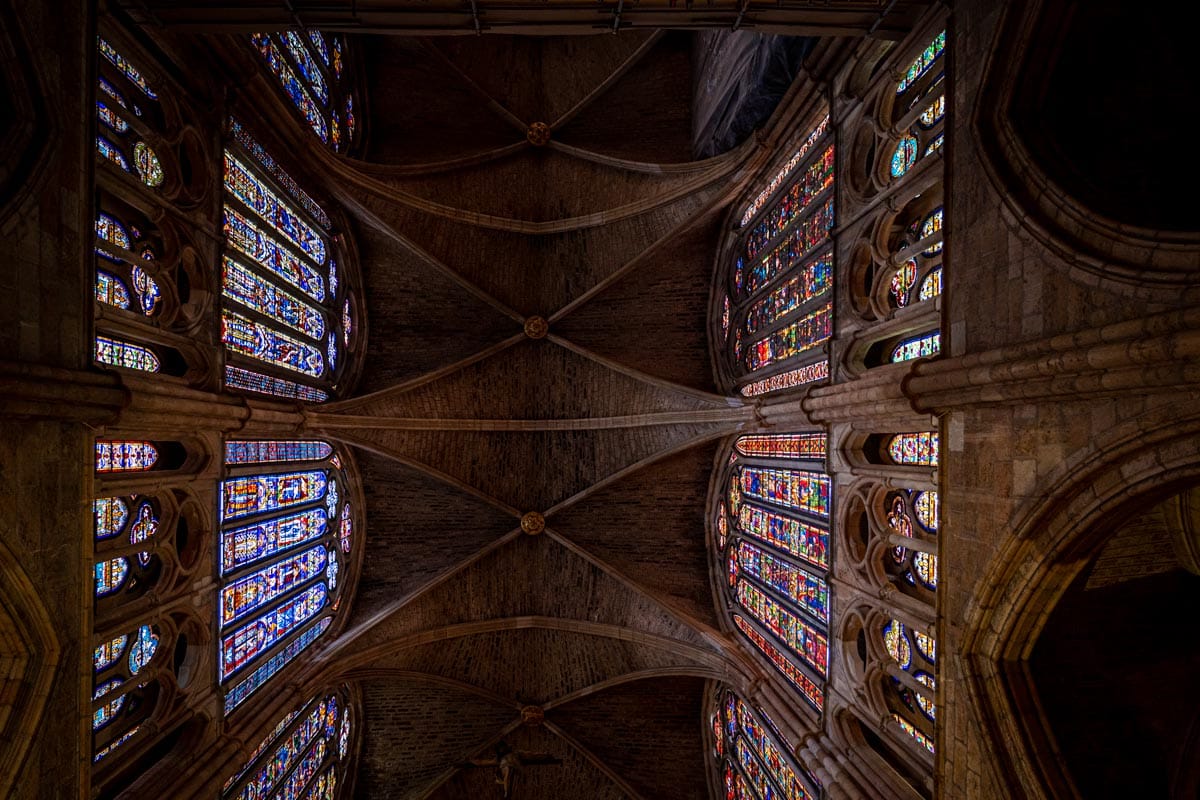
In this article...
Day one: arrival and orientation
Once you’ve arrived and checked in for your weekend in León – a heritage hotel such as Hotel Real Colegiata San Isidoro is a good choice if you’re seeking a special stay – set out on a little introduction to the city, before devouring León’s celebrated cuisine.
All the suggestions and opening hours here are based on a Friday arrival and Sunday departure. Still, it’s always best to check opening times (and remember Spain’s afternoon siestas) in advance.
Late afternoon: Introduction at the Museo de León
Paid – Cheap | Closed Monday | Website
Housed in the curiously round-fronted Pallarés building, León’s city museum offers an informative and relatively brief introduction to the city.
The space tells the story of the city and surroundings from The Stone Age until contemporary periods. Exhibits such as Roman limestone pillars and sacred arts paint a picture of times gone by. There is also a second part of the museum in the Convent of San Marcos, which we’ll visit tomorrow.
The museum closes at 7 pm in winter and 8 pm in summer. If you’re arriving later in the evening, you can squeeze this in on Saturday morning.
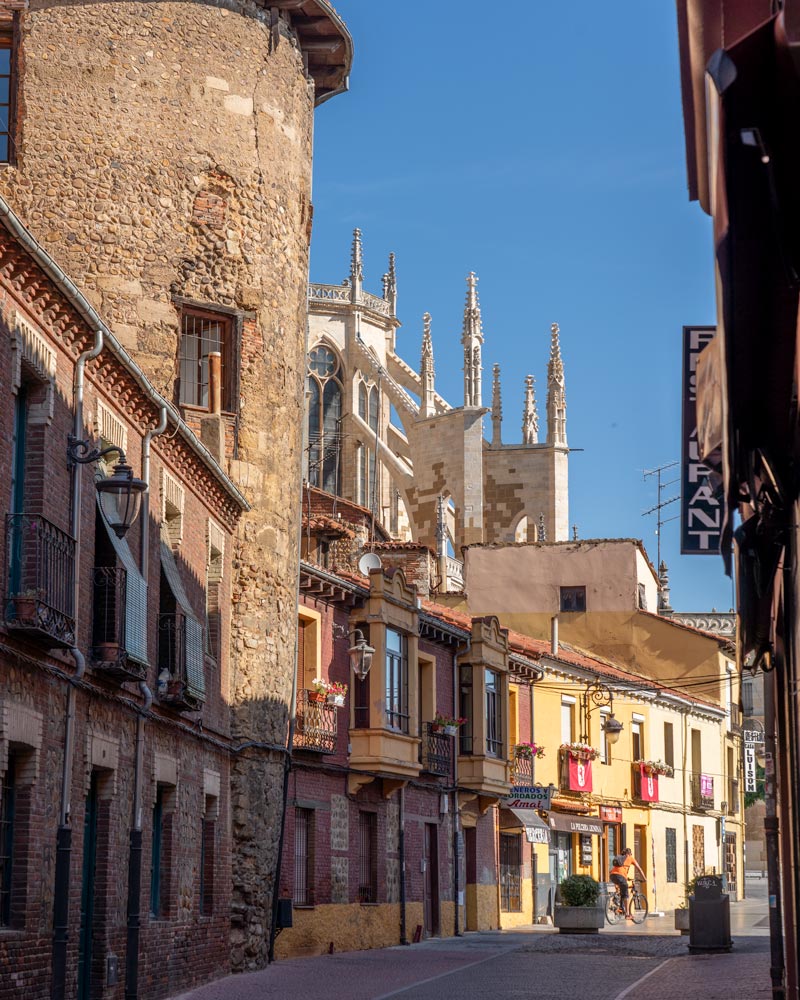
Evening: Tapas crawl in Barrio Húmedo
León’s pedestrianised medieval centre is a delight, especially come evening when it’s time to bar hop.
By dusk, the Barrio Húmedo – literally, the wet neighbourhood – is the place to be. There are heaps of quality bars and restaurants, and the vibe feels local rather than touristy.
León’s other USP is that most taverns will offer traditional free tapas with your drink. This is a rarity in the Castille and Leon region. Meat is beloved, so vegetarians be warned. Morcilla (blood sausage), albóndigas (meatballs), and various pork dishes are typical menu features. For a more filling post-tapas dinner, Cocido Maragato , a chickpea and meat stew, is a choice.
Solid choices for tapas are La Ribera, Four Lions Brewery and La Trébede. For something more substantial, head to El Patio or El Romántico. Post-feast, follow your ears to the liveliest bar and soak up the atmosphere to the early hours.
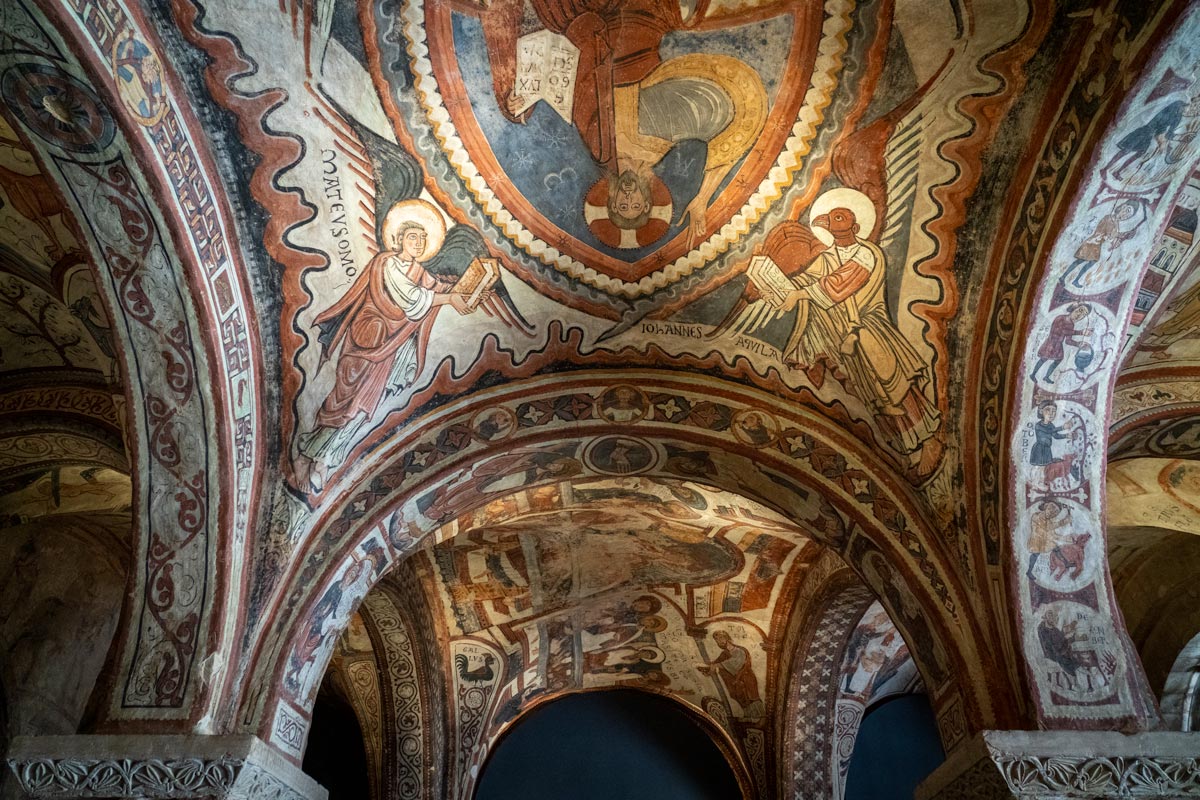
Day two: things to do in León, Spain
Spend your Saturday soaking up the atmosphere, flavours, and most striking architecture of the city.
Morning: Tour the Basílica de San Isidoro
Paid | Book guided tours in advance | Closed Sunday afternoons, and Monday | Website (ticket sales)
Start your deep-dive into León trio of impressive architectural gems at the Royal Pantheon, part of the larger Real Colegiata de San Isidoro. This incredible building also houses the Basilica and museum.
The star is the Panteón Real, known as the ‘Sistine Chapel of Romanesque art’. Incredibly well-preserved frescoes depicting religious scenes adorn the vaulted ceilings, looking down on the chapel’s sarcophagi. Dating from the 11th Century, the artwork is mesmerising.
If you join one of the guided tours, they will talk you through the stories shown on the ceiling. There are some surprises, such as mountain animals and dogs. It’s unfathomable that, at one point, this room was used merely as a stable.
Beyond the breathtaking frescoes, you can also visit tour much of the complex. From 1000-year-old silver jewels and a golden chalice to the aged-library and main religious hall, you’ll want to allow at least 90 minutes for your tour of one of Northern Spain’s best places to visit .
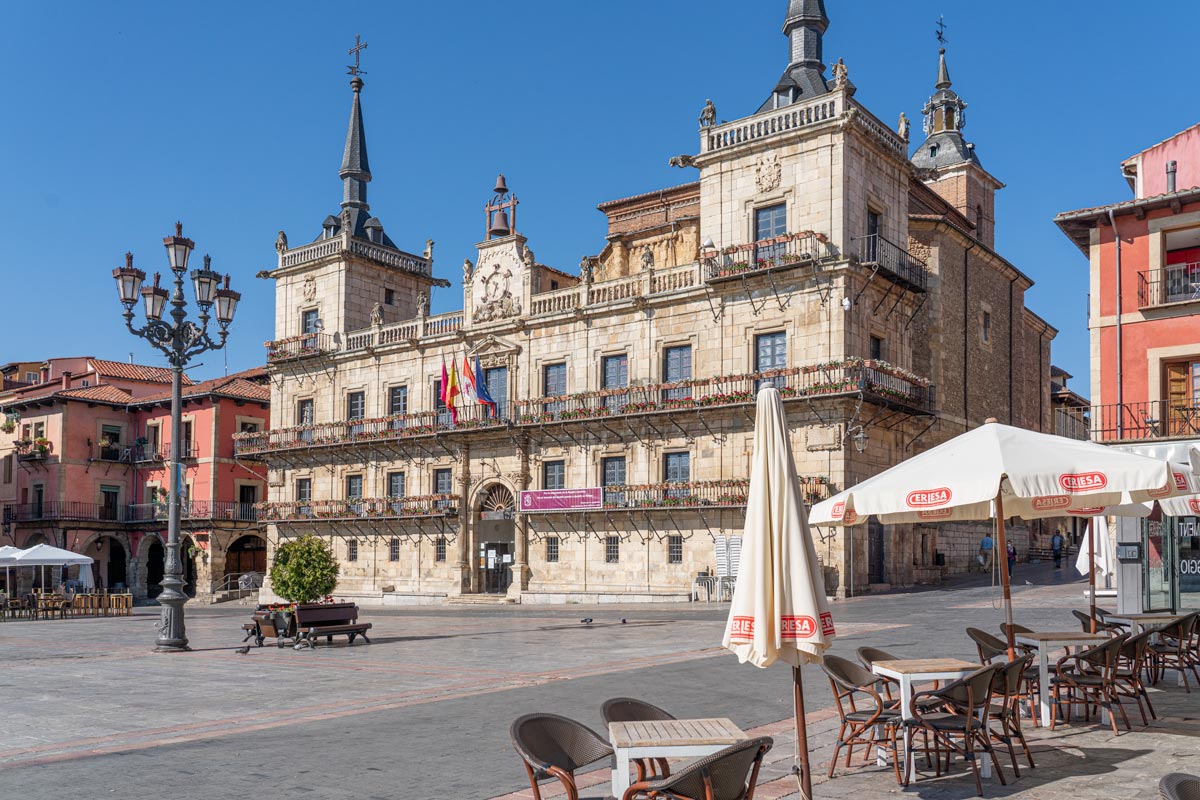
Lunch: Typical dishes and wines on a plaza
For lunch, head to one of the restaurants occupying the city’s squares. Plaza Mayor and Plaza San Martín are good bets. While you’ll find plenty of delights on the food menu, be sure to browse the wine list too.
León has around 40 wineries in its designated domain and has been producing under DOP status since 2007. Still, the wines and production date back long before, and there are some exciting flavours to be had.
The native grape – Prieto Picudo – is a dashingly dark grape which produces a deliciously minerally wine with notes of berries and liquorice. If you prefer white, the region’s limited production of Albariño is the go-to choice.
As production is minor compared to most of Spain’s wine regions, the wines of León are not so easy to find when abroad. Thus, now’s your chance – and a perfect excuse for a slightly boozy lunch.
Prefer to visit the vineyards? Book this 4 hour Valdevimbre winery buggy tour (with pick up from León)
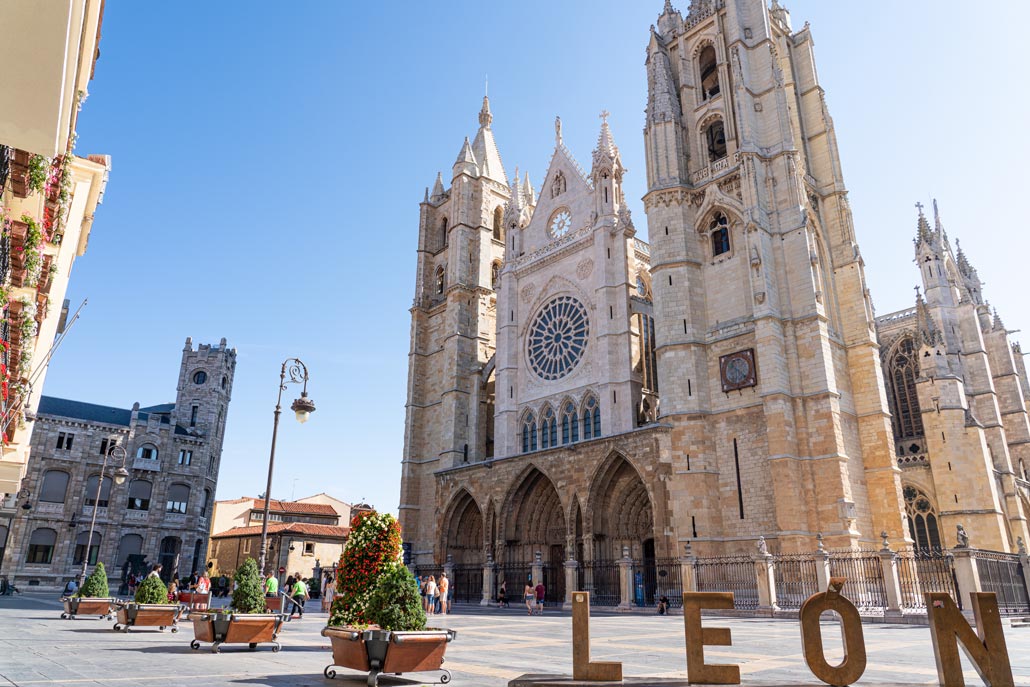
Afternoon: Marvel at León Cathedral and the cloister
Paid | Open daily, closed for lunch and during mass | Website
After a long lunch – the Cathedral doesn’t re-open until 4 pm – it’s time to see some exquisite stained glass windows, hopefully with the late-afternoon sun adding to their appeal.
As soon as you step into León Cathedral, you’ll see what it’s called the ‘House of Light’. These 1800 square meters of stained glass windows are some of the world’s most extensive and impressive, second only to France’s Chartres Cathedral. The rose windows, and detailed depictions when viewed up close, are outstanding.
Many of these original windows date back to before the 1700s, with the oldest painted in the 11th century. Sadly, some have been lost over the years. However, an extensive project to repair and re-touch each one is ongoing.
Having seen its fair share of troubles – part of the building collapsed due to poor foundations – it’s a miracle these artworks remain at all. If you upgrade your ticket, you’ll also be able to visit the museum and cloisters. The latter’s intricate ceilings and statues make the extra few euros a sound investment.
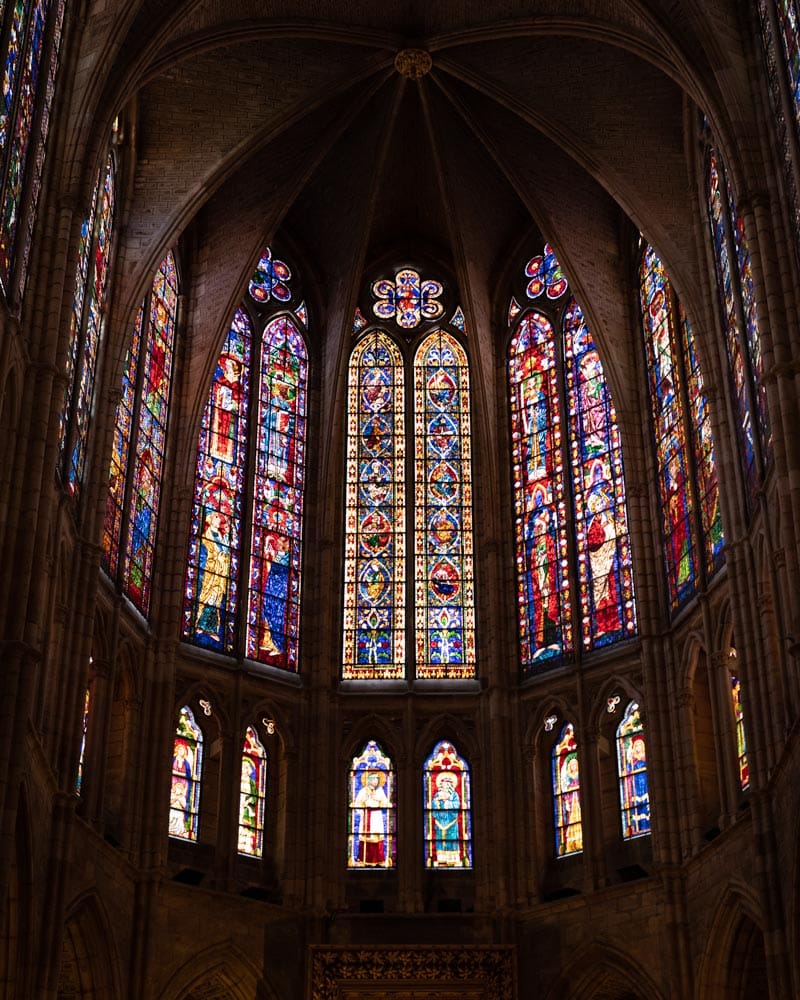
Late afternoon: Self-guided walking tour
Before the sun disappears for the day, enjoy a golden hour stroll around the city.
Admire the Palacio De Los Guzmanes (there are some brief guided tours to the patio inside if you wish to venture inside). See how the old Roman Walls have become part of the city’s fabric, with homes and shops built into them. Then, tour Leon’s collection of quaint squares, the Plaza de Santa María del Camino being a particular favourite.
Away from the centre, stroll along the Bernesga River towards the Convento de San Marcos. This hulking Renaissance building, now a luxury hotel, is a sight to behold. If you arrive before 7 pm, you’ll be able to enter part of the building which houses the archaeological collection, the secondary outpost of Museo de León.
With much of the building now in use as a luxury hotel, exploring freely inside the grand cloisters is restricted to staying guests only. So, if you want an all-access pass, you’ll want to make this your weekend in León hotel of choice.
Prefer a guide? Book this 2.5 hour walking tour
Evening: Enjoy an opulent dinner in a monumental setting
Splash your cash on Saturday night and enjoy an upscale dinner in one of the city’s heritage properties.
The restaurant at Parador de León is a grand choice, especially if you’ve ended your walking tour here. It will also get you inside the hotel if you want to peek around. Sadly, the dining room lacks a little charm, as it’s part of the modern conversion. Still, the premium dishes are delicious, and the old wooden doors and arched windows help retain something of an opulent feel.
An alternative is the Restaurant at Hotel Real Colegiata San Isidoro . The restaurant takes over the attractive courtyard on warmer weekend evenings, and live music adds to the evening. While the food here was more traditional and down to earth, it was excellent quality.
Afterwards, it’s time for round two in the bars of Barrio Húmedo – cheers!
Day three: what to do in León, Spain
After a lazy Sunday breakfast, dive a little deeper into León’s creative scene, and visit one of Gaudí”s few creations outside of Catalonia.
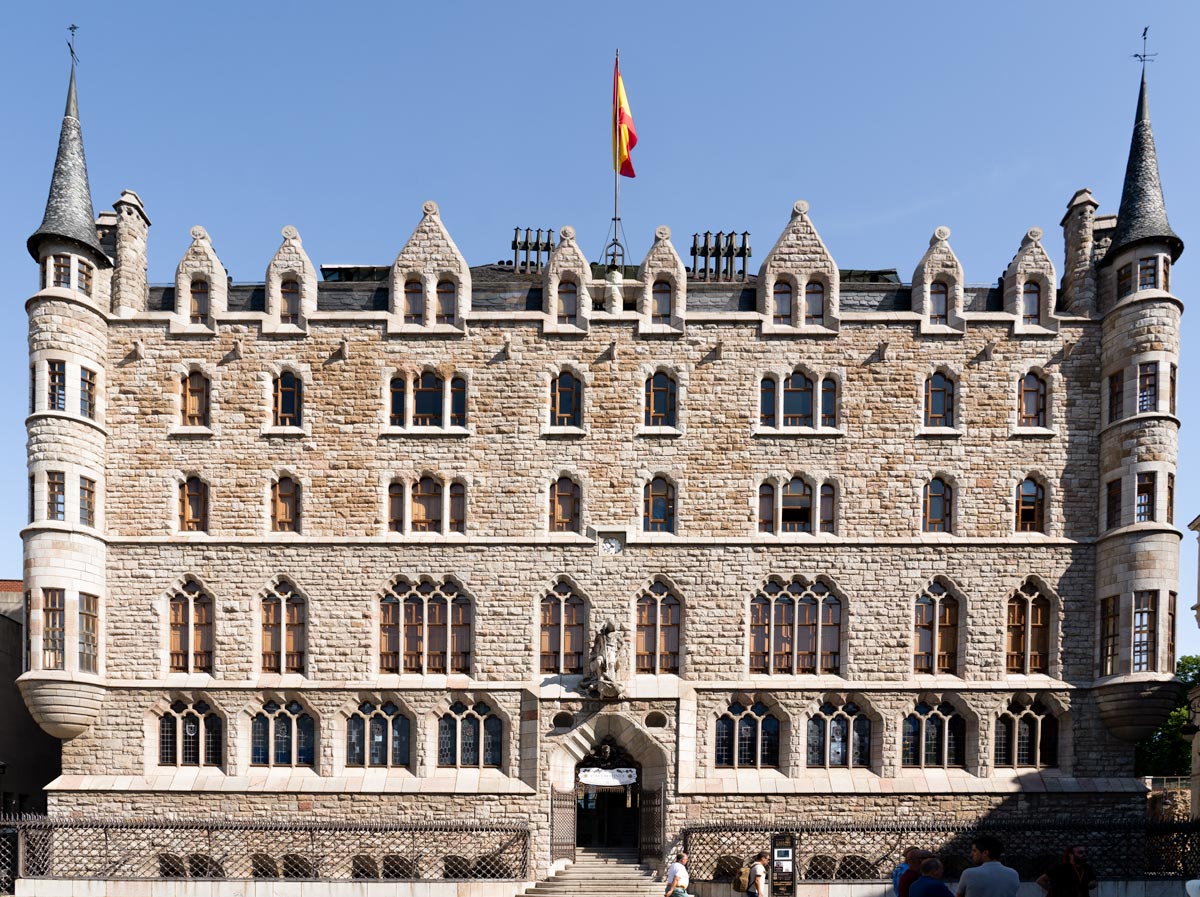
Morning: See Gaudí’s Casa Botines
Paid | Closed Tuesday and Wednesday morning | Website (ticket sales)
Bringing a little architectural magic to the Barrio Romántico (Romantic Quarter) is Casa Botines, one of Gaudí’s few works outside of Catalonia.
León province is actually home to two of his creations, the second being the whimsical Episcopal Palace in the nearby town of Astorga, which makes for a great side trip if you spend a long weekend in León.
If you’ve envisioned something flamboyant like Barcelona’s Casa Batlló , scrap that thought. The design is a far cry from his usual style. Straight lines and the somewhat typical facade of the Modernist building seem ‘simple’, but it’s not without its quirks.
Constructed to be a house and fabric factory, the plans were slightly limited by the owner’s ideas rather than the artist’s imagination. Yet, when you venture inside the now museum and join a guided tour, they’ll point out some of his signature inclusions. The ground floor is dedicated much to the building’s history and design process. On the upper levels, you’ll find more insight into both Gaudī and how the two homes here used to be.
Lunch: Head underground to El Modernista de Ezequiel
In the basement of Casa Botines, you’ll find the modern and streamlined El Modernista de Ezequiel restaurant.
Sadly, it isn’t Gaudí themed, so don’t come here expecting elaborate dishes decorated with flamboyant designs. Instead, the team offer a solid choice set-course lunch based on reliable local flavours, such as roasted peppers, quality pork items, and regional cheeses.
The drinks list also highlights León wines alongside a decent choice of cocktails.
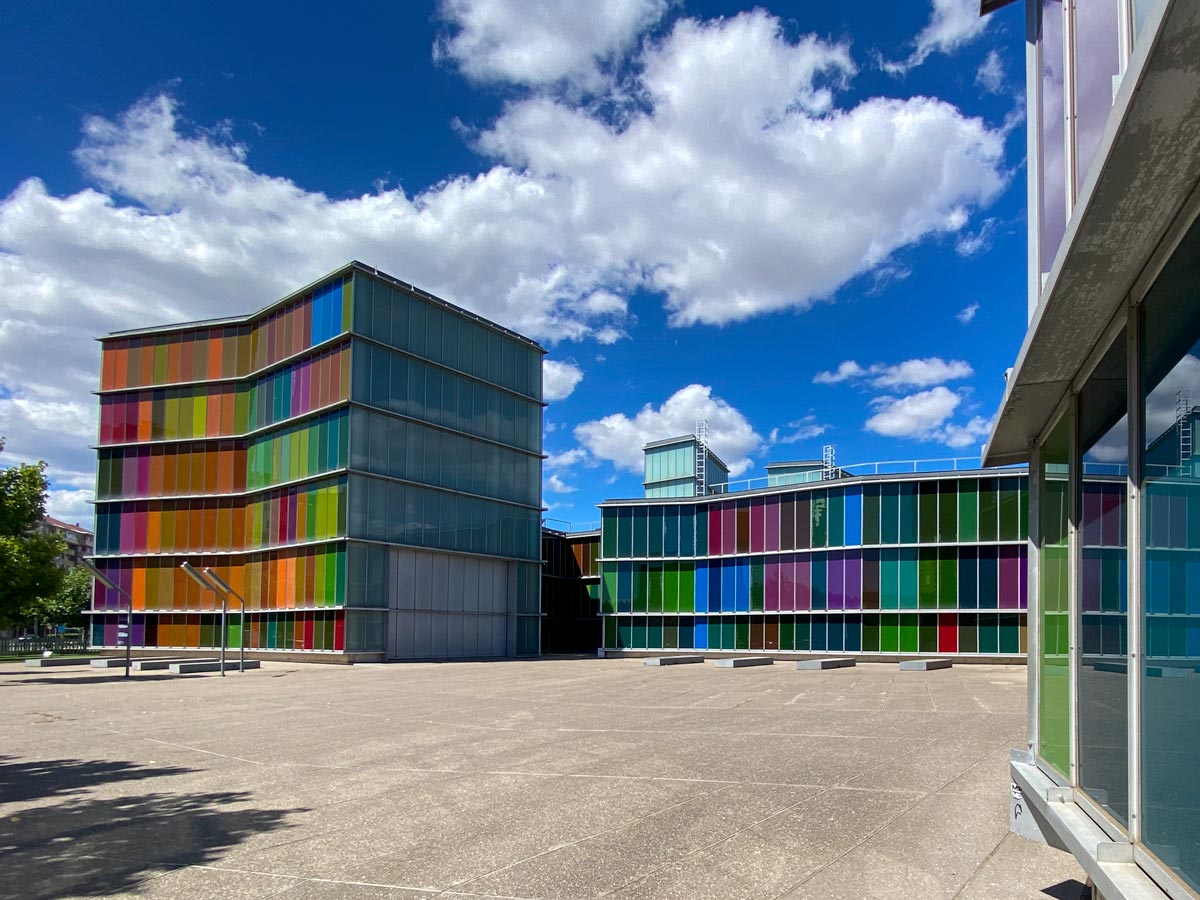
Afternoon: Visit the Contemporary Art Gallery
Paid | Closes Monday, and daily for lunch | Website
If you still have time before departure, consider spending an hour or two in MUSAC, the regional contemporary art gallery.
Easily distinguished by its multi-coloured glass panels and modern frontage – a stark contrast to the city’s heritage buildings – the relatively small collection adorns five different rooms.
Representing some 400 artists, the contemporary pieces cover an array of creative disciplines, with temporary exhibitions usually focusing on an often social or political narrative.
If you didn’t manage to make it into the Convent of San Marcos the previous day, this is also nearby so there’s a second chance to visit and enjoy a grand end to your weekend in León.
When to visit León, Spain
Summer is, of course, the most popular time to visit Spain for Brits. However, the exceptionally high temperatures can sometimes feel a little unbearable. The same can also be said of winter, when the mercury plummets, sometimes falling below freezing at night.
Luckily, being a fantastic city break with plenty of museums and impressive architecture to tour, there isn’t a wrong time to visit León. However, if you can, I suggest plumping for late spring or early autumn. This will hopefully mean fewer crowds, better deals on accommodation, and more balanced weather.
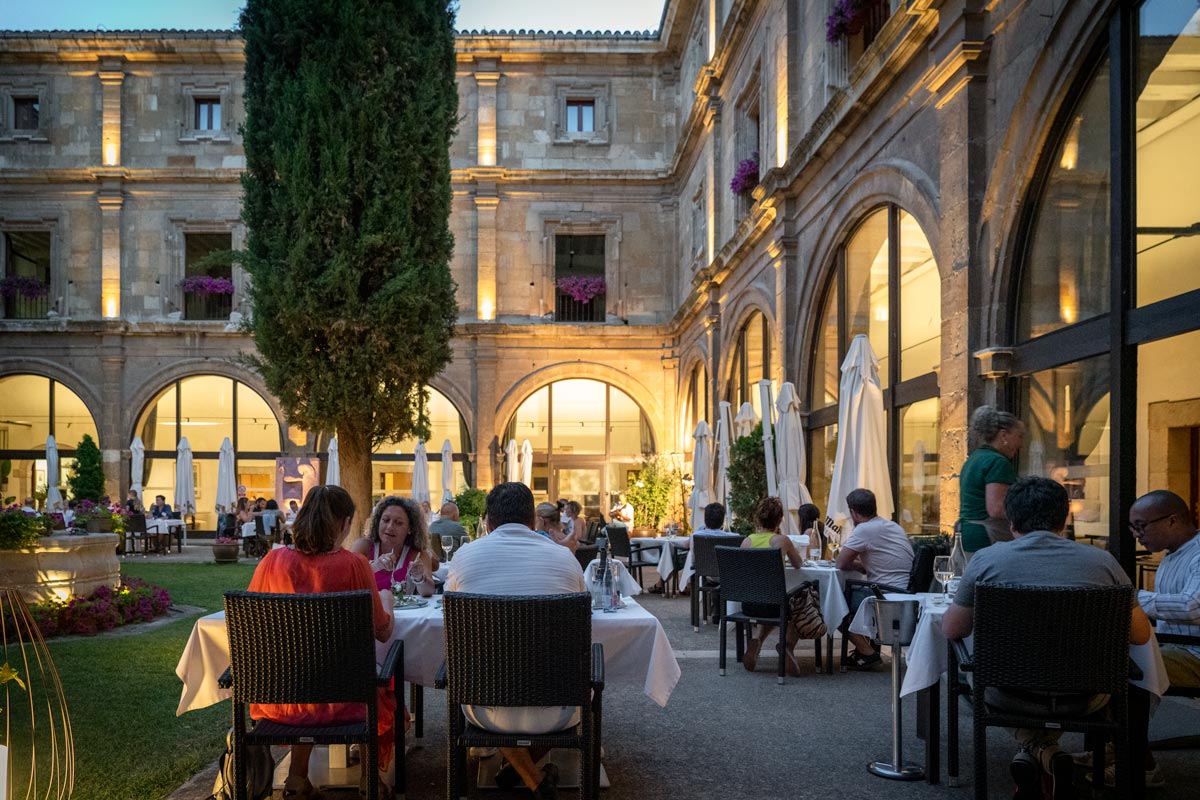
Where to stay in León, Spain
León is a fairly large city and an established tourism destination, so you’ll have a reasonable amount of choices regarding accommodation for your weekend in León.
Budget – Palacio Real Hostel There aren’t too many budget options in León, but this simple and modern hostel has clean and basic dorms and doubles.
Mid-range – FC Infantas de León Fair priced and well-furnished rooms in the city centre complemented by a rooftop terrace with cathedral views.
Luxury – Hotel Real Colegiata San Isidoro For something a little special, opt for this restored and converted basilica. While the historic building is a grand setting to stay in, the prices are relatively fair thanks to the 3-star rating. I enjoyed my stay here, and you can choose between more modern and renovated rooms in the new quarter and chambers in the older section. The music evenings in the courtyard are also great for dinner. The Parador de León is another luxury heritage option, but not so centrally located.
How to get to and around León, Spain
Exploring the city centre is easily done on foot, especially with much of the historical centre pedestrianised, so you likely won’t need to use any public transport during your weekend in León. Below, I’ve highlighted how to arrive from Madrid or further afield.
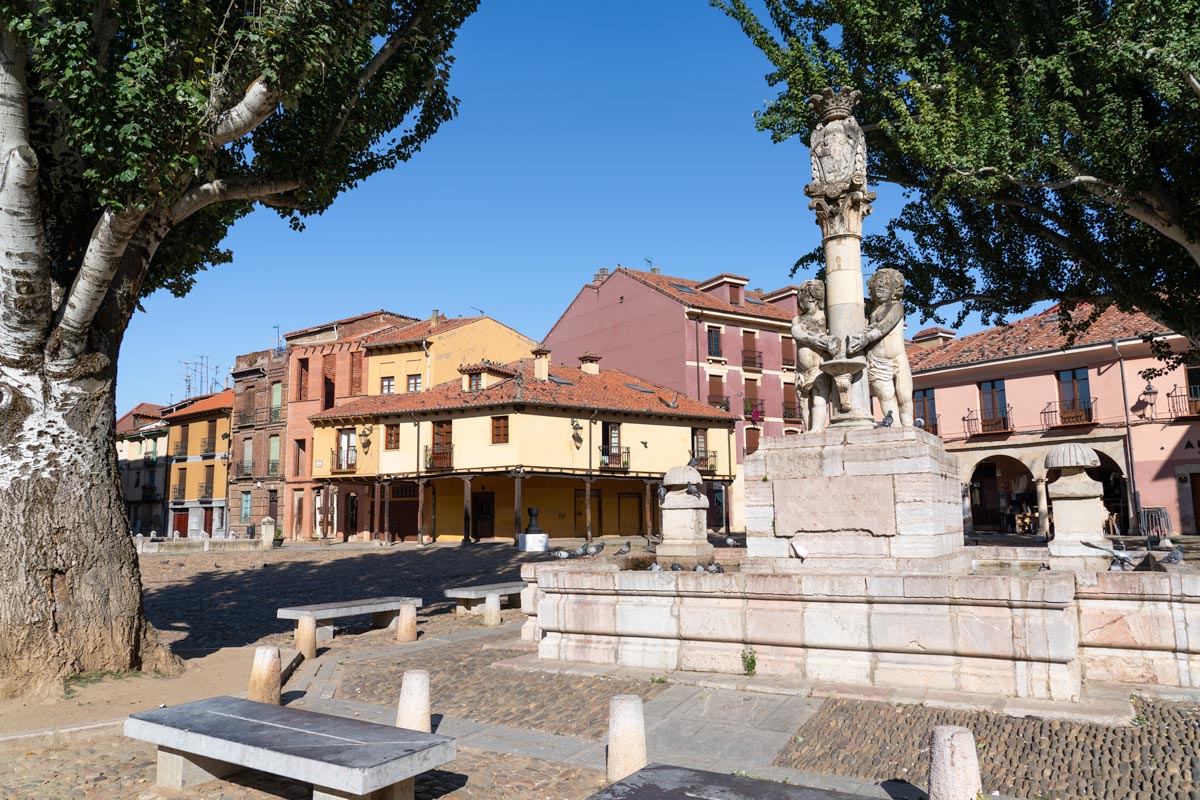
Travelling to León by train and public transport
If you’re coming to León elsewhere in Spain , then the train service is likely the best connection, with buses being a decent alternative. From Madrid, the journey by train takes around 2 hours on Renfe’s AVE service (high-speed rail).
Train tickets, especially for long-distance journeys, which you should book in advance, can be made directly on the Renfe website (usually cheaper) or using one of the popular and best travel apps such as Omio . ALSA is the leading bus company for intercity travel in Spain, and FlixBus is good for international bus connections.
BlaBlaCar , a car-share service (where you book a spare seat in the car of someone already making a journey), is also very popular in Spain and worth checking out if you struggle to find a direct connection from your starting point.
Travelling to León by plane
León does have its own airport, just a few miles from the city; however, it only offers domestic connections. Oviedo/Asturias is the nearest international airport with a growing number of links, including London.
Santander and Bilbao’s airports are other options (see connection details below), although I’d suggest Madrid as the best. Not only does it have a huge choice of flights from all over the world, but the direct train connection to León is also quick – only two hours – if using the high-speed rail service.
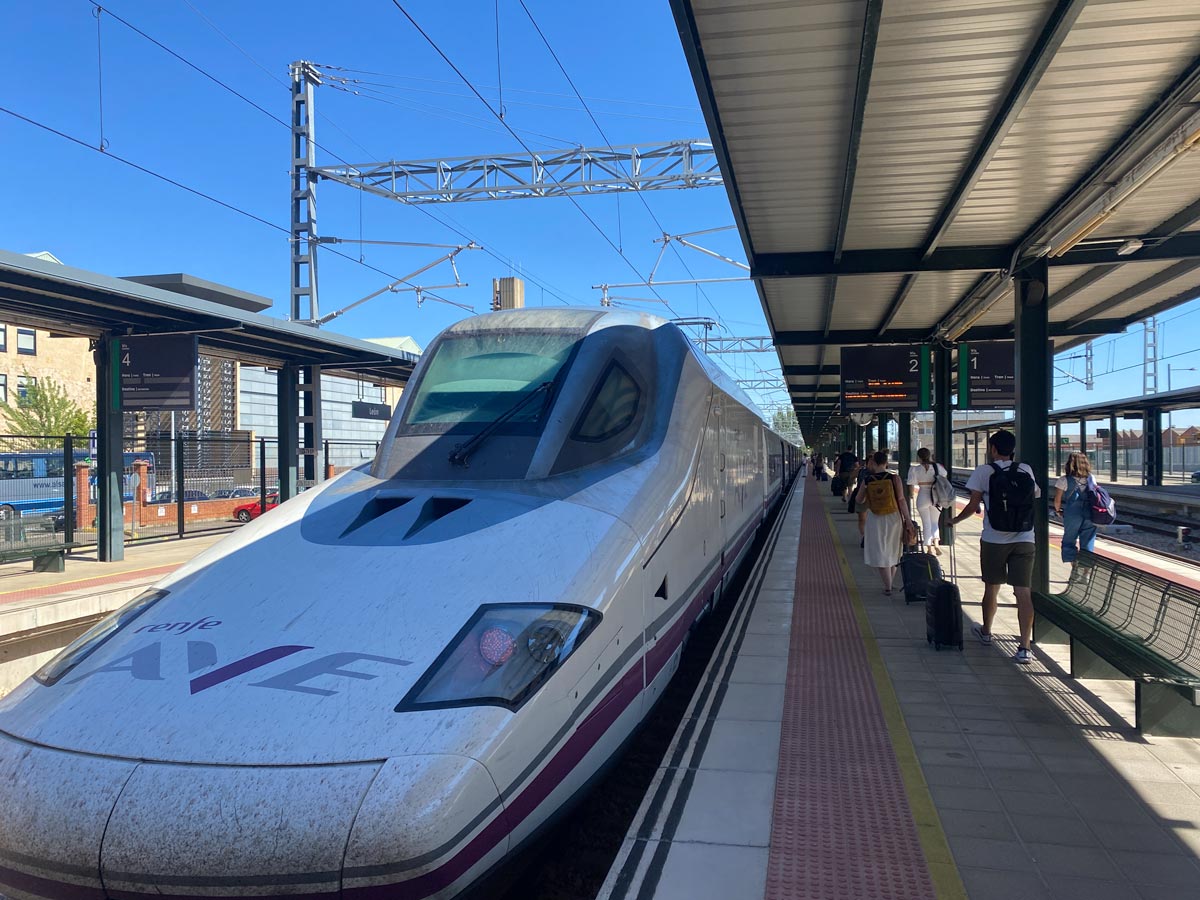
Travelling to León flight free from the UK
If you want to enjoy a weekend in León from the UK without flying, you have a couple of options – although, if you’re making this journey, you might as well spend at least one week in Spain to make it worthwhile.
The first is to take the Eurostar to London and, from there, the train to Hendaye, with two further train connections via Irun and Palencia. You can expect this route to take around 24 hours if timed well. Buses from the UK will take longer (over 24 hours), but the journey only involves one change, either in Vitoria-Gasteiz or Paris. From Paris, there are direct 18 hour FlixBus connections to León.
An alternative is to take the ferry from the UK, operated by Brittany Ferries, either to depart Portsmouth or Plymouth (though some sailings are only in summer) and arrive in Santander or Bilbao. Both journeys involve two nights aboard the ship. From either arrival point, you can continue by car if driving, pick up a rental car , or take an approximately 5-hour train journey to Le, with a connection in Palencia from Santander or Miranda De Ebro from Bilbao.
While there are direct trains from Bilbao, it is on the slow service, hence the connection perhaps being best. In general, though, the bus routes are usually quicker than the train in these instances.
If returning the same way, you might want to consider spending a night in San Sebastian – a gorgeous coastal town with some of the best food in the county – before sailing back.
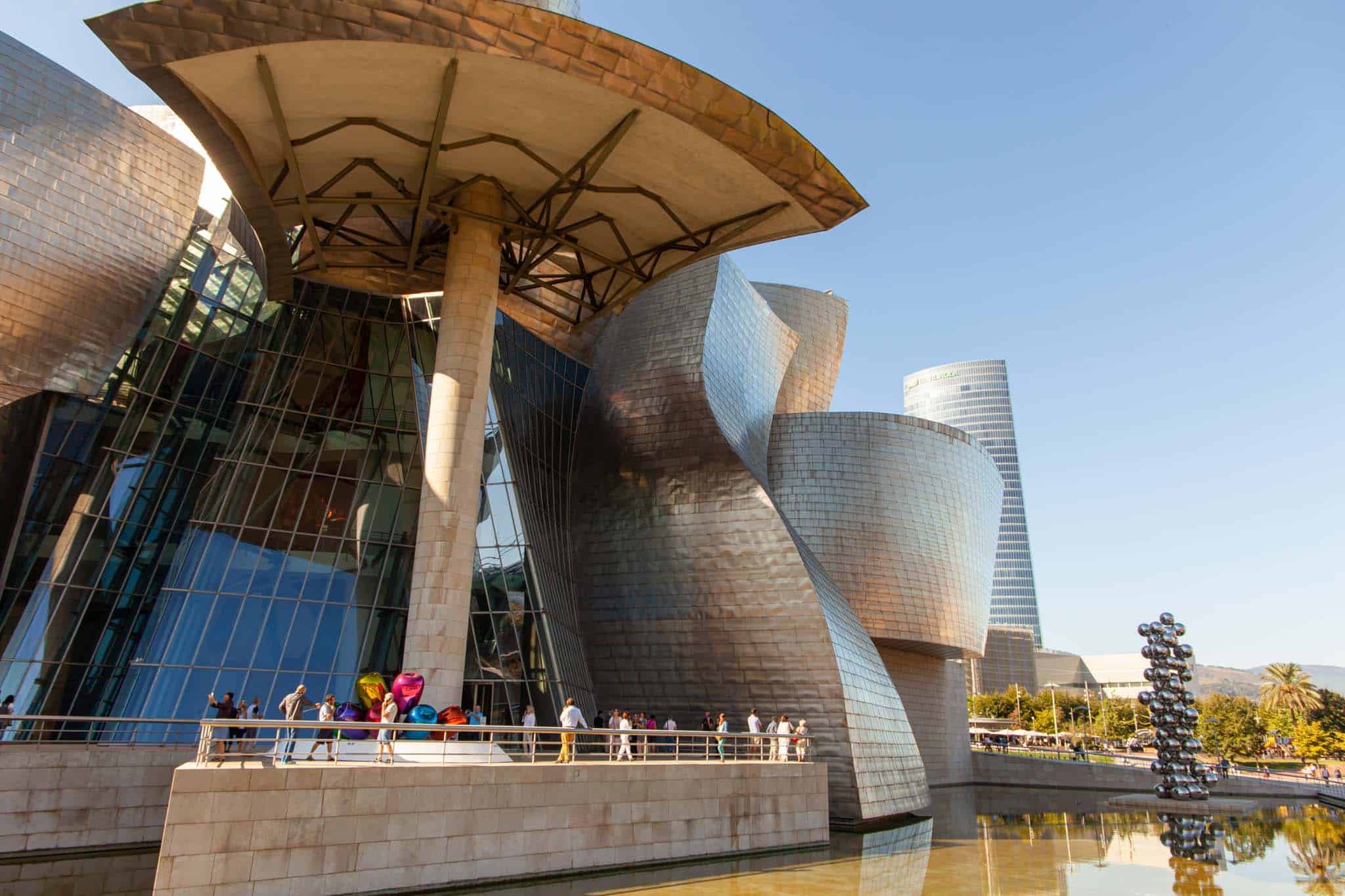
Where to travel after a weekend in León
From León, it’s easy to continue your journey by train to experience the youthful energy (and wine) of Valladolid , head north to Asturias and the city of Oviedo , or enjoy a coastal escape in Gijon. Beyond, plenty more of Spain’s hidden gems await.
This article was written as part of my #SpainByTrain trip in autumn 2022 in partnership with Spain Tourism and Castilla y León Tourism .
Related Posts:
- Casa Batlló: Barcelona's Architectural Treasure Where Gaudí's Genius Is…
- 11 Fantastic Things To Do in Northern Spain
- 20 Best Cities to Visit in Spain for Culture, Coast or Cuisine
- Sample Spain in Seven Days With These 5 Itinerary Ideas
- Renaissance architecture, sacred statues, and plenty of vino: how to…
- Best Hidden Gems in Spain: 21 Unique Places To Visit in Spain
Leave a Reply
Leave a reply cancel reply.
Your email address will not be published. Required fields are marked *

Hey, I’m Dan…
Sign up for (irregular) updates.
Email Address *
Recent Articles…
- Coffee, Concerts, Courtship & Community: Meet the Cyclists Making Graz The “Bicycle Capital of Austria”
- Escape to the Asitz Mountain, Where Art Meets the Austrian Alps
- Insider’s Guide to Graz Beyond the Unesco Old Town
- In Slovenia’s Vipava Valley, Sustainable Family-Run Wineries, Dining Rooms & Trails Abound
- The Kumbh Mela in Photos: Postcards From India’s Greatest Gathering
- Summer Highs in Innsbruck, Where the Alps Are for All
- 5 of Portugal’s Best Multi-Day Trails

Travel Safe
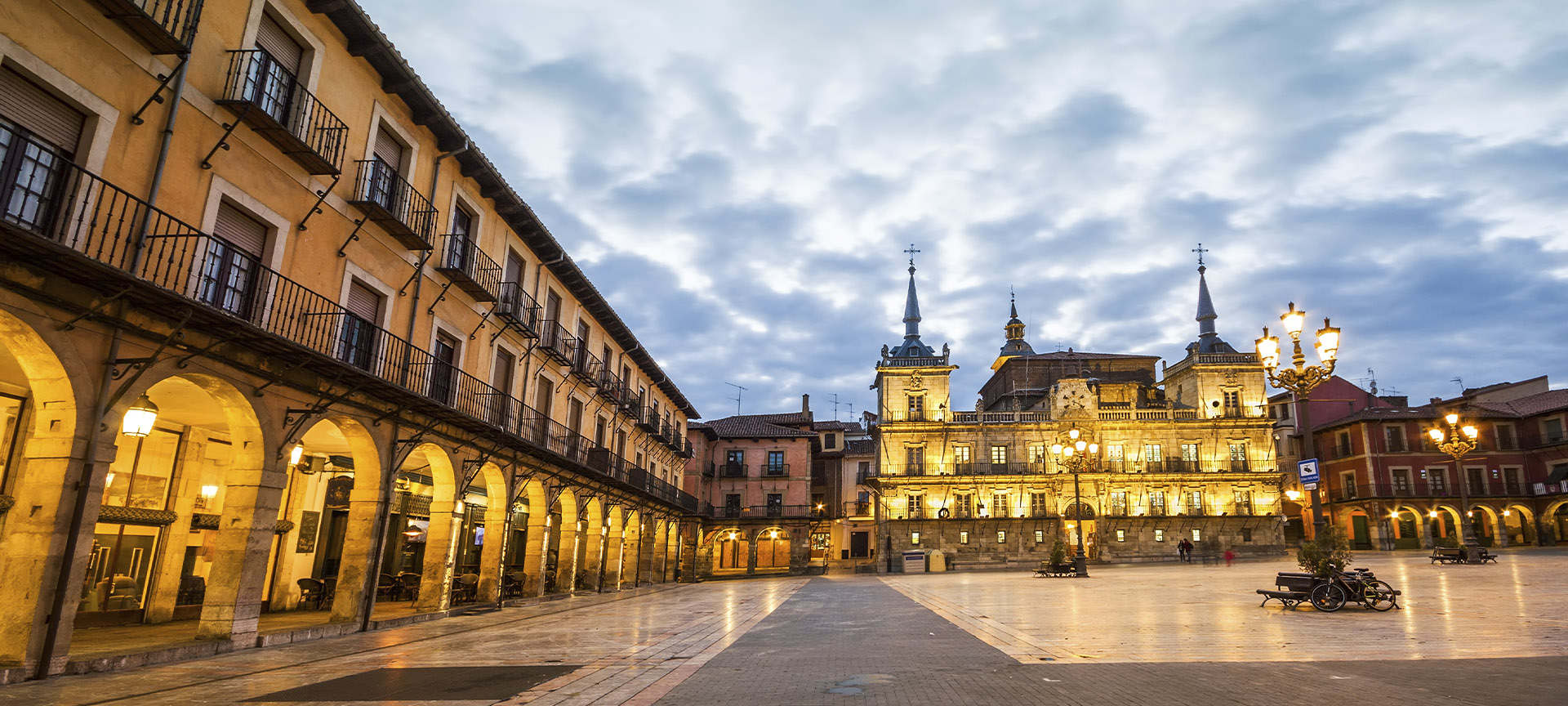
Castilla y Leon
The Pulchra Leonina, the Sistine Chapel; of Spanish Romanesque architecture and the old Hospital de San Marcos are the key points of this former Roman encampment.
Over the course of time, León became the capital of the kingdom in the Middle Ages, a historic enclave on the Pilgrim's Road to Santiago de Compostela and a city perfectly suited to its inhabitants. The incredible natural landscape of this province will take take us to the Picos de Europa National Park , the area of Las Médulas (a World Heritage Site) and the winter resort of San Isidro. A cultural and leisure offer which is only surpassed by the quality and variety of León's gastronomy.
What was the Roman Legio VII Gemina Pia Felix preserves an interesting Romanesque, Gothic and Renaissance legacy, the result of its splendour during the Middle Ages. The Plaza Mayor forms the centre of this city, crossed by the river Bernesga. Among this baroque collection of buildings stands the City Hall, popularly known as the "Balcony of the City", since from its galleries the nobles observed the town's activities taking place.
Around the “Húmedo”
Next to the City Hall is the neighbourhood of San Martín, built around the square and the church of the same name. In this area, there are small palaces and large houses such as the Casa de las Carnicerías and the Palace of Count Luna . The institution which once supplied meat to the city is a 17 th -century building which today houses an exhibition hall. The palace has a 14 th -century Gothic façade with Arab influences and a large dressed tower. Also worth a visit is the church of San Salvador de Palat del Rey, dating from the 10 th century and the oldest in the city. Dotted around these streets are bars and restaurants where we can sample the best of the region's gastronomy and which have made it worthy of the nickname El Húmedo . We can continue our route on to the Palace of los Guzmanes and the Casa de los Botines. The main façade of the palace, site of the County Council, dates back to the 16 th century and featuring prominently on the building are the lattice balconies and the lateral façade. The Casa de los Botines , meanwhile, is the work of the architect Antonio Gaudí , who launched the modernist style in the city. León has more examples of this artistic trend in the square of Santo Domingo. From here, we can enter the area surrounded by the Roman walls, with the city's two jewels located at either end: the Cathedral and Basilica of San Isidro . The “Pulcra Leonina”, one of the most striking Gothic temples in Spain, stands on the site of an old Roman baths and a Romanesque church. Approaching it face on offers us, on its main front, a view of one of the most significant series of Gothic sculptures, a richly-coloured rose window and two towers, curiously free-standing from the main façade. But perhaps what most captures the visitor's attention are the 1,800 square metres of stained-glass windows. Once inside, stopping by at the choir, the Romanesque tombs in the transept and the chapels of the ambulatory is a must. A visit to the Cathedral Museum , one of the most complete of its kind, takes us to see the cloister and a plateresque stairway, as well as major paintings and sculptures. One of the most significant sites in the whole of Europe is the Basilica de San Isidoro . Its thick walls jealously guard what is known as the "Sistine Chapel" of the Spanish Romenesque style. It is a series of frescoes from the 12 th century which decorate the underground crypt of the Royal Pantheon and which still preserve their original colour. We can find scenes from the Old and New Testament, floral motifs and a calendar of agricultural tasks. But the exceptional condition and quality of the paintings mustn't distract us from viewing the architectural features. The sculptures on the main fronts are a true Bible in images. The museum is housed in its cloisters and conserves an archive of codices, incunabula and a Visigothic Bible, among other works. Its prestigious collection of medieval art is enriched by the San Isidro Chest, the Ivory Chest or the Chalice of Doña Urruca. Walking around the city, you can discover churches of all ages and styles. In San Marcelo there is a reredos created in part by Gregorio Fernández , one of the most significant sculptors of the Spanish baroque style. Meanwhile, a church which recalls the splendour of the Pilgrim's Route to Santiago de Compostela as it passed through Léon is the Virgen del Camino, a highly venerated figure in the city.
Pilgirm's Route to Santiago de Compostela
And also linked to the Pilgrim's Route to Santiago de Compostela, which has World Heritage status, is the Hostal de San Marcos . One of the earliest expressions of the Spanish plateresque style was a pilgrims' hospital and shelter and the seat of the Order of Santiago. It currently houses the city's Parador , on the banks of the river Bernesga. An exceptional place to stay during your time in the city and to sit at a table well-stocked with the region's delicacies. Maragato stew, frog's legs, beef sweetbreads and mountain meats are just some of the suggestions. The vegetables, meat products and fish can be washed down with Designation of Origin wines from El Bierzo. Rice pudding or Astorga mantecadas (made with sugar, flour and egg) round off any gastronomic occasion. The province of León offers us significant slices of the history, art and nature of the region. The river Esla will act as our guide to the villages and historical sites which stand on its banks, such as San Miguel de Escalada, a monastery in the Mozarab style from the 10 th century. The northwestern end of León is dominated by the Picos de Europa National Park . Mountain villages such as Caín or Posada de Valdeón appear between the valleys, mountains and forests of beech trees. The Cares gorge and the narrow mountain pass of Los Beyos are some of the most stunning landscapes to be found deep in the Cantabrian mountain range. In the central mountains of León, meanwhile, is the winter resort of San Isidro , a spot perforated by hundreds of caves, among which Valporquero stands out. Stalagmites, stalactites, lakes and waterfalls have formed in its galleries. Astorga, a city of Roman origin, is the gateway to the region of Maragatería . Among its villages, we will find one, Castrillo de los Polvazares, which is a National Monument. The Pilgrim's Route to Santiago de Compostela crosses León through the region of El Bierzo , to be precise, through Villafranca del Bierzo, Cacabelos or Carracedo, whose monastery of Santa María is also a National Monument. Near here stand the clayey mountains which form Las Medulas , former Roman gold mines which have been declared a World Heritage Site . It only remains for us to travel to Ponferrada and the Valle del Silencio. One of the villages in the valley, Peñalba de Santiago, is a National Historic-Artistic Site. Among its slate and quartzite houses stands the church of Santiago, a Mozarab temple from the 10 th century.

What to visit
Select from the list or hover over the map to find out about points of interest.

Casa Botines house
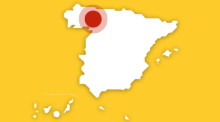
San Isidoro Royal Collegiate Church in León
Los Guzmanes Palace
San Marcos Monastery
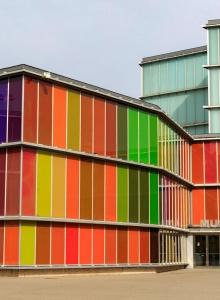
MUSAC. Castile and León Museum of Contemporary Art
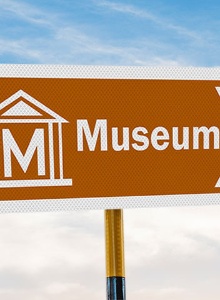
Cathedral Museum (León)
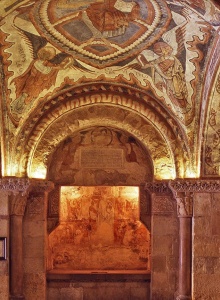
Museum of the Collegiate Church of San Isidoro
Museo de León
Travel plans for inspiring you
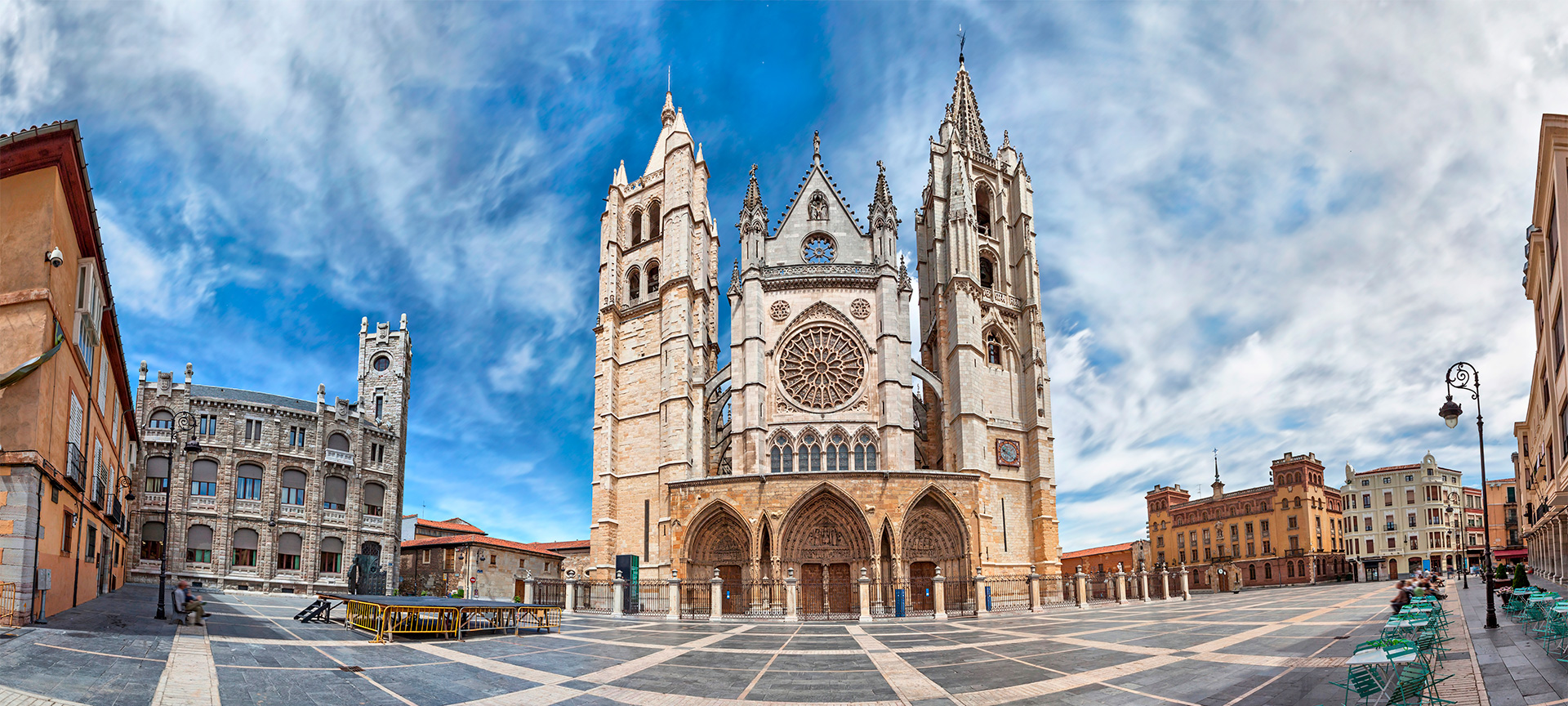
The Silver Route and its surrounding areas in the province of León
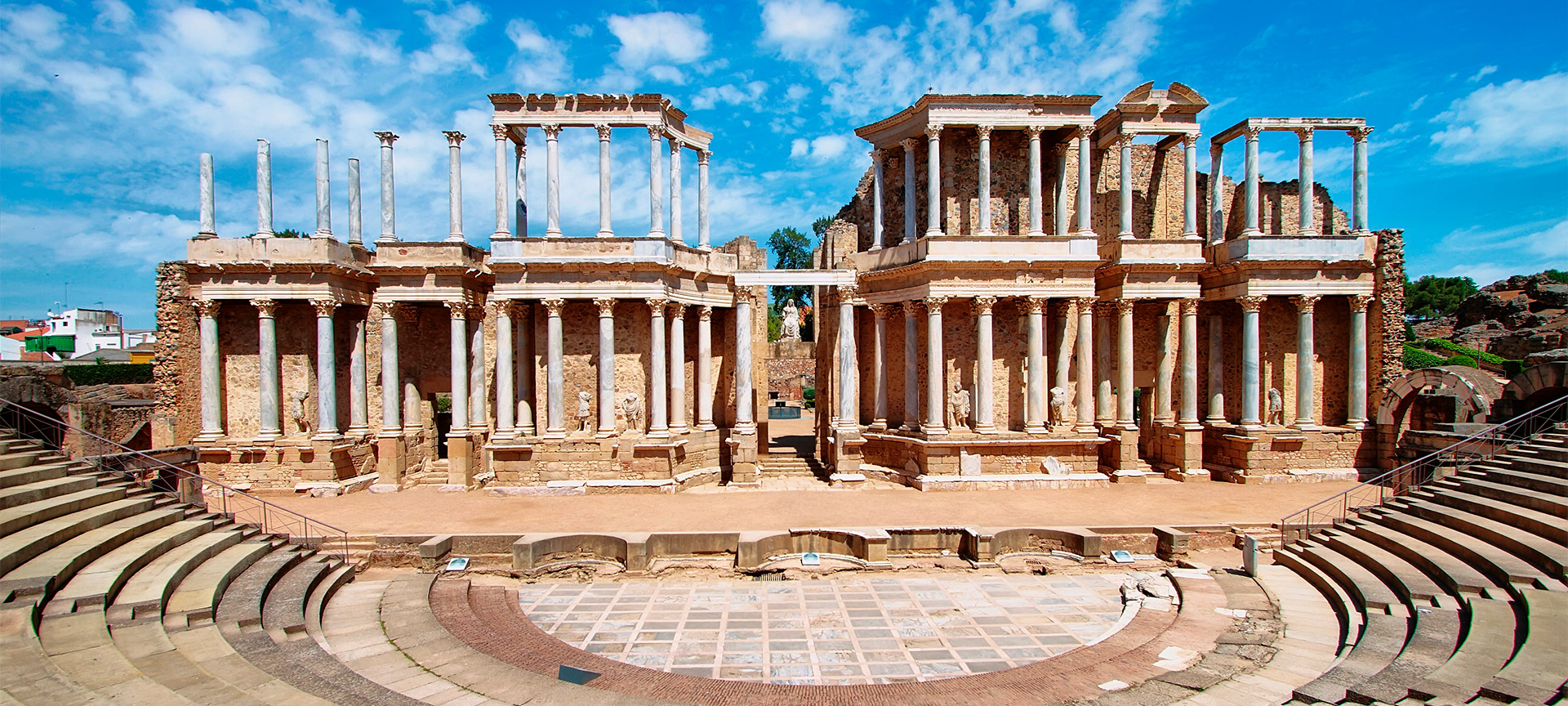
The Vía de la Plata (Silver Route)
Shows, festivals, sports...
View some of the most relevant events you will be able to enjoy at the destination.

Spanish Music Festival
07 September 2024 - 01 October 2024
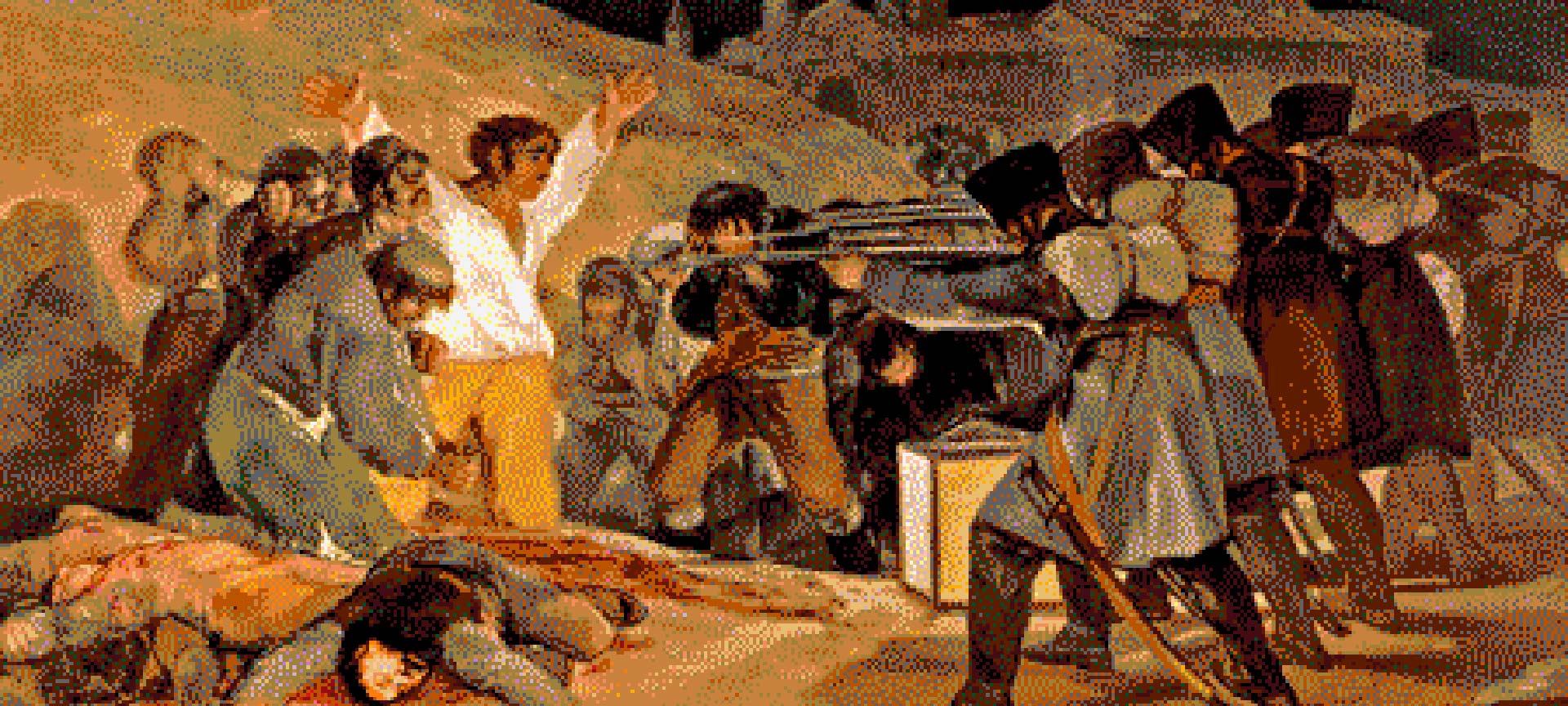
Exhibition: Ai Weiwei: Don Quixote
09 November 2024 - 18 May 2025
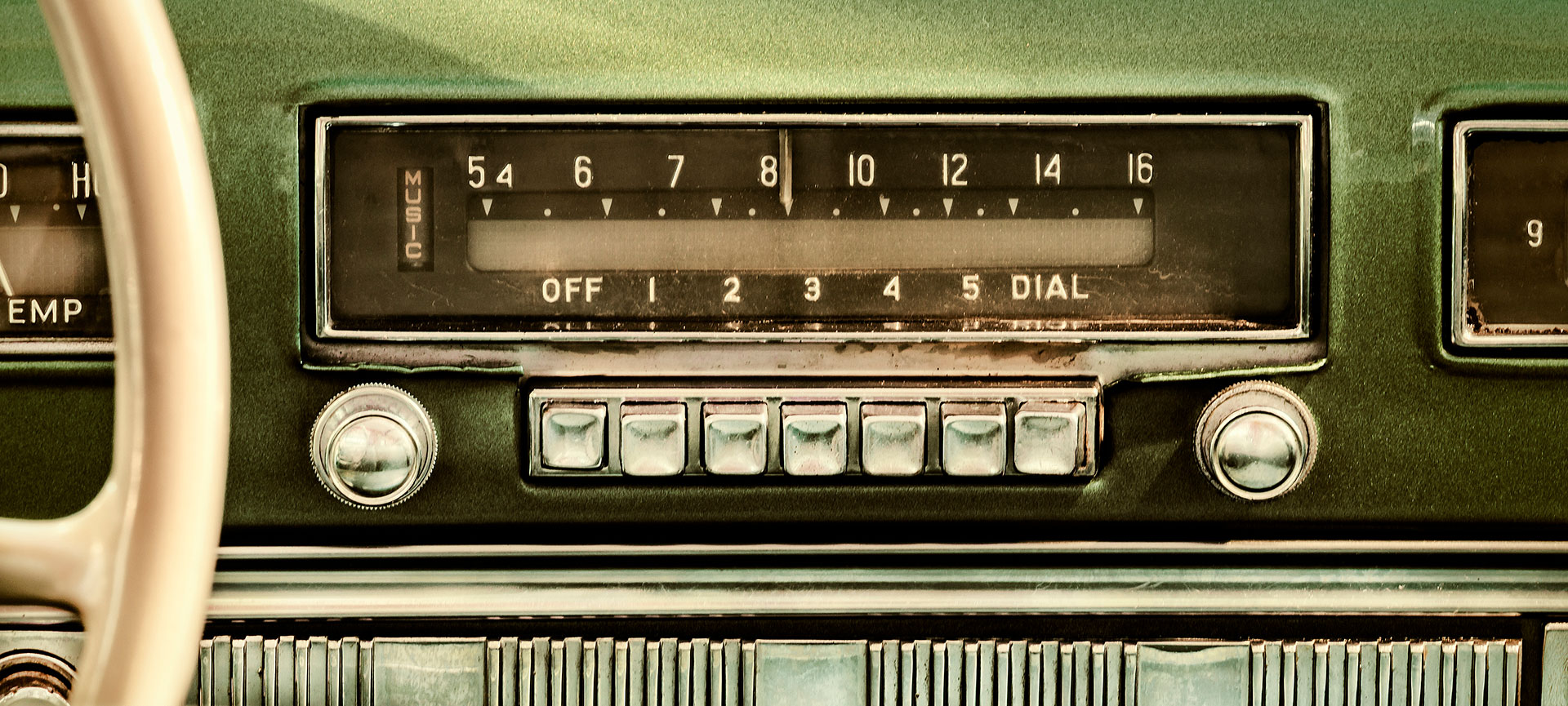
Purple Weekend Festival
05 December 2024 - 08 December 2024

Choose between thousands of activities to live your best life on holiday.


Getty Images/LOOK
León is a wonderful city, combining stunning historical architecture with an irresistible energy. Its standout attraction is the cathedral, one of the most beautiful in Spain, but there's so much more to see and do here. By day you'll encounter a city with its roots firmly planted in the soil of northern Castilla, with its grand monuments, loyal Catholic heritage and a role as an important staging post along the Camino de Santiago. By night León is taken over by a deep-into-the-night soundtrack of revelry that floods the narrow streets and plazas of the picturesque old quarter, the Barrio Húmedo. It's a fabulous mix.
Attractions
Must-see attractions.

León's 13th-century cathedral, with its soaring towers, flying buttresses and breathtaking interior, is the city's spiritual heart. Whether spotlit by…

Museo de Arte Contemporáneo
León's showpiece Museo de Arte Contemporáneo has been acclaimed for the 37 shades of coloured glass that adorn the facade; they were gleaned from the…

Real Colegiata de San Isidoro
Attached to the Real Basílica de San Isidoro, the stunning Panteón Real houses royal sarcophagi, which rest with quiet dignity beneath a canopy of some of…

Museo Gaudí
Antoni Gaudí's contribution to León's skyline is the castle-like, neo-Gothic Casa Botines (1893), though the zany architect of Barcelona fame seems to…

Claustro & Museo Catedralicio-Diocesano
The peaceful, light-filled claustro (cloisters), with its 15th-century frescos, is a perfect complement to the main sanctuary and an essential part of the…

Real Basílica de San Isidoro
Even older than León's cathedral, the Real Basílica de San Isidoro provides a stunning Romanesque counterpoint to the former's Gothic strains. Fernando I…

Convento de San Marcos
You'll have to check into the Hostal de San Marcos parador to appreciate most of this palatial former monastery, although the historic chapter house and…

Palacio de los Guzmanes
León's recurring Renaissance theme finds expression in the splendid Palacio de los Guzmanes (1560), where the facade and patio stand out. The latter is…
Plan with a local
Experience the real Spain
Let a local expert craft your dream trip.
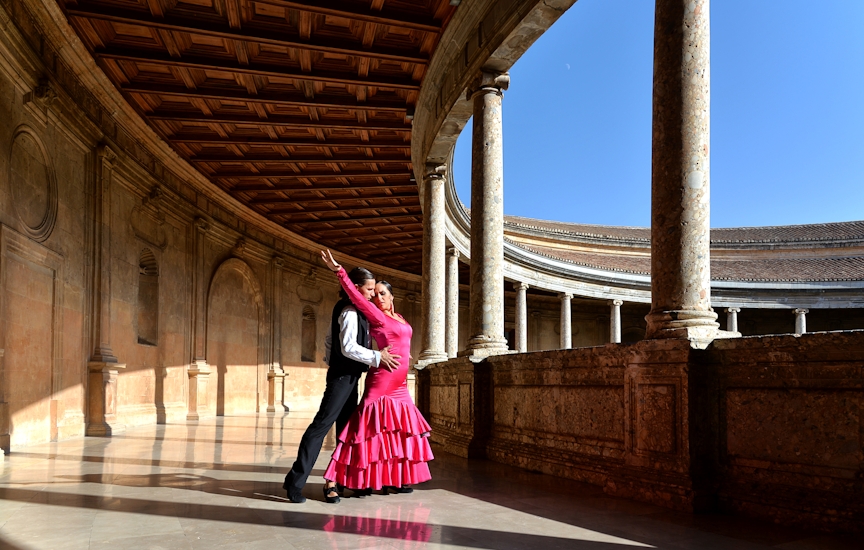
in partnership with getyourguide
Book popular activities in León
- Fueteventura
- Gran Canaria
- All France Tours
- All Morocco Tours
- All Portugal Tours
- All Spain Tours
- All Azores Islands
- Santa Maria
- Mont Saint Michel
- Chefchaouen
- Mediterranean coast
- All Portugal
- Castro Marim
- São Brás de Alportel
- Vila do Bispo
- Vila Real de Santo António
- Sintra & Cascais
- Azeitão & Sesimbra
- Ericeira, Peniche & Mafra
- Douro Valley
- Braga & Gerês
- Costa Verde
- Spanish Border
- Viana do Castelo
- All Northern Spain
- San Sebastian
- Vitoria-Gasteiz
- Castro Urdiales
- Santiago de Compostela
- Picos de Europa
- Ciudad Real
- Guadalajara
- All Andalucia
- Jerez de la Fronteira
- Sherry Route
- Sierra Nevada
- All Canary Islands
- Fuerteventura
- Lanzarote & Graciosa
- São Tomé & Príncipe
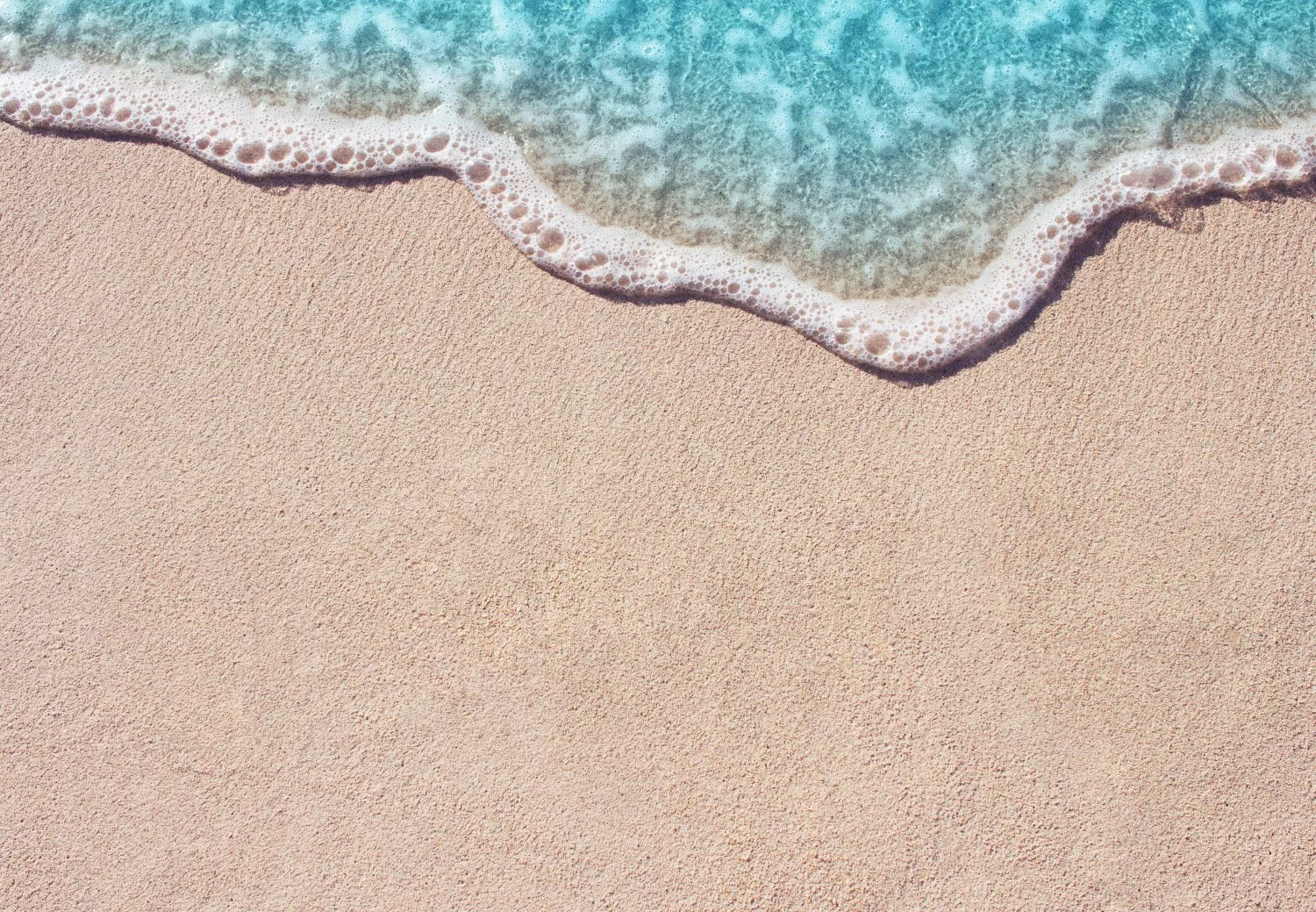
Design Your Next Adventure

Request a quote>
Things to do in León, Spain
Part of the Castile-León region is the namesake city of León. The most prominent attraction here is the Gothic cathedral, but there are many more historical buildings to discover, including the Basílica de San Isidoro or the striking Casa Botines designed by Gaudí.
At night, the city comes alive with locals flocking to the tapas bars around the historic neighbourhood of Barrio Húmedo. León is also part of the Camino de Santiago, welcoming hundreds of pilgrims every year. Even on the outskirts, there is a rich cultural heritage to explore with places like Ponferrada and Astorga, within easy reach.
Our itinerary below includes the best things to do in León, including restaurants and hotel recommendations, as well as day trip ideas.

Morning: Barrio Húmedo (Plaza Mayor and Calle Ancha)
Start your tour of León in the old town. Also known as Barrio Húmedo, it’s where you’ll find most of the city’s main attractions, The first stop is Plaza Mayor. This picturesque square was once known as Plaza Pan (Bread Square) since there were a lot of bakeries here. Today its colonnade arches are home to many cafés and shops. Surrounding the square are a series of 17th-century buildings, including the town hall on the west end. If you come on Wednesdays or Saturdays you might catch the local produce market. Continue exploring the old town, following narrow streets like Calle Ancha, which leads on to the Cathedral.
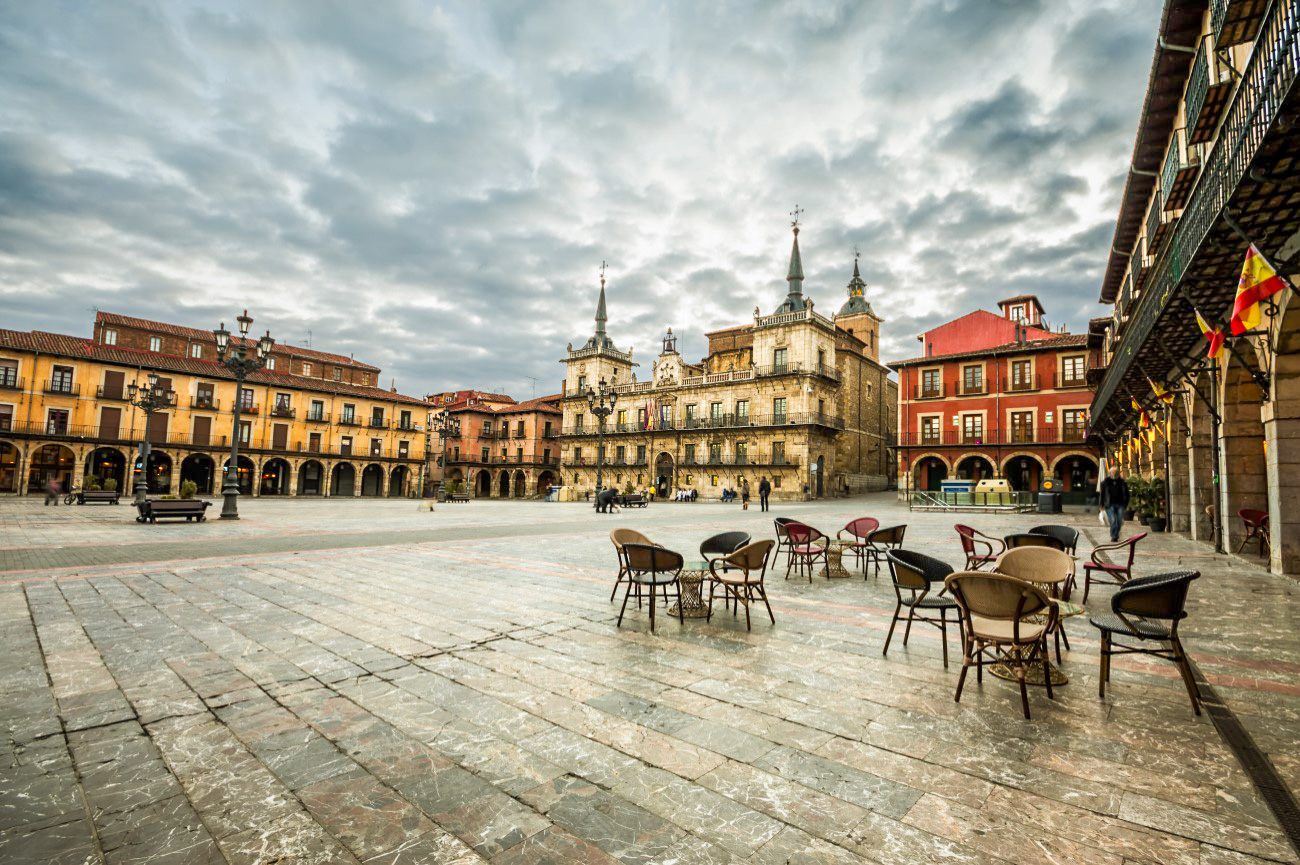
Museo Sierra-Pambley
Still within the old town, you’ll find the Museo Sierra-Pambley. This small museum occupies a 19th-century house that belonged to the Segundo Sierra-Pambley, a Spanish philanthropist who founded one of the first schools in the region. Inaugurated in 2006, it allows visitors to see how the Leonese bourgeois elite used to live. The house still features its original furnishings, including luxurious carpets and patterned wallpapers. If you have time, you can also visit the nearby Fundación Vela Zanetti, a small art gallery dedicated to the painter José Vela Zanetti.

León Cathedral and Museum
Next stop is the Cathedral, the most important landmark in León. Built in a French Gothic style, its spires are visible from pretty much every corner of the city. It’s worth going inside to marvel at the colourful stained glass windows decorating the walls. Most of the building dates back to the 13th century, but some parts were added later on. You can also visit the adjoining religious museum or take a walk down to Avenida los Cubos to see a section of the old city walls.
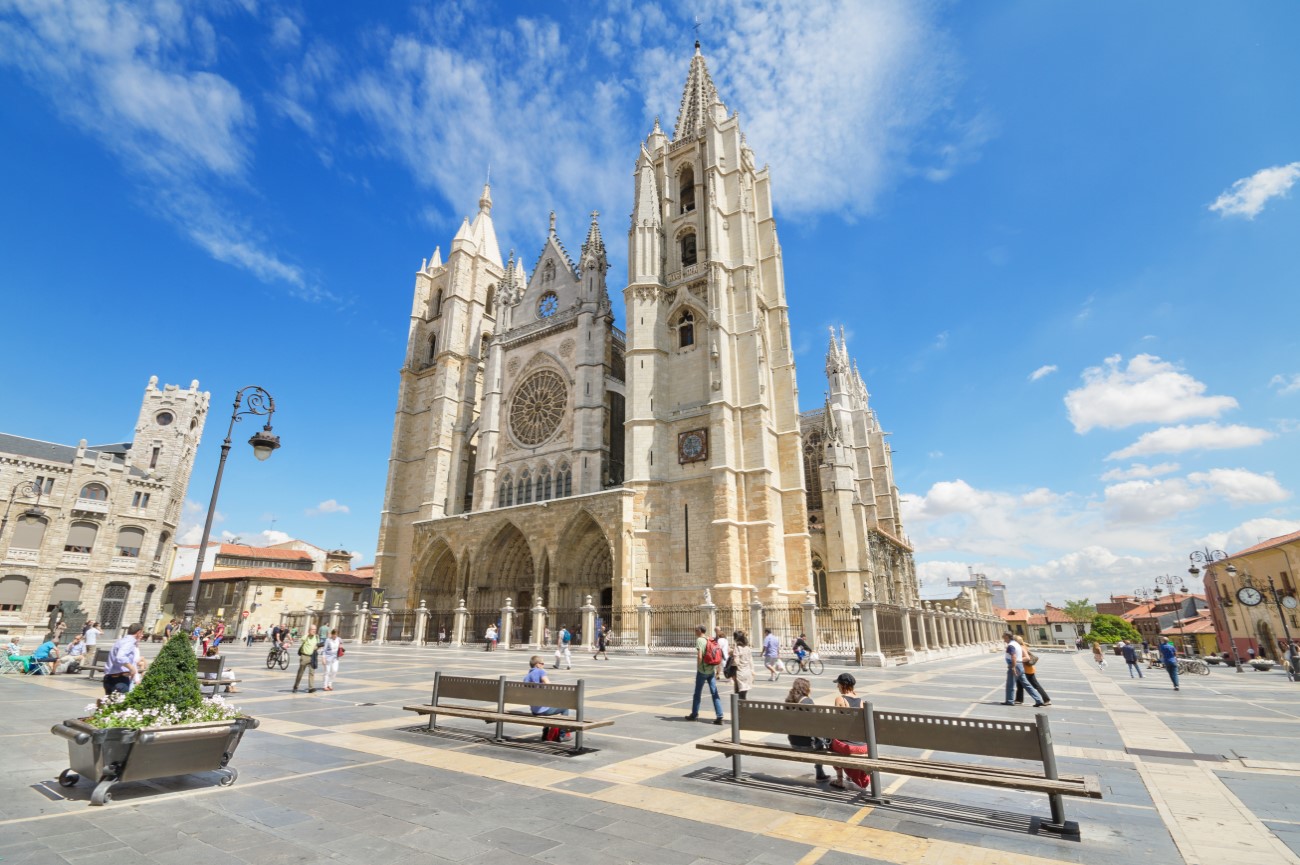
Basílica de San Isidoro
Much older than the cathedral is the Basílica de San Isidoro. This striking Romanesque building was founded in 1063 by Fernando I and Doña Sancha. It includes a Royal Pantheon, an Oriental and Biblical Museum and a collegiate library. Visitors can enjoy the colourful frescoes inside or dine below the ancient cloisters, since part of the collegiate was converted into a luxury hotel.
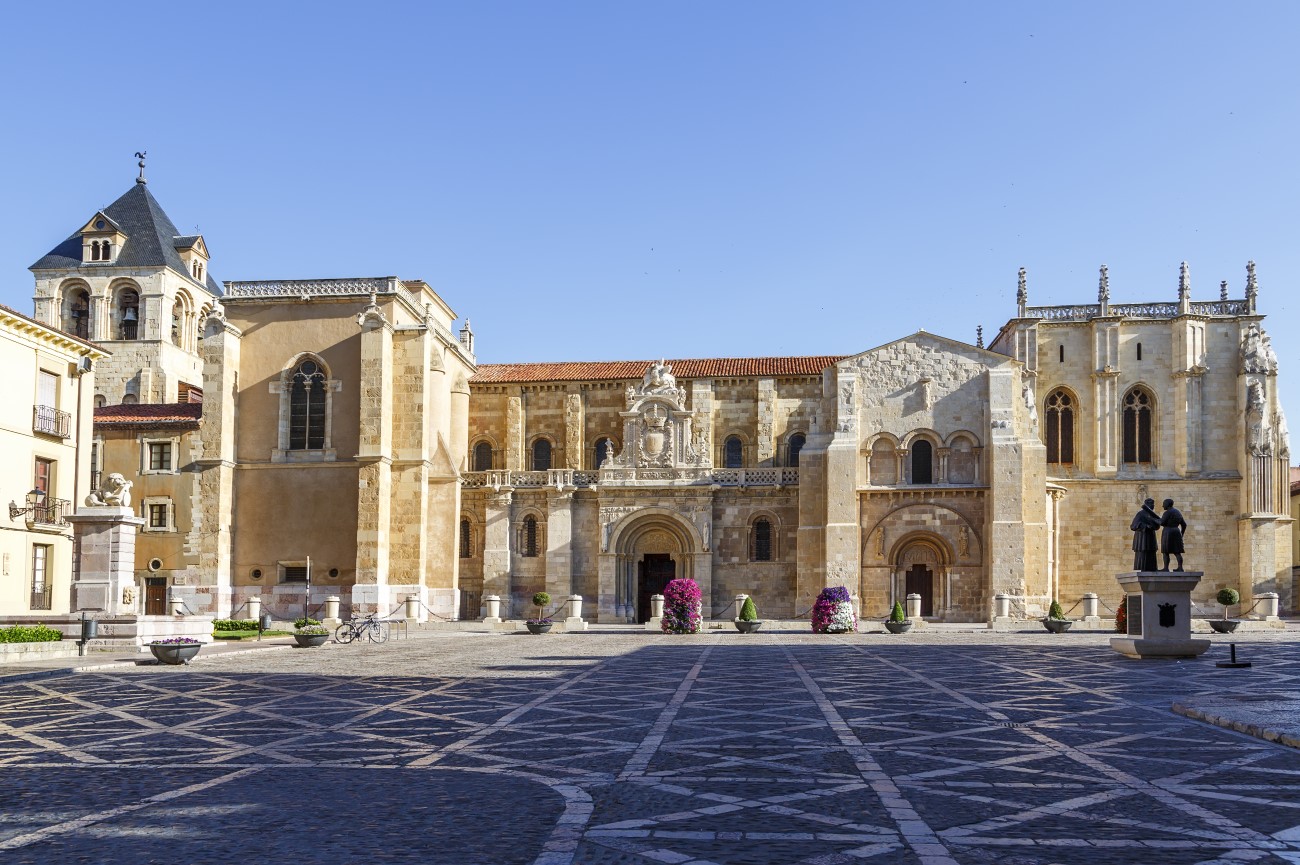
Morning - León Tour Map
Afternoon: Palacio De Los Guzmanes
Head down to the Palacio de los Guzmanes and admire its Renaissance façade designed by architect Rodrigo Gil de Hontañón. Established in the 16th-century the palace was originally built as a home for the Guzman family. Today it is the headquarters of the government of León. There are usually guided tours of the patio between 11:30 am to 4:40 pm.

Casa Botines/Museo Gaudí
Barcelona isn’t the only city where Antoni Gaudí left his mark. The Spanish architect also designed several buildings in the North of Spain. Among these is the Casa Botines in León. Established between 1891 and 1892, this Modernist building was commissioned by Simón Fernández and Mariano Andrés González, representatives of the Hispano-Colonial Bank of Barcelona. Inside there’s a museum, with exhibits dedicated to Gaudí and paintings by other famous artists like Salvador Dalí and Goya.
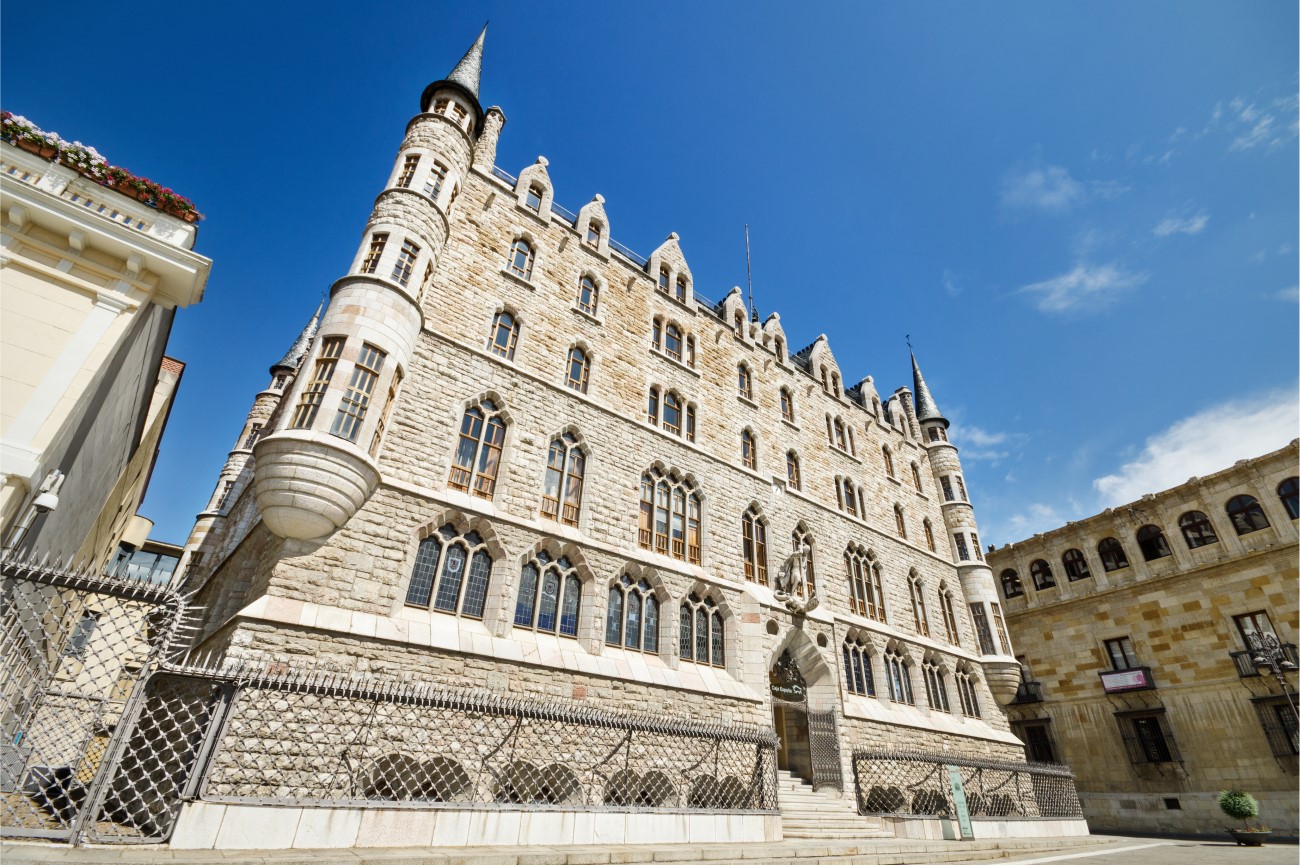
Museo de León
To learn more about the city’s history, pay a visit to the Museo de León, one of the oldest museums in the region. Divided into four floors, the collection stretches from the Iron Age to the Middle Ages and the 19th century. Among the highlights are artefacts discovered in Las Médulas, an ancient Roman mining site located near León. Make sure to climb up to the rooftop for a panoramic view of the city and the cathedral.
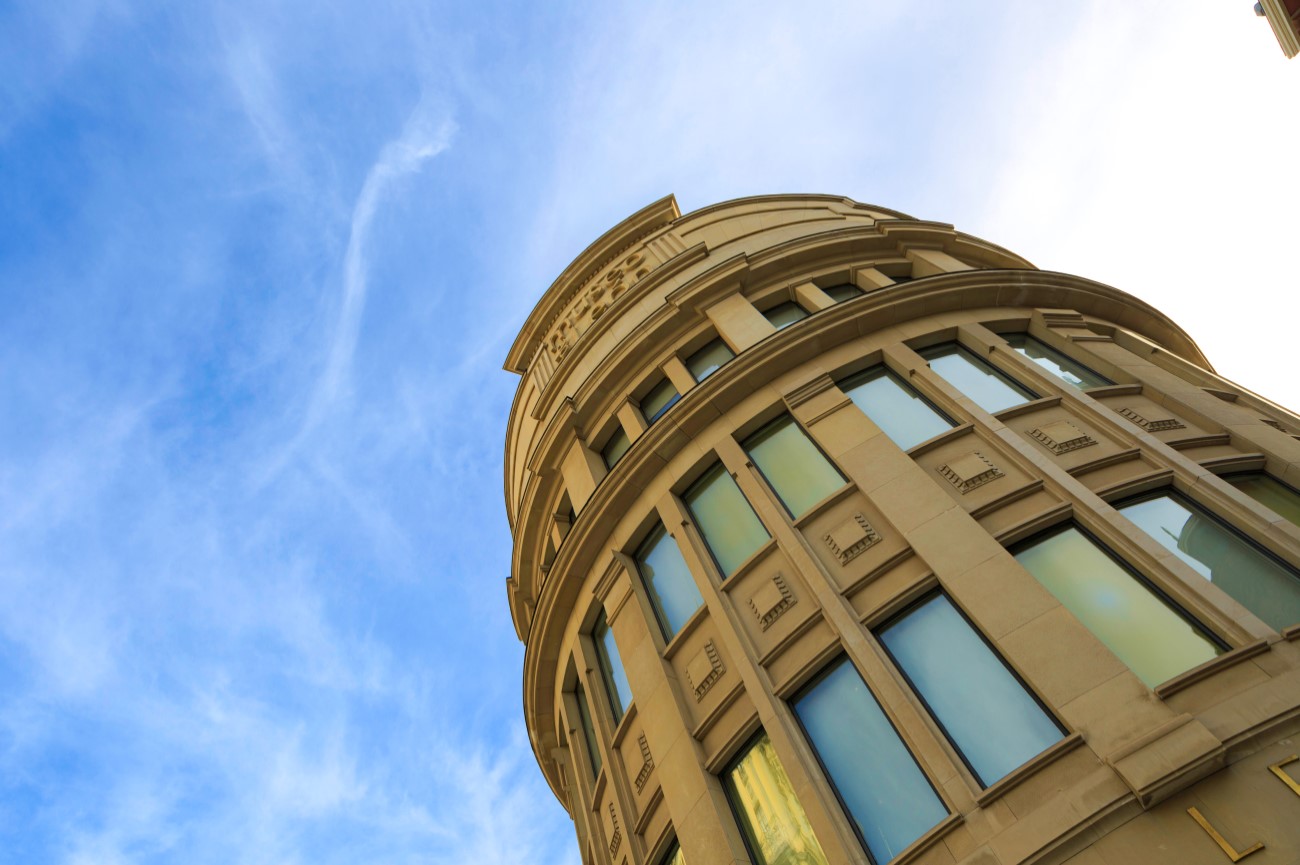
Iglesia de San Marcelo
Just a few steps from the museum is the Iglesia de San Marcelo. The original building dates back to the 9th century, but it was destroyed and rebuilt in 1096, making it one of the oldest churches in León. However, the church was modified through the years and most of its current look is actually from the 17th century. Highlights include the gilded altarpiece with the image of Saint Marcelo.

Tapas in Barrio Húmedo
For dinner, head back to the old town. The name Bairro Húmedo stands for “wet district” since this area has the biggest concentration of bars in León. Pick a spot, order a round of tapas and then follow the locals lead, hopping from bar to bar to sample different dishes.
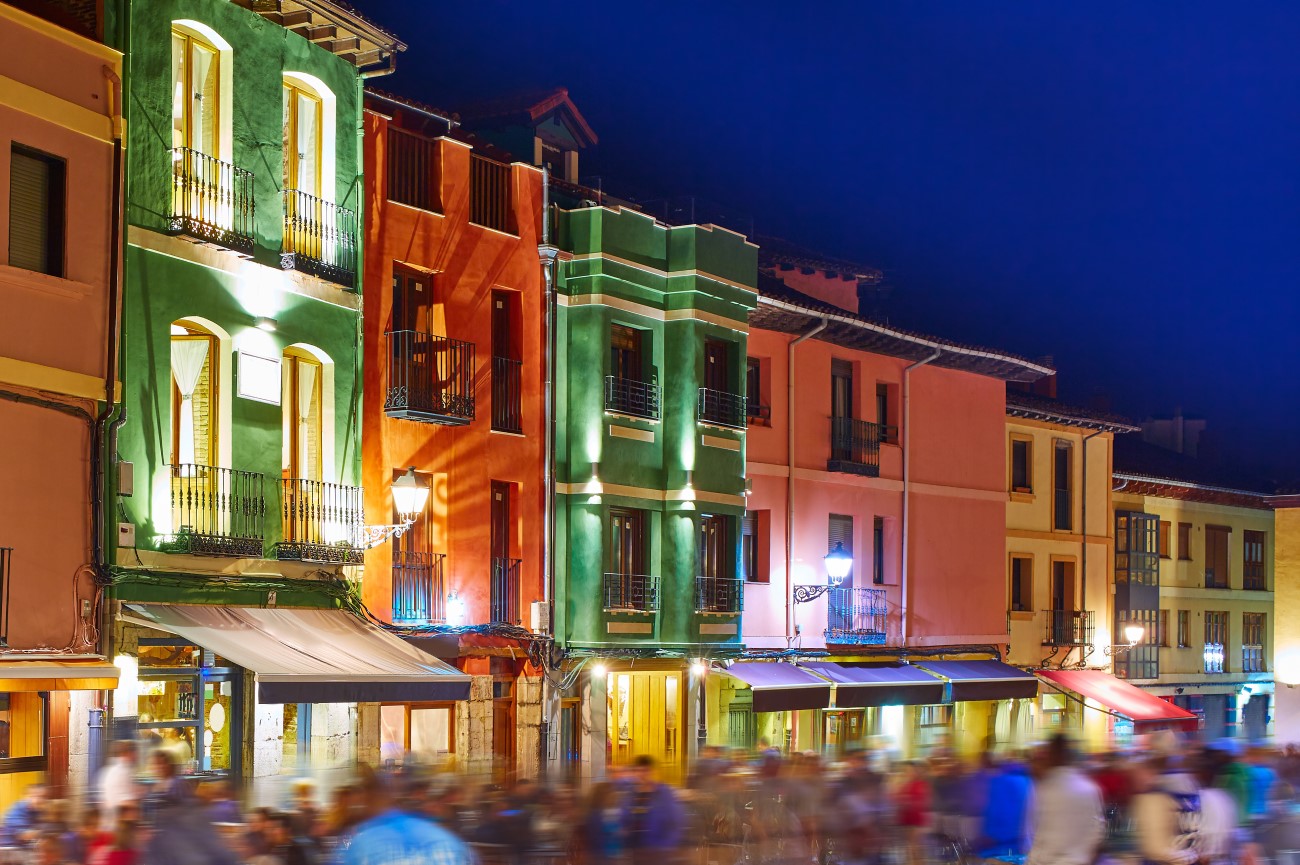
Day 1, Afternoon - León Tour Map
Morning: Iglesia de Nuestra Señora del Mercado
If you’re spending another day in León, there are a few more attractions you can cover. Start the morning with a tour around the Iglesia de Nuestra Señora del Mercado. This Romanesque church overlooks the Plaza del Grano, a charming cobblestone square in the city centre. Opening hours vary, but it’s still worth passing by to admire the church’s stunning exterior.
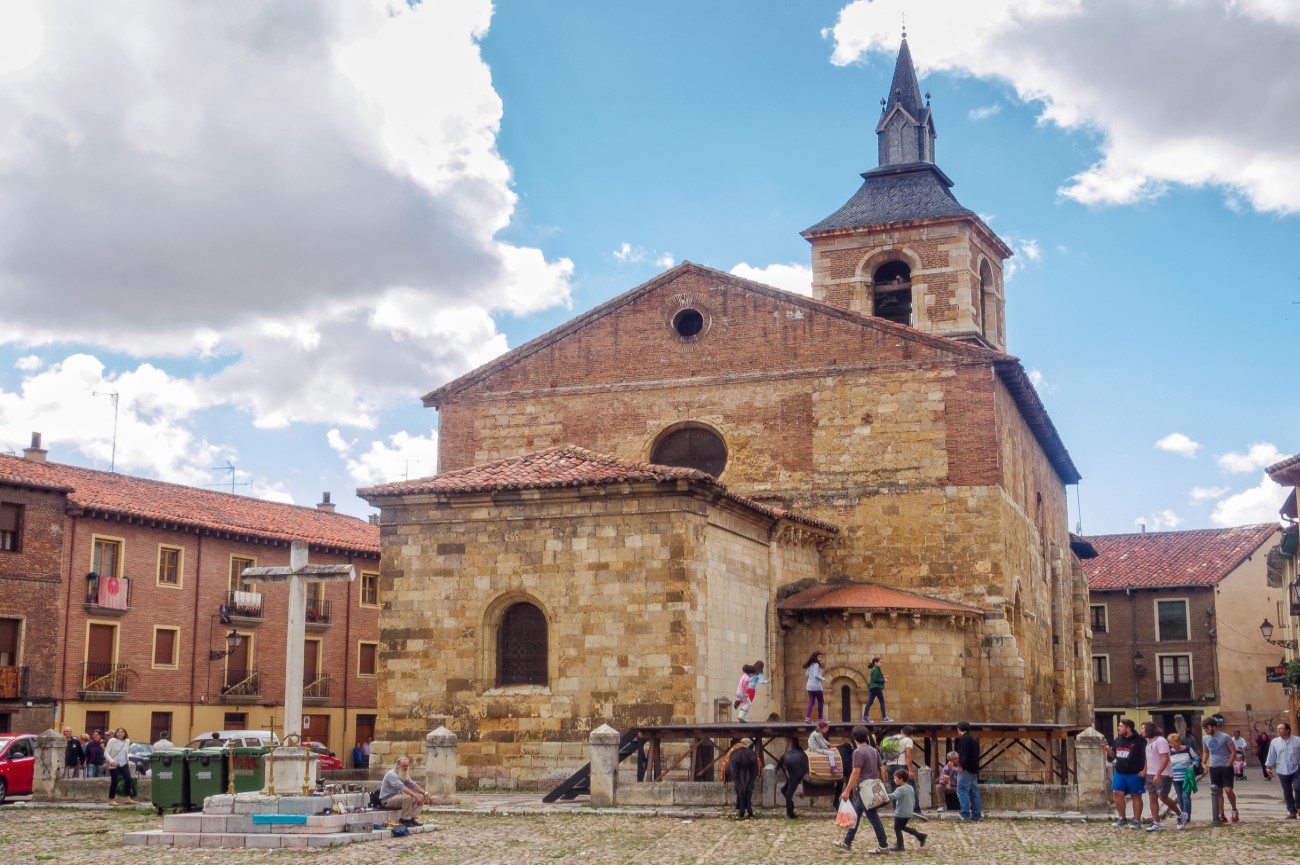
Convento de San Marcos
Next, make your way to the Convento de San Marcos . Established around 1541, this imposing building stands out with its plateresque exterior made up of slender columns and intricate medallions. It features a church, an archaeological museum and a convent which is now home to a five-star hotel. Commissioned by Ferdinand the Catholic King, it’s one of the most beautiful examples of Renaissance architecture in the country. Visitors can access the chapter house and the cloister, but to appreciate the convent’s full glory it’s worth spending the night here.
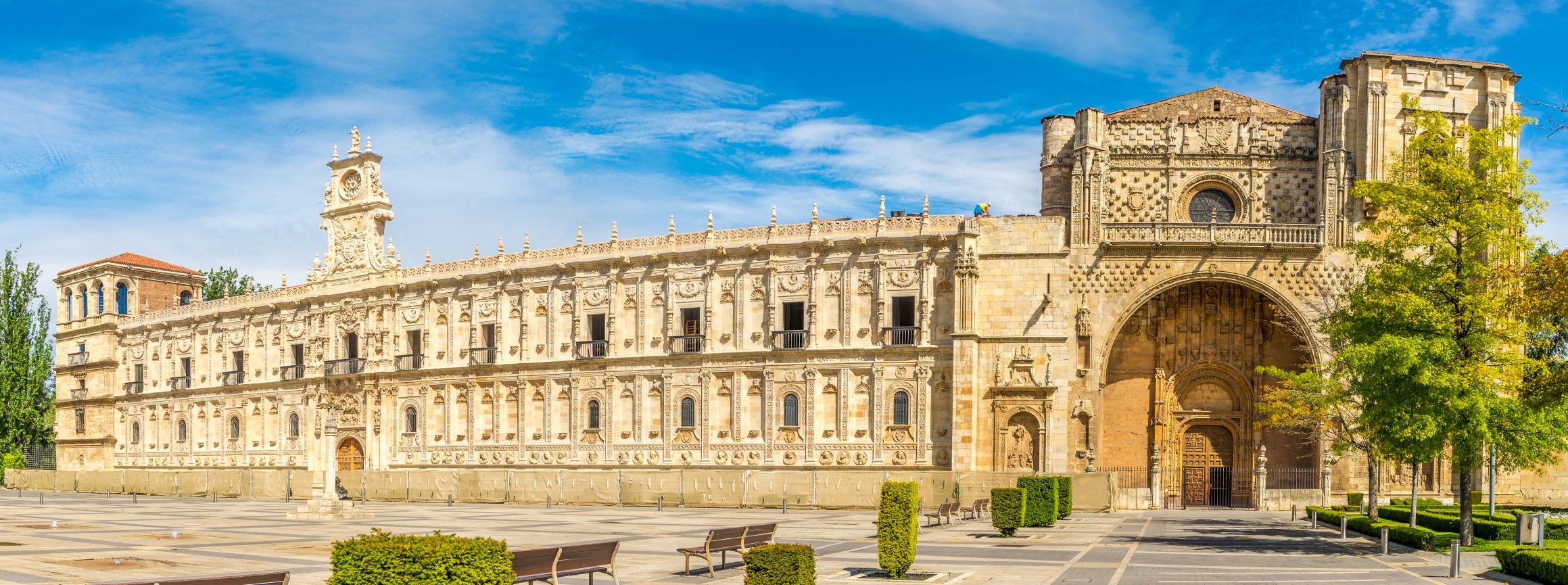
Afternoon: Parque De Quevedo
From the convent, cross the Puente de San Marcos and you’ll end up at the Parque de Quevedo. Set along the Bernesga river, it’s one of the largest parks in León, stretching for over 40,000m2. Take a stroll through the tree-lined walkways and keep an eye out for the peacocks.
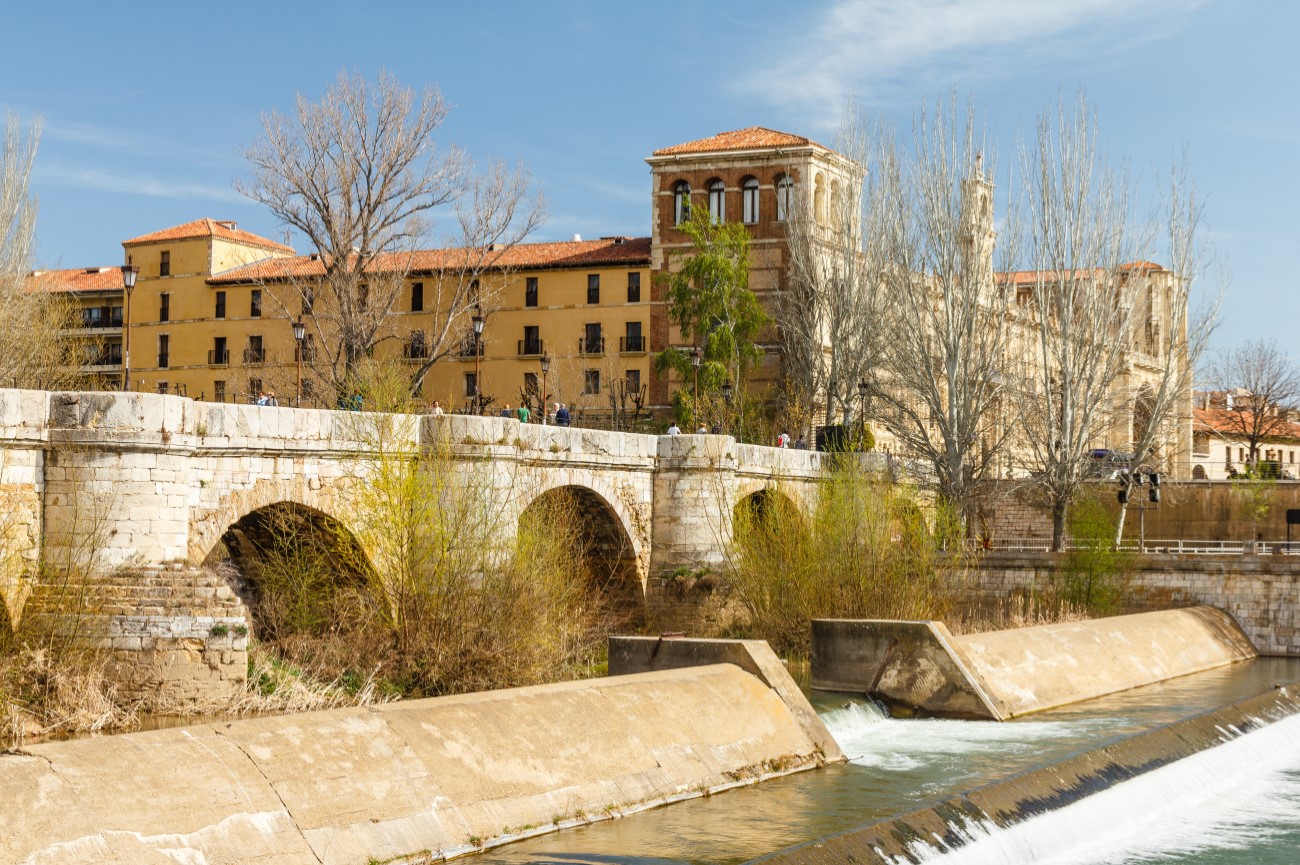
Museo de Arte Contemporáneo de Castilla y León
Back on the other margin is the Museo de Arte Contemporáneo. It’s among the most important contemporary art museums in the region of Castilla y León. Inside, you’ll find over 1,500 art pieces from Spanish and specifically Leonese artists, alongside international names. Open since 2005, the museum’s collection covers the 20th and 21st century. The building itself is also quite striking, with its rainbow-coloured glass exterior designed by Luis Mansilla and Emilio Tuñón. These are meant to be inspired by the colours of the cathedral’s stained glass windows.
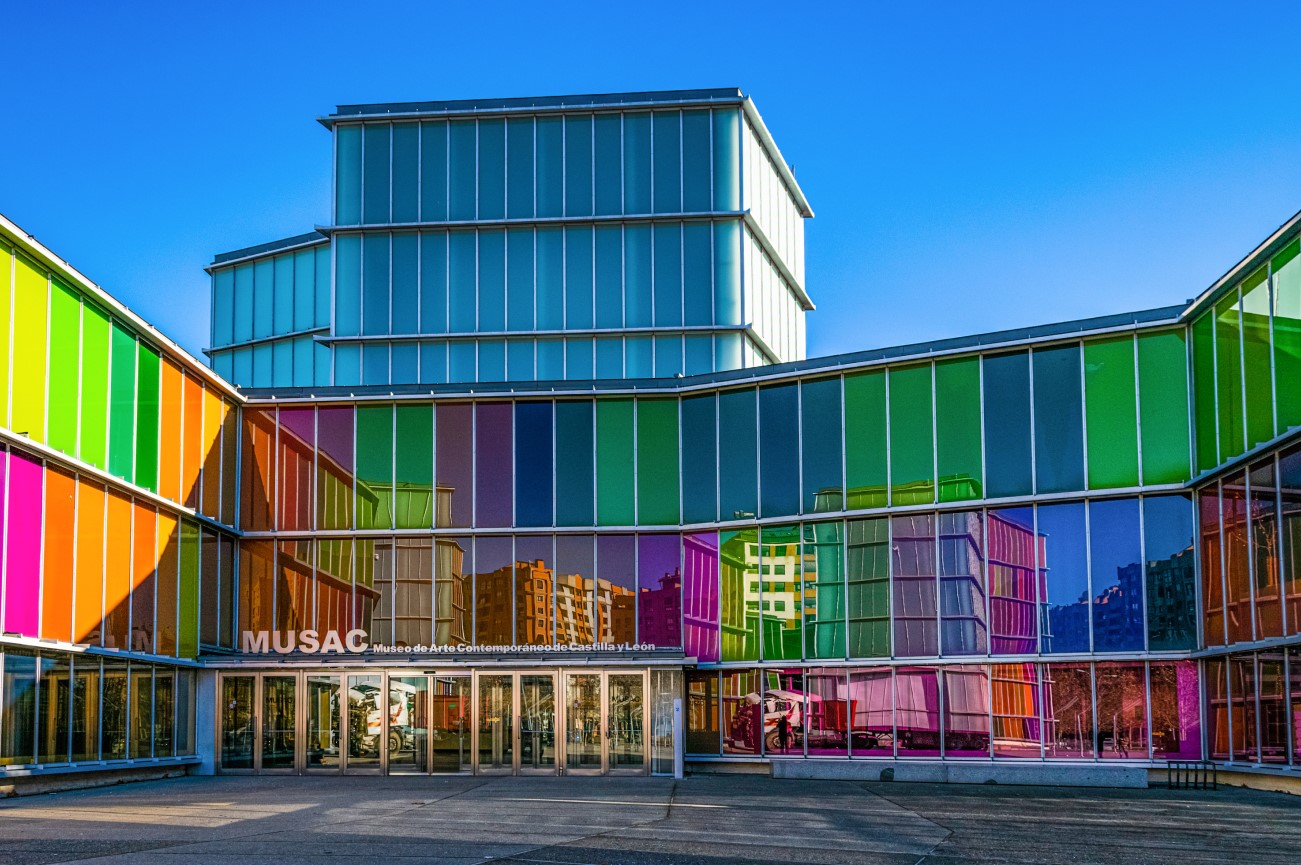
Day 2 - León Tour Map
Day Trips From León
- Astorga: This hilltop village is only a few miles west of León. It has a picturesque setting, amid the plains of Castilla and the Mountains of Galicia. Despite its small size, Astorga has quite a few attractions, including a striking Gothic cathedral, Roman ruins and a palace designed by Gaudí.
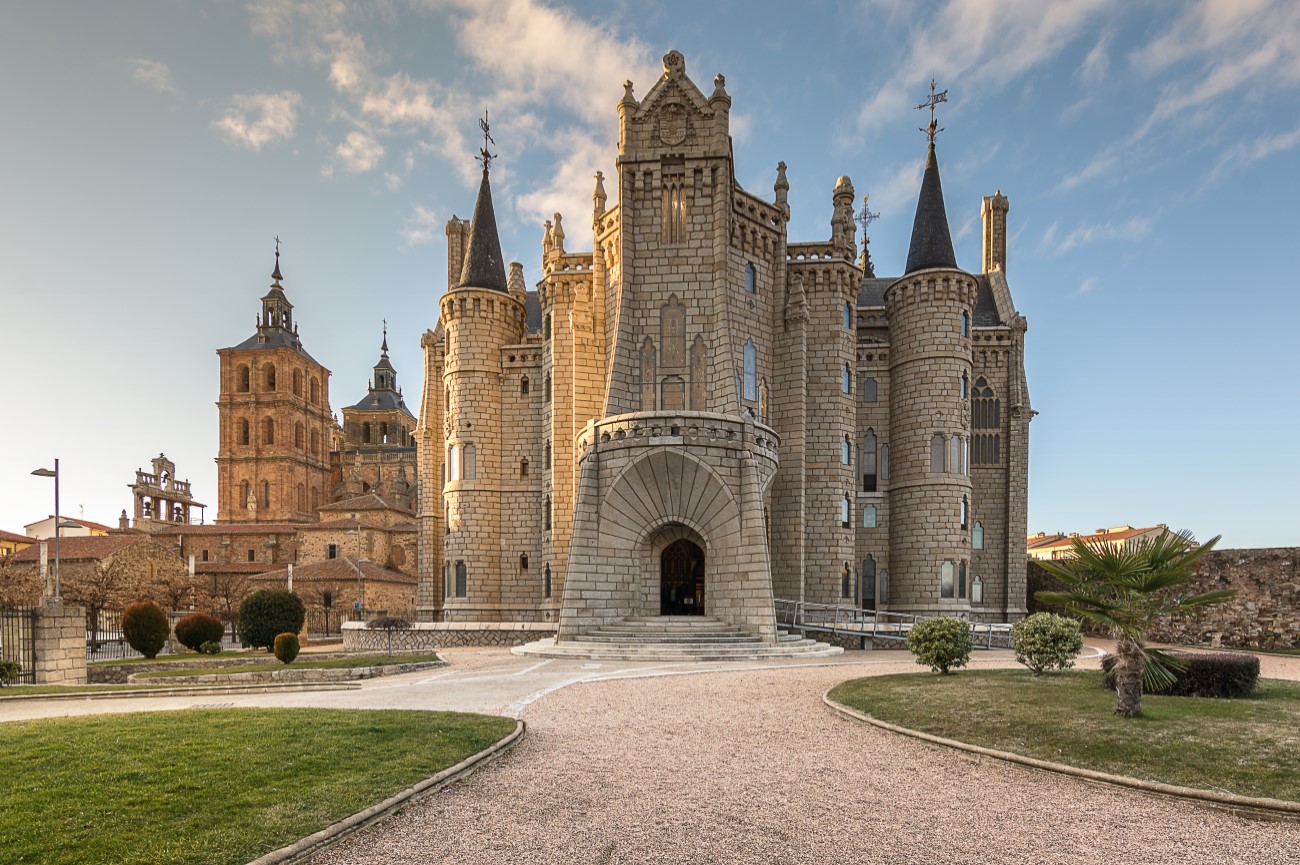
- Ponferrada: Ponferrada is another place worth visiting. Highlights include the Templar castle and a 16th-century basilica. The town is also a stop on the Camino de Santiago and a great base to explore the Roman mines of Las Médulas.
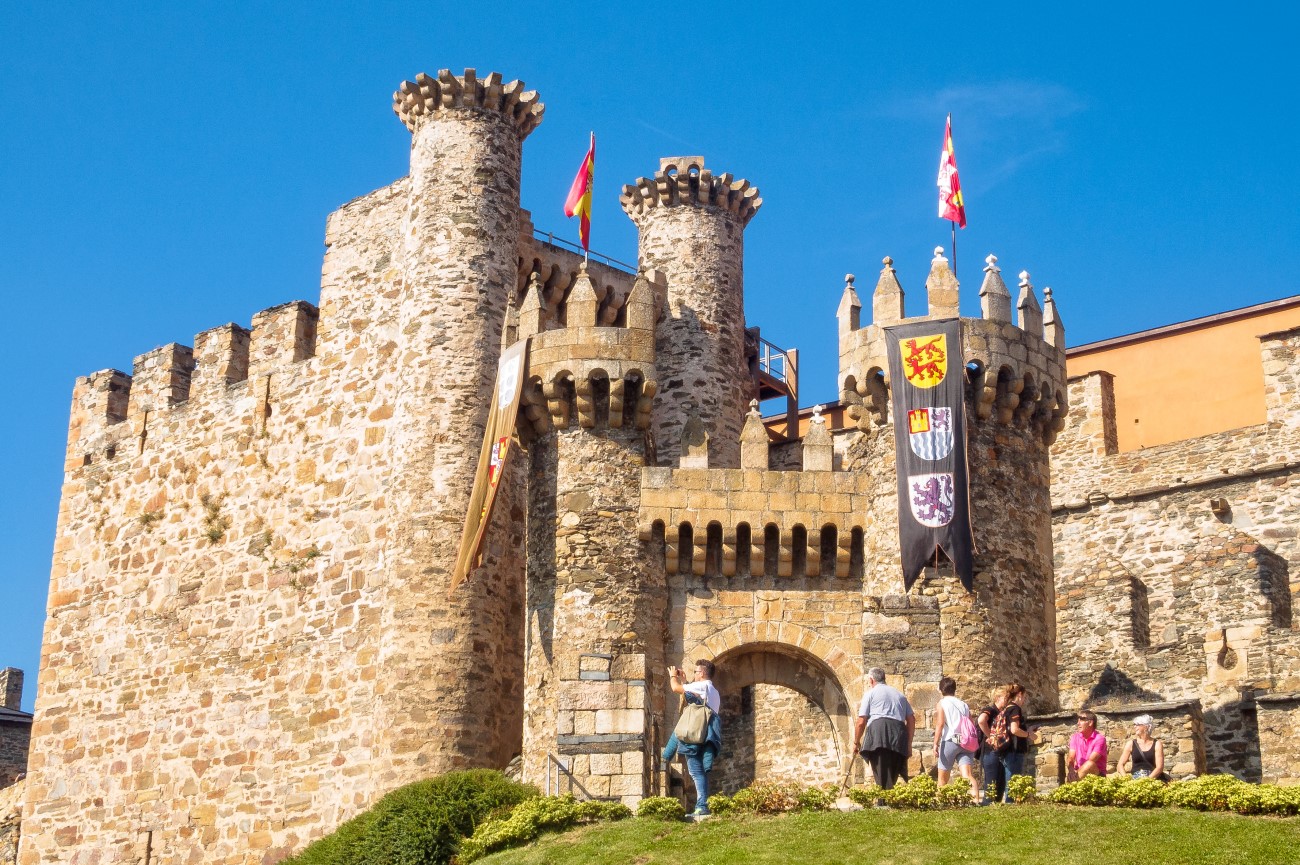
- Burgos: About two hours east of León, you’ll find Burgos . This city is famous for its impressive Gothic cathedral, which dominates the skyline. Other attractions include a medieval castle and the Museum of Human Evolution.
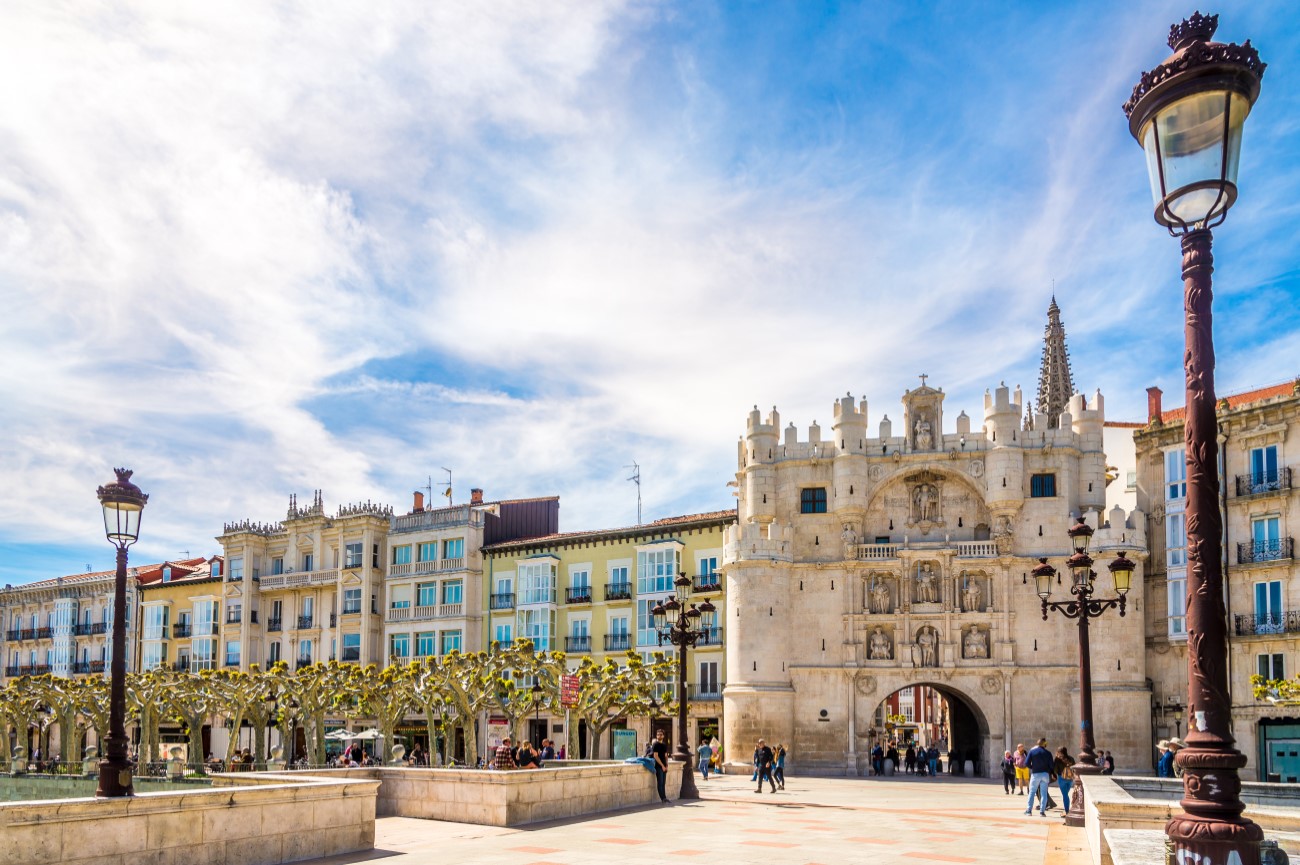
- Valladolid: Head south from León, and visit the lively city of Valladolid . Home to a series of medieval landmarks, it’s the capital of the Castilla-León region. Famous monuments include the Gothic San Pablo Church and a Royal Palace that welcomed Spanish kings in the early 17th century.
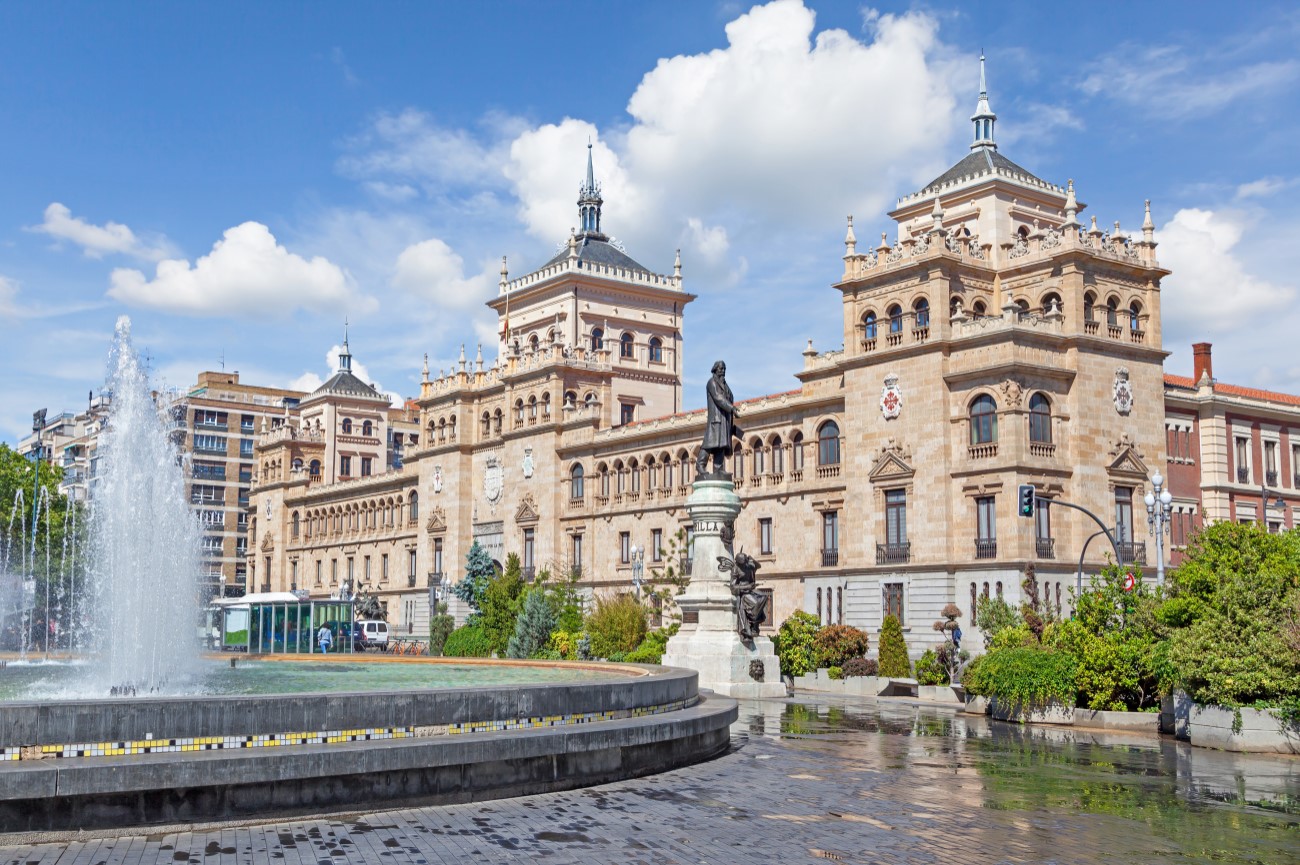
Top Things to Do With Kids in León
León is home to many family-friendly attractions. If you’re visiting in the summer, you can head to Islaleón, a water park with a large swimming pool and fun slides. Another option is to visit Villafranca del Bierzo, a small village near León famous for its river beach.

Closer to the city centre, there are also many parks where kids can run around including the Parque Del Cid or Parque De Quevedo.

If you’re staying a bit longer, you can explore other attractions nearby such as the enchanting forest of El Faedo or the mysterious Caves of Llamazares and Valporquero.
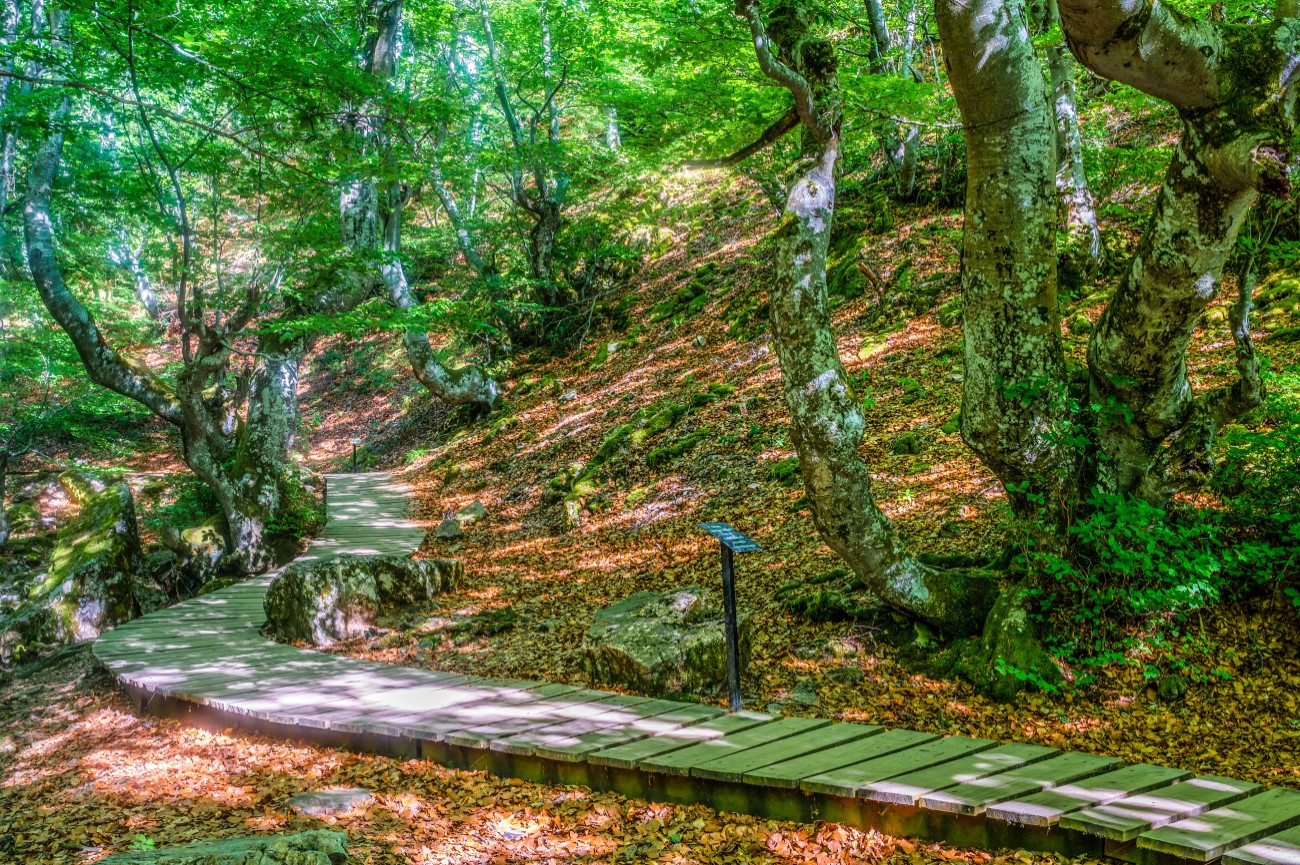
Where to Eat in León
The region of Castilla y León is renowned for its grilled and roast meats. Specialities include cecina (smoked beef) and the botillo, a meat-stuffed pork dish from El Bierzo, a district that also produces wine. Among the local sweets is the Mantecadas de Astorga, a kind of muffin that tastes similar to a pound cake. If you’re looking for places to eat in León, below is a list of the city’s top restaurants:
- Restaurante LAV: This modern restaurant is located a few steps away from the Museo de León. You can order à la carte or get the tasting menu which includes six different courses. The dishes change with the season, but the local cheeses are a constant feature.
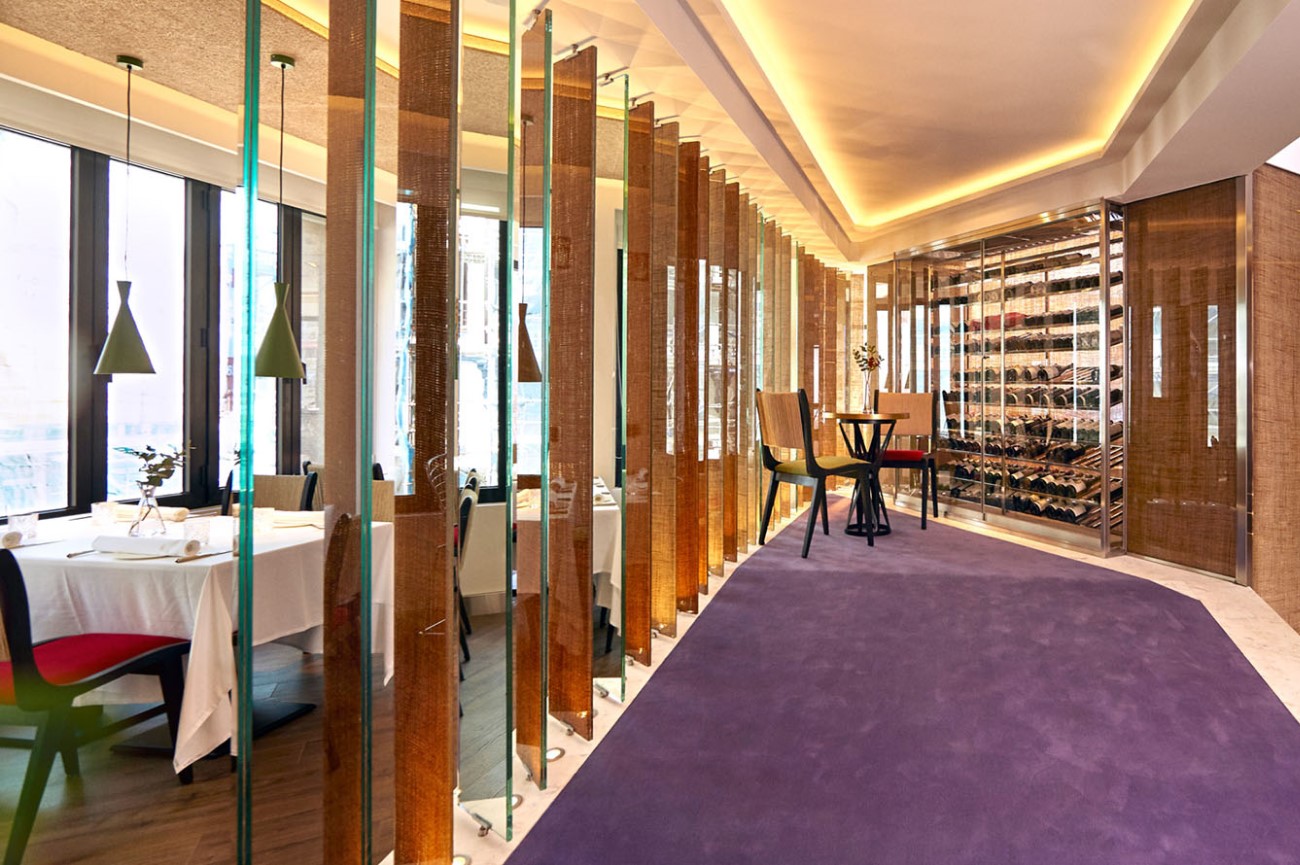
- Restaurante Alfonso Valderas: Open since 1998, this cosy restaurant specialises in cod and red meat dishes cooked in a variety of ways. Highlights include the cod risotto and the lamb ribs.
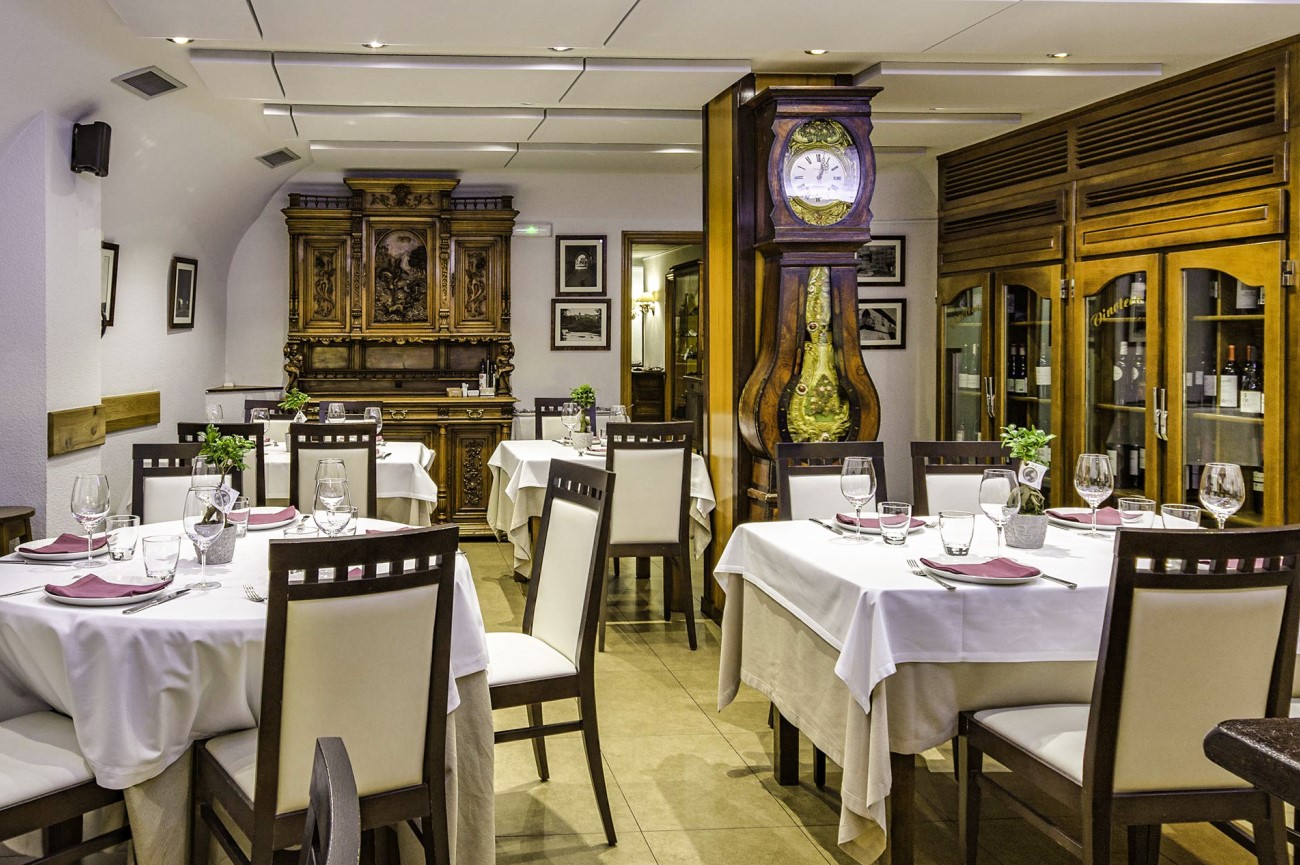
- Restaurante Cocinandos: Close to the Iglesia de San Marcos, you’ll find Cocinandos. This Michelin-star restaurant offers two seasonal menus and a wine list featuring mostly local wines. Specialities include the cold tuna and tomato soup and the pastrami.
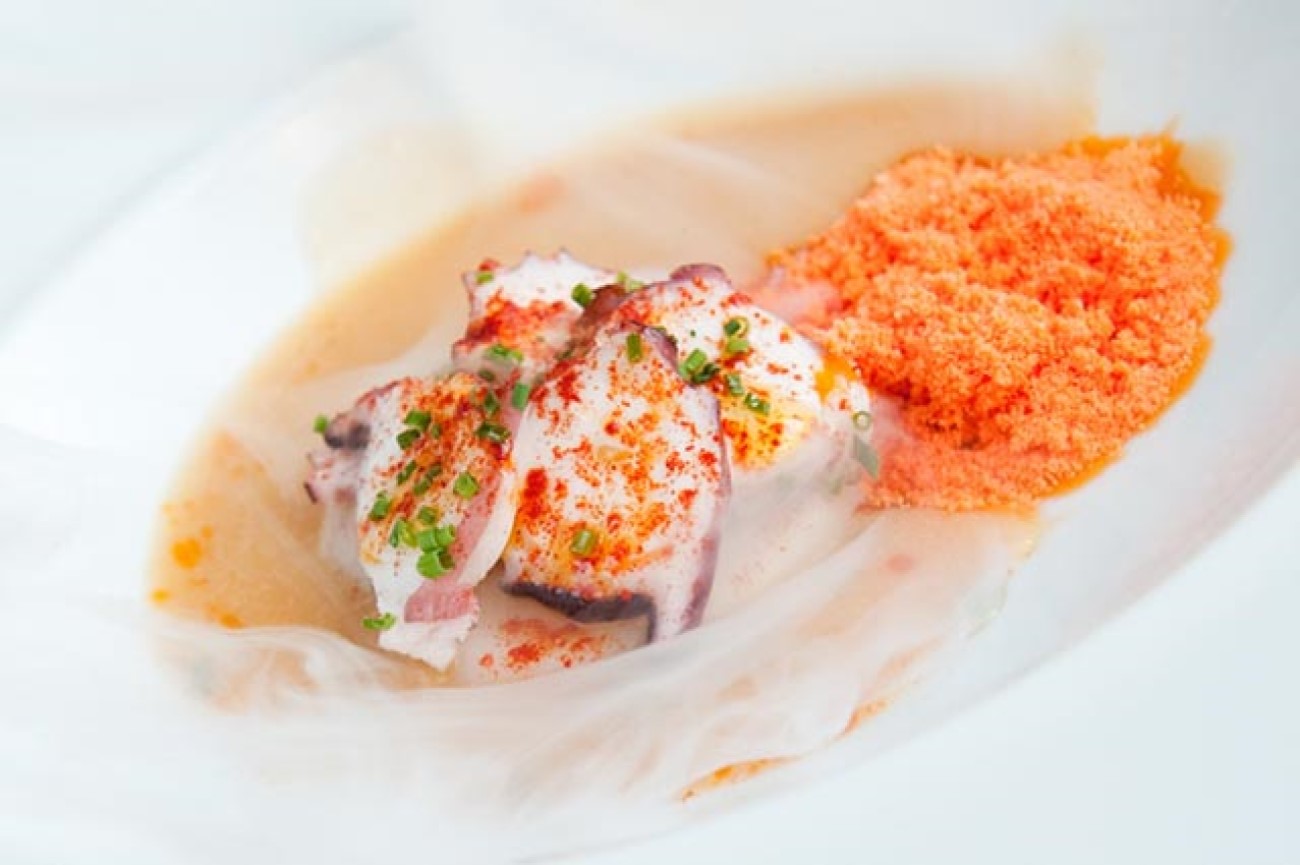
- Casa Mando: Casa Mando is located on the edge of the old town on Calle General Lafuente. It’s one of the best places to sample traditional Northern Spanish dishes. Try the solomillo (sirloin steak) or the cachopo (veal fillets with ham and cheese in breadcrumbs).
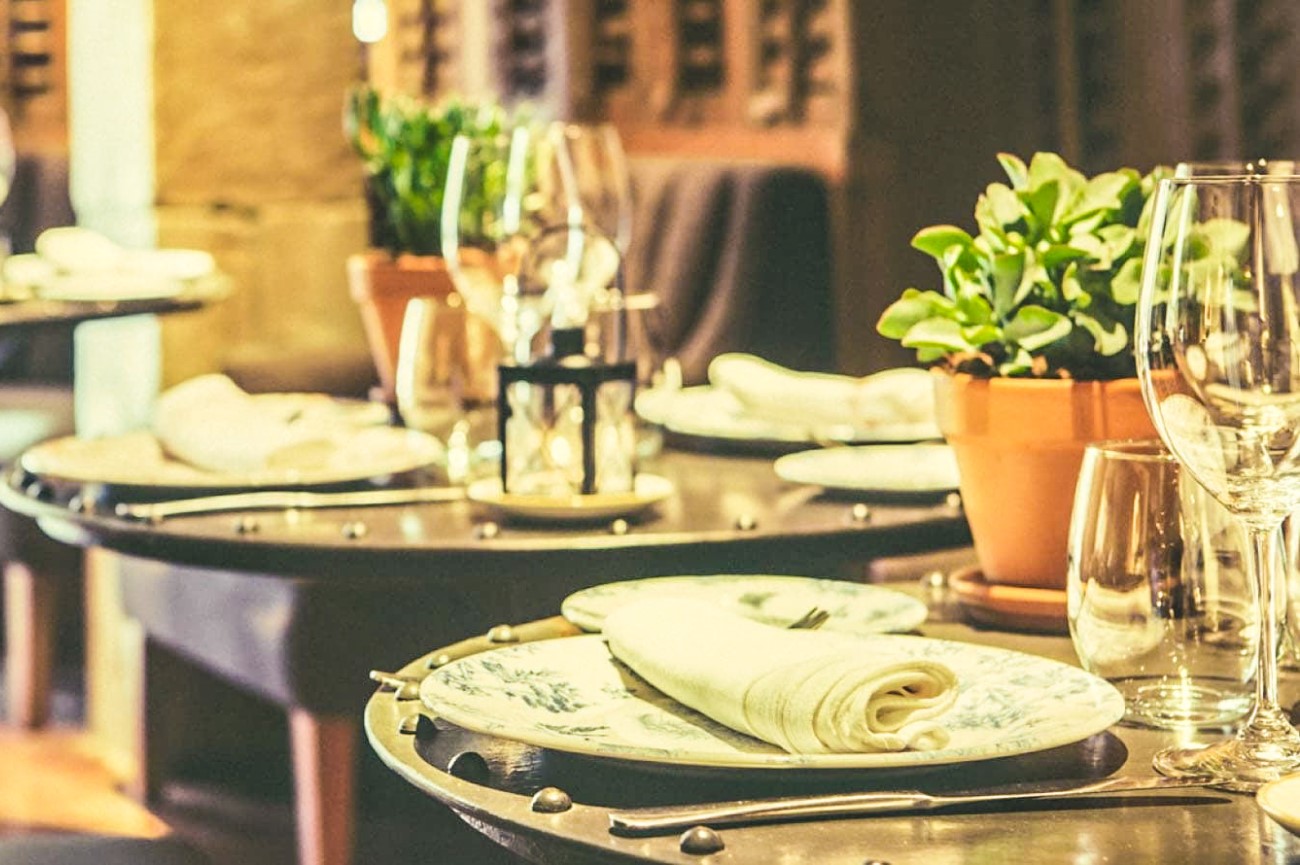
Where to Stay in León
- Parador de León (5 stars): This luxurious hotel occupies a 16th-century building once used as a military outpost. The vast property has an opulent decor with antique furnishings throughout. Some rooms even include four-poster beds and offer river views. There’s also a bar and a restaurant on site serving regional dishes.
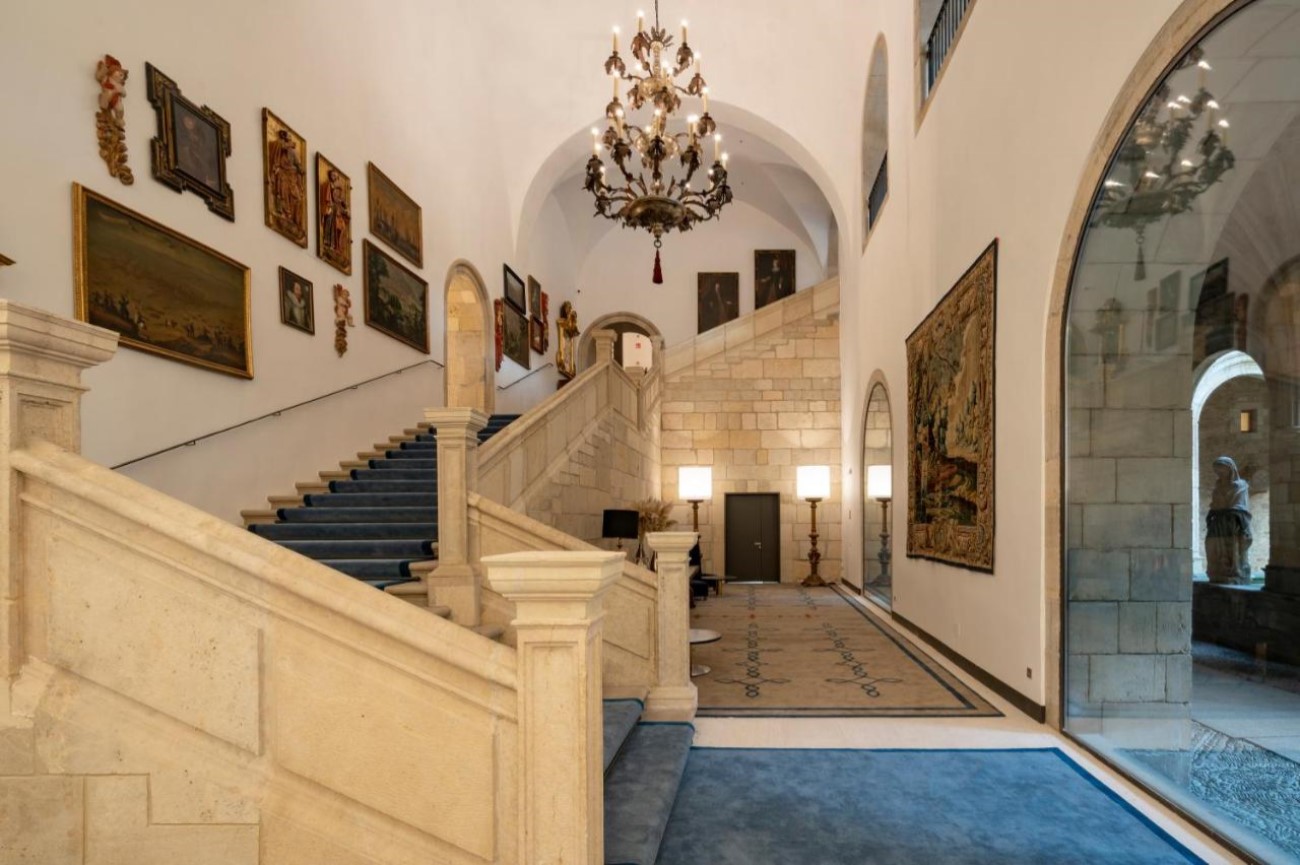
- Hotel Real Colegiata San Isidoro (3 stars): In the heart of the old town, you’ll find this historic hotel attached to the Basílica of San Isidoro. The city’s main attractions are only a few minutes away, making it the perfect base to explore León. The rooms are spacious and modern, contrasting against the historical features in the hotel’s patio and corridors.
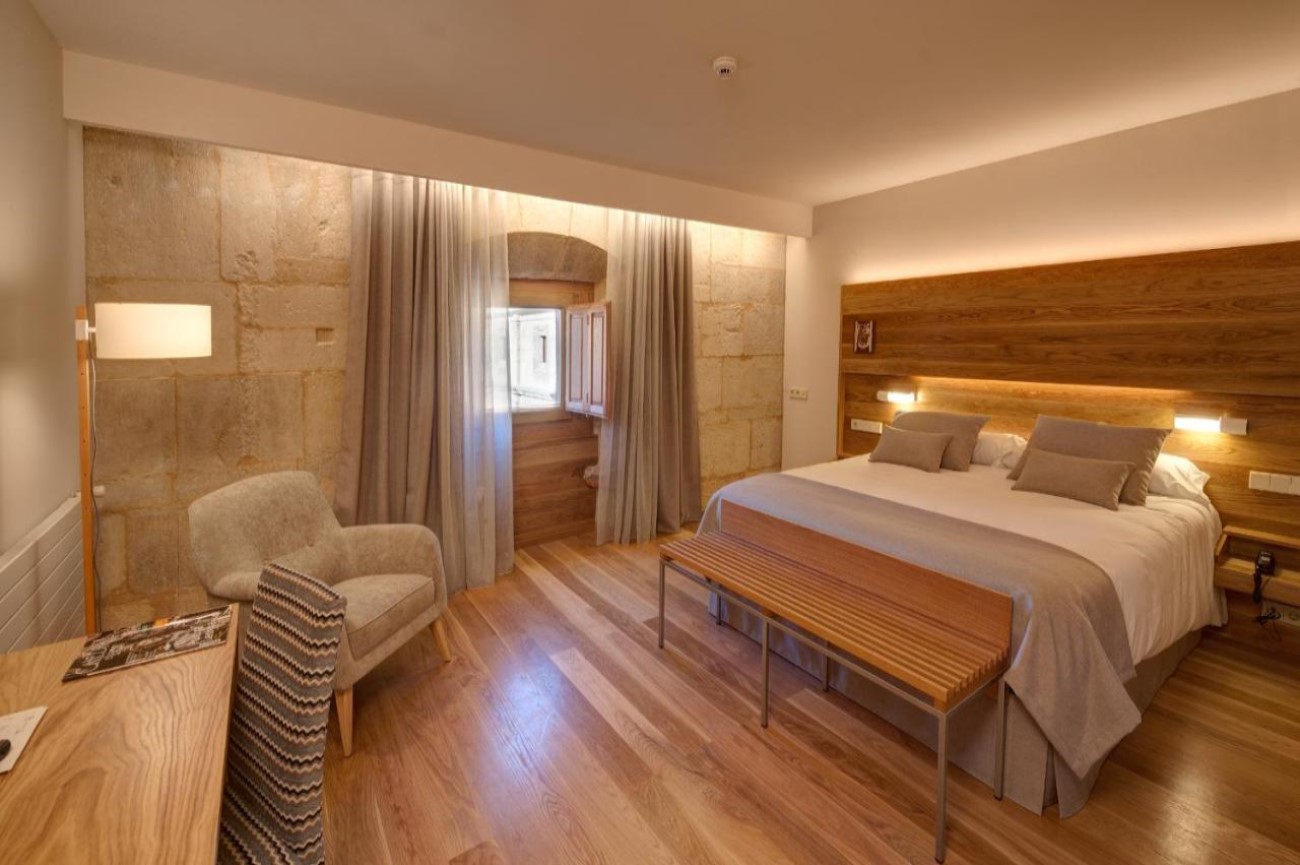
- Hotel Alda Vía León (3 stars): If you’re on the budget, this small boutique hotel is the perfect choice. Housed in an 18th-century building, the rooms have a rustic decor with exposed wooden beams and cast iron beds. It’s only five minutes away from the Cathedral.

Best Time to Visit León
The best time to visit León is between June and September. The weather will be pleasant enough to walk around with average temperatures ranging around 27º in August. Summer is also the perfect opportunity to catch local festivities like the Fiestas de San Juan y San Pedro. Another alternative is to visit around Easter for the Holy Week celebrations.

León Festivals
- Semana Santa: Like most Spanish cities, León celebrates Easter with a series of processions. These traditions date back to the 16th century and remain alive today. The event lasts for about 10 days and brings together the local hermandades (lay brotherhoods) who parade the streets with religious sculptures on their shoulders. Alongside the processions, there are also concerts and special sermons.
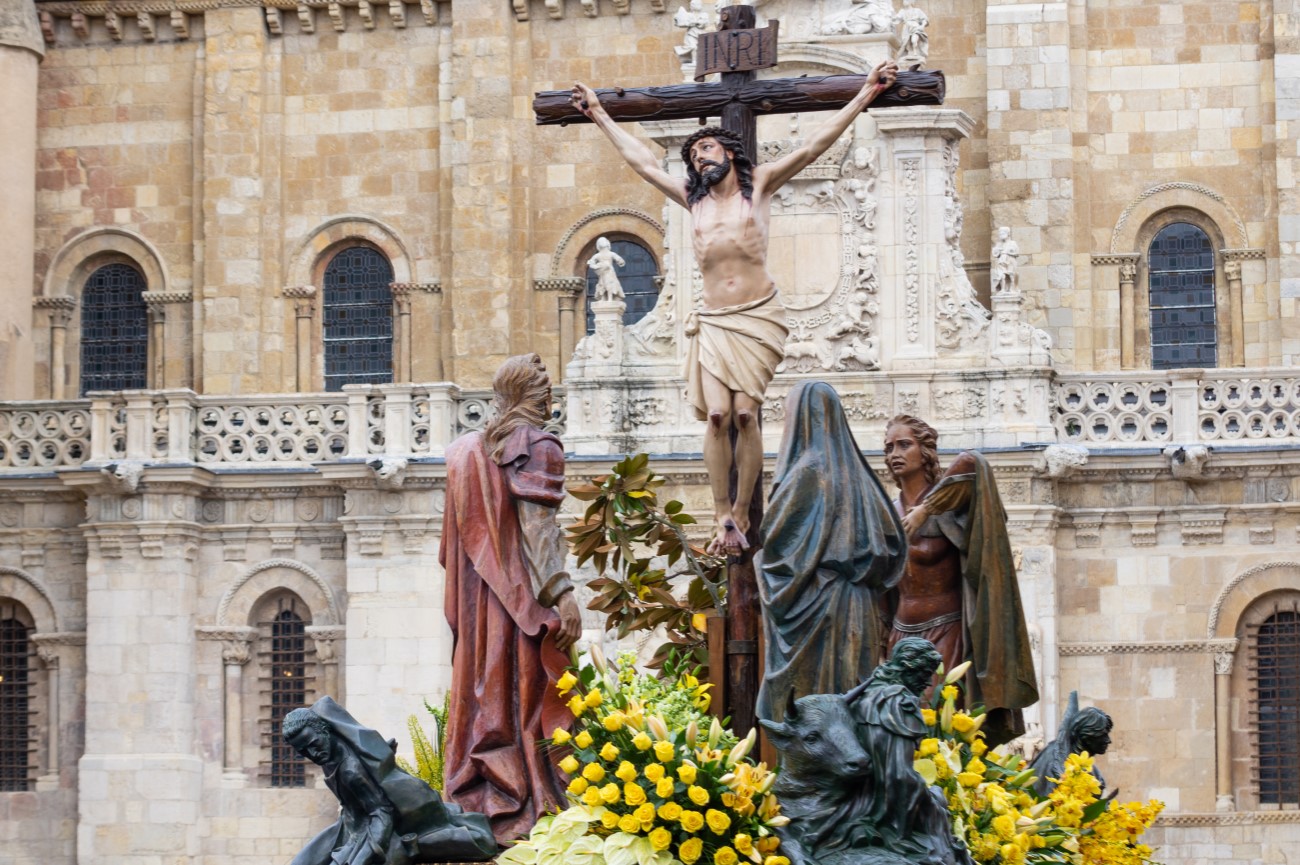
- Fiestas de San Juan y San Pedro: Around the last week of June, León comes alive with the San Juan and San Pedro celebrations. The festival includes concerts, food stalls and plenty of street performances.
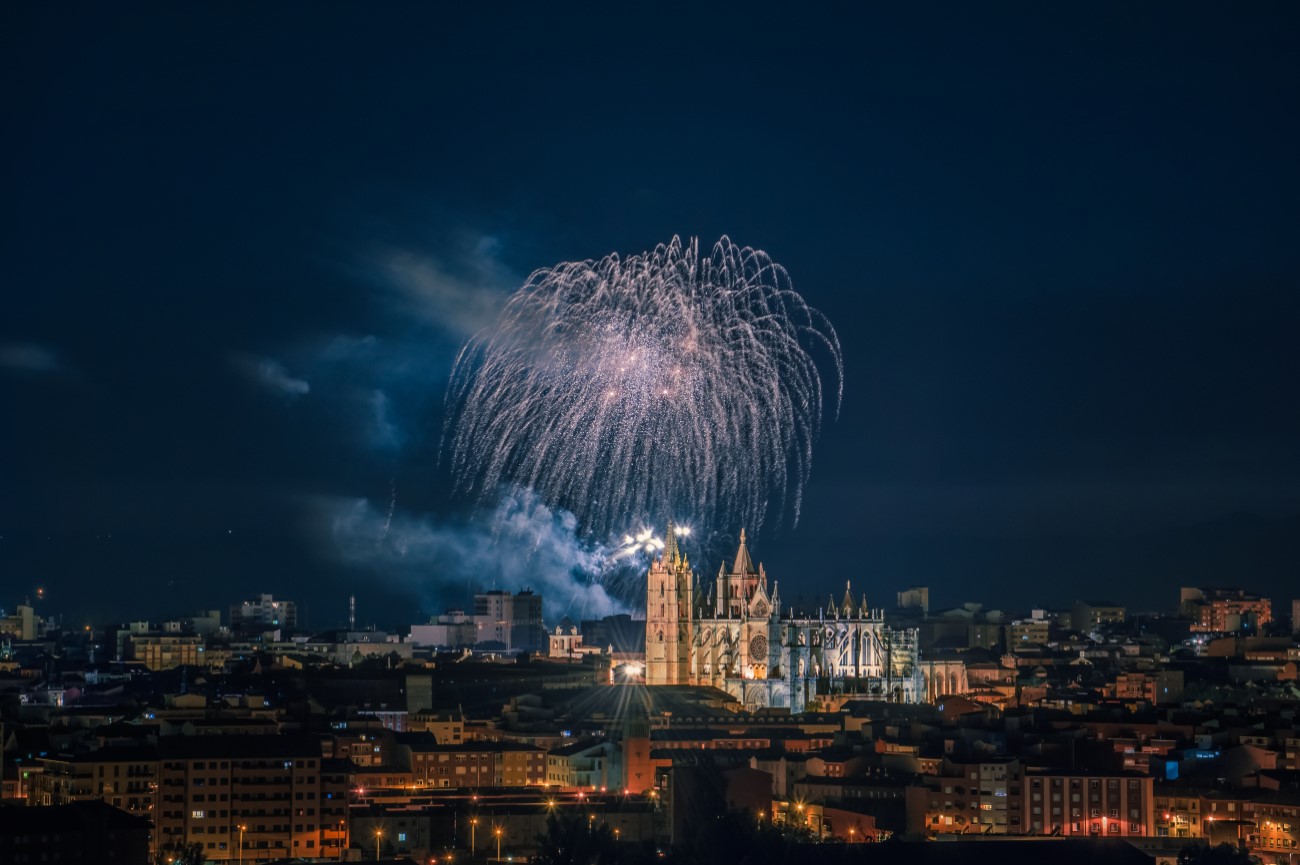
At our office
Request a quote
Return to Northern Spain Itinerary

We are the brand names of Iberian Escapes and Algarve Lifestyle, APCS Lda and Travel Iberica Ltd. We are a fully authorized travel agency licensed by Turismo de Portugal RNAVT/6867.
PRIVACY POLICY
DISCLAIMER
NEWSLETTER SIGN UP
© 2024 iberian-escapes.com. All rights reserved .
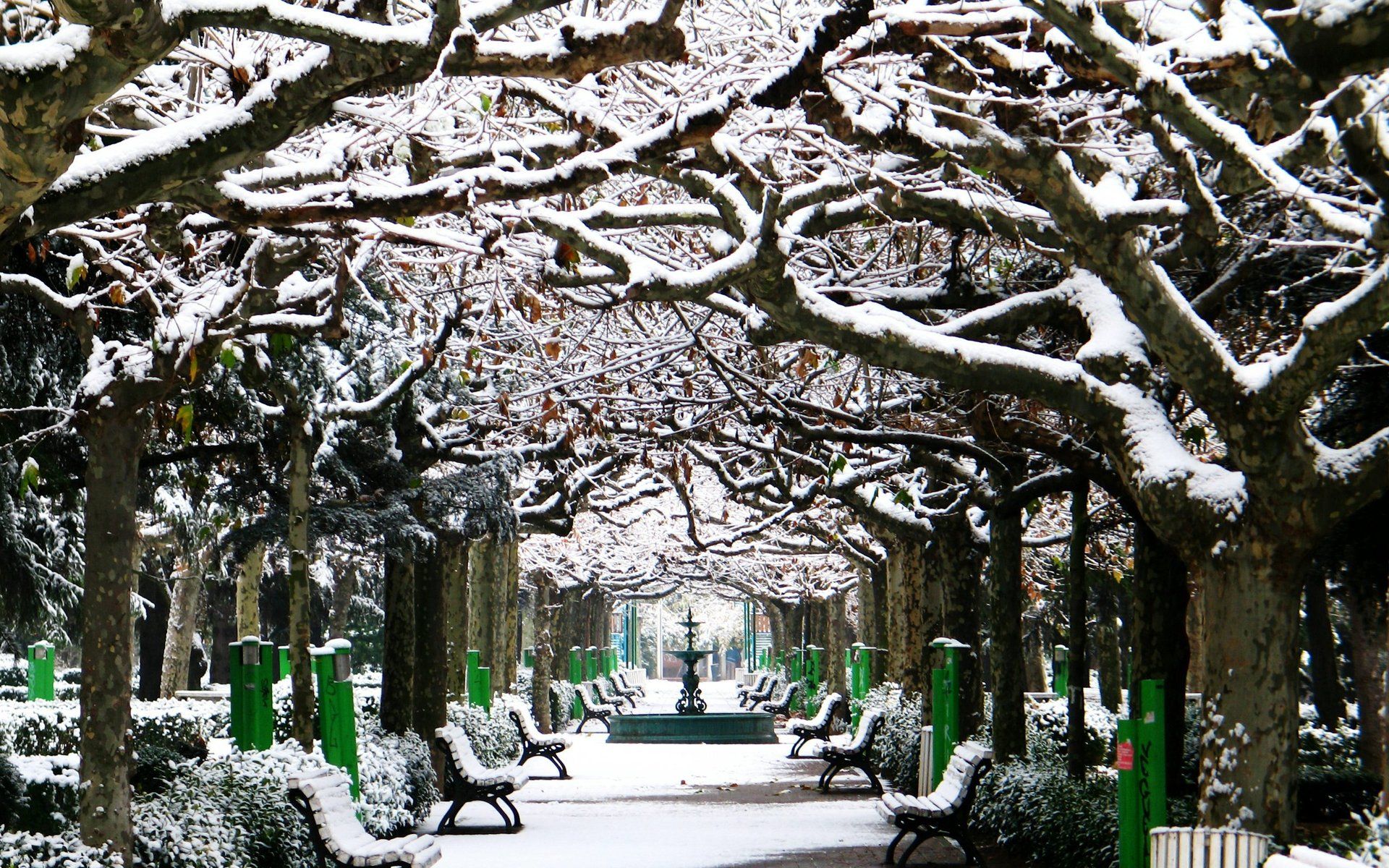
León Travel Guide
What's unique, león travel blogs.
- World Travel
- English Heritage
- National Trust
Our World for You

León, a northern Spanish discovery
In En-Route , Europe , Our Journeys , Spain , Trip-Types , World Travel by Janis 20th July 2018 8 Comments
Our visit to the historic city of León, Spain
León in northern Spain is a perfect city break for an instantaneous embrace of Spanish culture, food and beautiful architecture.
I felt like we had discovered a true gem when we visited Leon.
You're in León
We’ve come to fall in love with Spain over the last few years, during our road trips from north to south. The northern region of Spain where Leon is located is beautiful. With our passion for history, we couldn’t wait to unearth the ancient city of Leon in north-western Spain.
Quick Links
In León, we stayed at the luxury NH Collection León Plaza Mayor . The beautiful hotel directly overlooks the elegant Plaza Mayor.
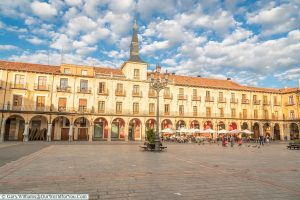
If you enjoy what you see, and you’d like regular updates then join us for a monthly newsletter.
About the Author
Janis, the co-founder of Our World for You, was born in London and raised in Kent and the Isle of Wight. Along with Gary her partner, they have been travelling part time since 1995. In 2016, they decided that enough was enough with the 9 to 5, so armed with the knowledge and experience that they had gained on their adventures, that they wanted to inspire others to travel the world near and far.

León Market Day
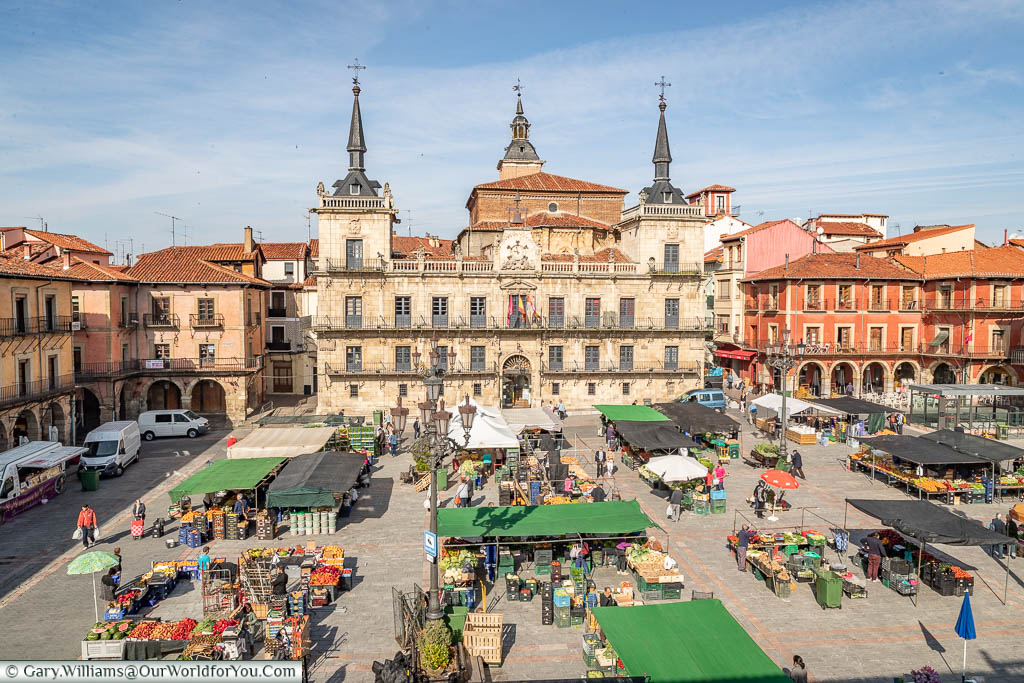
The view of the market from our hotel room

Fresh on the market

Fresh vegatables
León’s Plaza Mayor
The Plaza Mayor in León as you can imagine plays a central role within the historic city, especially on market days. However, when the stalls are all cleared away and the traders have all packed up it became very sedate.

The view from our room over Plaza Mayor
León’s central square is delightful, it’s framed on one side by the attractive Baroque old city hall. Around the other three sides are charming colonnades, with wrought iron balconies teetering above. Cafés and bars are nestled in between and such pleasant location to enjoy a coffee and watch the world slowly pass by.

The corner of Plaza Mayor
A helpful guide
I love nothing more than planning a trip and so often I use the DK Eyewitness books. I find them extremely informative, easy to follow and the pictures and maps tempt you into discovering more.
We used this version of the book to plan the northern part of our Spanish road trips.

León’s Striking Architecture
As you stroll around León, you’ll notice the varied styles of architecture throughout the city. One in particular that stands out is striking ‘castle-like’ Casa de los Botines, designed by Antoni Gaudi and one of only a few of his designs built outside Catalonia.

The Casa de los Botines

A monument to Antoni Gaudi on a bench

Leon Obispado
Getting to León
Start creating your own León adventure and discover the ancient history amongst the charming city streets. Search for your flights in one easy place with ebookers.com . Over 400 airlines are scanned for your favoured routes and chosen dates. Why not make your visit into road trip by flying directly into Madrid. León is around 211 miles (339km) drive away. Take a look at the latest deals on Rental Cars .
Convent de San Marcos
Along the banks of the Bernesga river is the Spanish Renaissance Convent of San Marcos. This is a beautiful building that overlooks the Plaza de San Marcos.

Now the convent is home to a hotel and under restoration, so, unfortunately, we were unable to see its intricate plateresque façade. However, the stroll to the plaza was worth it just to see the pilgrim statue in front of the convent. A lone pilgrim with his sandals by his side staring up.

Resting against the cross

Visited Spain and discovered any towns or cities that you really want to share with us, as we’d love to add them to our next road trip?
Cancel Reply
Notify me of follow-up comments by email.
Notify me of new posts by email.
This site uses Akismet to reduce spam. Learn how your comment data is processed .
Pulchra Leonina
The Gothic Cathedral that stands in León was built during the 13th century, although this is extremely old, this was the 3rd cathedral to be built on this site.

The original León cathedral was constructed on the site of ancient Roman Baths during the 2nd century. It’s incredible the size of such a cathedral considering what the population of the city would have been at the time.

Detail inside the Cathedral

Stained glass window inside the Cathedral
The cathedral is also known as Pulchra Leonina or The House of Light due to the astonishing amount of stained glass windows throughout there are 1,800 square metres.

The Interior of the Cathedral
Did you know?
Leon cathedral is one of the three most important cathedrals, along The Way of Saint James (El Camino de Santiago), along with that of Burgos and Santiago de Compostela.
León Basilica
Not content with an impressive cathedral, León also has a lovely ochre Romanesque Basilica, named Basílica de San Isidoro de León. The basilica was built in 10th century on the grounds of a Roman Temple.

Basilica of San Isidoro
The ancient walls that surround part of the city were built in the 1st Century BC & then further enlarged during 3rd & 4th century AD.

The Arco de la Cárcel

The City Walls
There is only one remaining gate to the city is ‘Arco de la Cárcel’, although it has since been rebuilt it still retains of its Medieval structure.
Discover more
If you’re touring Spain on a road trip, take a look at our post on the UNESCO sites in Spain part one and part two . All of them are incredible, I really don’t think I could choose a favourite.
Birdseye view
During our road trip, we had seen storks nesting in some unusual places, but this one was undoubtedly comfortable where it had made its home.

The stork with the classy home with a view
Passing through
As we wander around the city, we come across so many pilgrims young and old on the route to Santiago de Compostela. León is along the ‘French Way’ of the Camino de Santiago, a very well-trodden path.

The brass marker

Follow the way
Where we ate in León
One of our lasting memories of León is standing in the tapas bars enjoying the local chatter around us, sipping Spanish red wine and savouring the complimentary tapas. (In some places, we paid €2.80 for 2 wines & tapas)

Complimentary Tapas
We love the Spanish culture of try a little and move on. Gary enjoys the local morcilla (blood sausage) not to everyone’s taste, but ‘when in Rome’.
Where we stayed in León
Our accommodation for the two nights we were in León, was at the Hotel NH Collection León Plaza Mayor. This hotel was in a fantastic location, as you stepped out of the door you were straight into Plaza Mayor, within the heart of the old town.

The hotel also had allocated parking in the car park underground.
* This post may contain links to affiliated sites where we earn a small commission at no additional charge to you.
Inspired to visit León?
Pack your bag and start planning, there is so much to see in this ancient city.
(Why not Pin It for Later?)
Share this post
We love Spain, and always talk about when we were there and when we will go again! I’ve visited San Sebastian and Bilbao in the North, but haven’t been to Leon. I’ll put it on my list! #farawayfiles
Leon is really a lovely city, very traditional. Other places in the north we’ve visited are Oviedo, Burgos, Logrono & Santander. Like you we also enjoyed Bilbao, fantastic tapas or pintxo as they call it there.We have only started to visit Spain in last five or six years and found some fascinating places, all over the country, (I’m always talking about Seville).
Well you’ve certainly inspired me to visit Leon. I hadn’t heard much about it until now and it looks more than worth a visit, and what a great location you chose for your hotel! That must have really added to your experience. Thanks for sharing on #FarawayFiles
We really enjoy visiting these types of Spanish cities and towns, ones that slightly off the radar. Salamanca was another city we really loved.
It was great staying in the heart of the city, however, it’s not always possible when you want somewhere with secure car parking.
Gah, I love lesser known Spanish cities! I studied in Salamanca and visited so many unexplored places in Spain, I loved it. Never quite made it to Leon, unfortunately, as it looks lovely! It reminds me a little of Estrella, in the north, which is also on the Camino.
We really enjoyed Salamanca as well, love the tapas culture of eat a little then move on to the next bar. I’ll keep an eye for Estrella, if you have any other recommendations we’d love to hear them?
Oh there’s loads!! Burgos is also worth a visit, I think. And even though San Sebastian and Bilbao are a bit more wellknown, they’re well worth the visit. I have my eye on Tarragona and Zaragoza for next spring!
Thanks for the tips. We briefly visited Burgos but certainly need to return & really loved Bilbao. Never been to Tarragona and Zaragoza, so I’ll keep a look out for your posts next year.
Leave a Comment Cancel reply
Privacy overview.

Borders Of Adventure
Leading Culture and Adventure Travel Blog by Becki Enright. Looking at the world with a different angle to change perceptions of misunderstood places, for the best in travel.
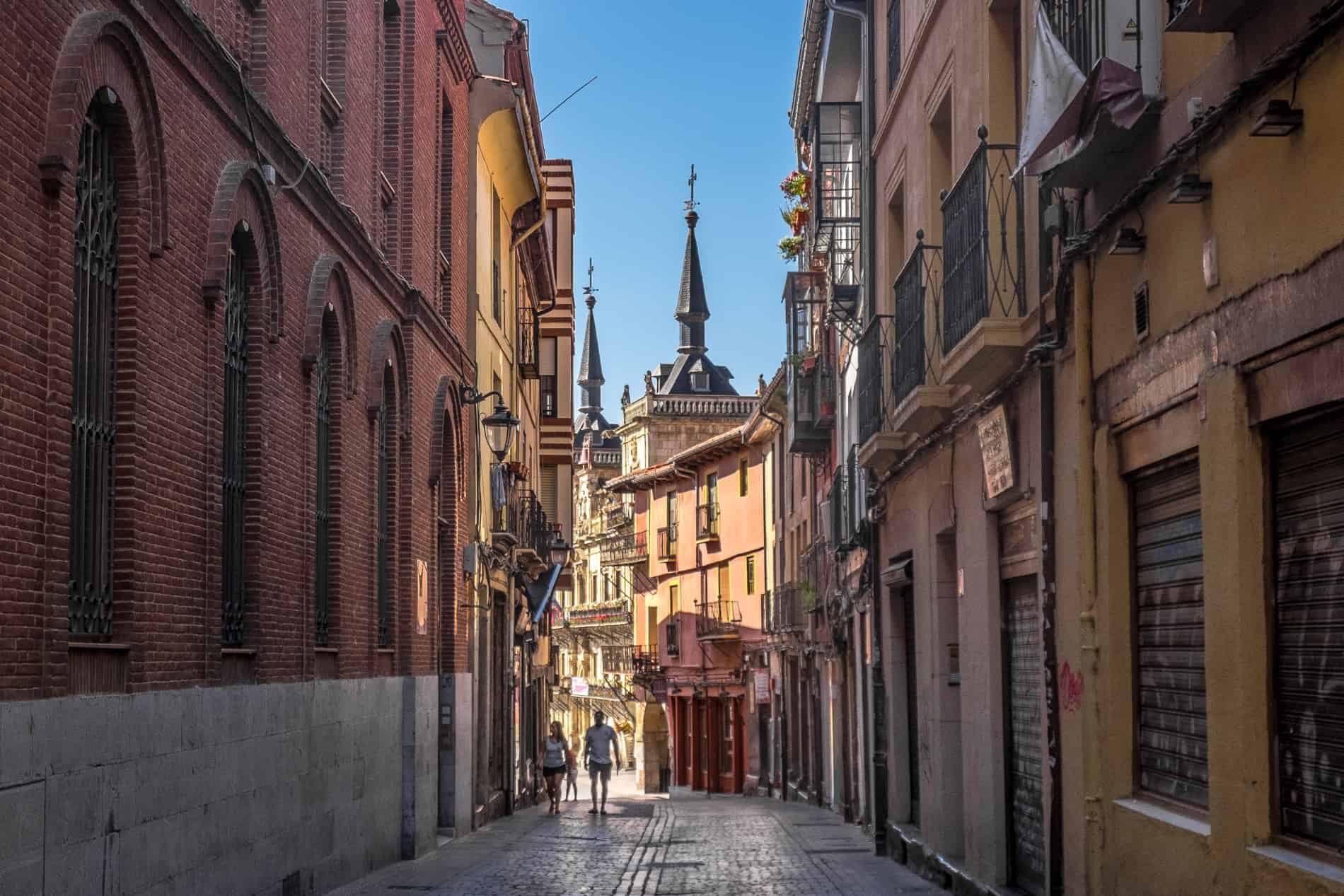
Cultural Travel , Spain
Things to Do in León, Spain – Tracing Empire, Kingdom and Camino
Disclaimer: This post contains affiliate links to handpicked partners, including tours, gear and booking sites. If you click through or buy something via one of them, I may receive a small commission. This is at no extra cost to you and allows this site to keep running.
A Roman encampment to an ancient kingdom in the Middle Ages. A city on the Pilgrim’s Road to Santiago de Compostela and a site for Gaudí’s work outside Barcelona. Here are the things to do in León, Spain – tracing Empire, Kingdom and the Camino.
The namesake capital of the Province of León in the Autonomous community of Castilla y León in northern Spain brims with cultural heritage. From its architectural monuments to its stone-set avenues, the city of León preserves a great legacy.
Remnants from its origins as the Roman encampment of Legio VII Gemina 2000 years ago to its days as the Middle Ages stronghold Kingdom of León from 910-1230 AD overlap. The 13th-century gothic Cathedral of light, Romanesque Basilica of San Isidoro, Renaissance masterpiece of Hostel de San Marcos and Gaudi’s modernist Casa Botines are testament to León’s importance over the ages. And how the city prospered on the route of the Camino de Santiago.
Of course, one doesn’t have to be a pilgrim to visit León, but you’ll soon see and feel its significance. The question is, where do you begin in this stack of historical heirlooms? Here’s what to do in León city to get you started.
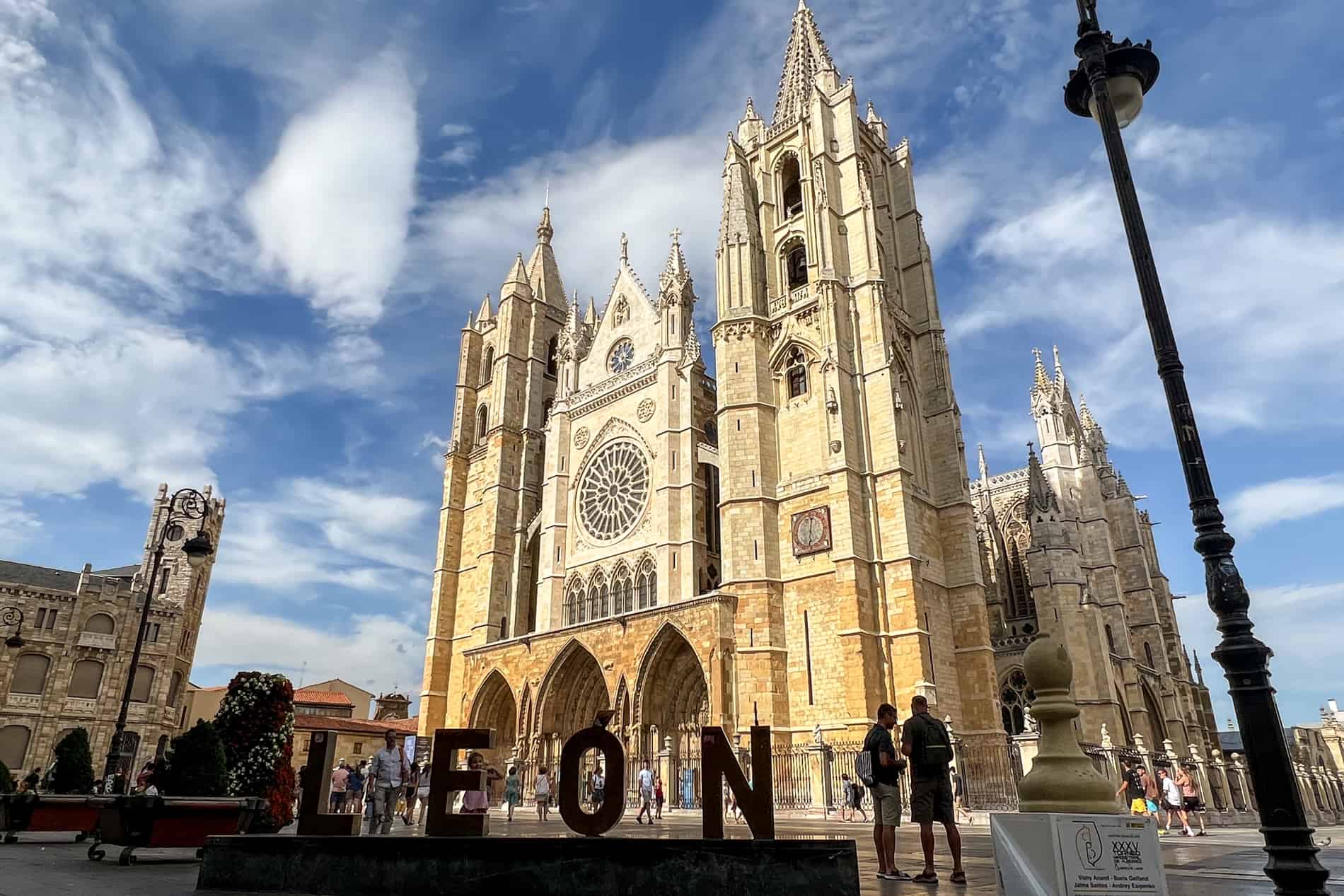
Things to Do in León, Spain – Prominence, Power and Preservation.
Where is León, Spain?
Best time to go to león, getting to león, where to stay in león, plaza de san martín, plaza mayor, plaza del grano, walk along the medieval fence, casa botines, palacio de los guzmanes, plaza de san marcelo, la catedral de león, basílica de san isidoro de león, museo de león, hostel de san marcos parador de león, where to see the roman walls in león, the silver route, enjoy the contrast of modern art in león, wine tourism in león, visit valladolid, visiting león city – things to know.
The autonomous community of Castilla y León is in northern Spain, with Madrid to its south and Asturias and Basque Country just some coastal regions bordering it north. It’s made up of nice provinces: Avila, Burgos, Palencia, Salamanca, Segovia, Soria, Valladolid, Zamora, and León – of which León city is the provincial capital.
This region sees the extremes of the high seasons – super cold winters that can reach -12, especially in January and December, and sweltering summers of up to 40 degrees, with July and August the hottest.
The best time to visit León would be in the shorter spring (April, May) and autumn (September, October) seasons, although you’ll find cooler climes with likely higher tourism footfall.
The easiest and best way to get to León is by train from Madrid. While León has a domestic airport (LEN) 6 km from the city, it’s better known as one of the main rail centres. It takes around 2 hours and 15 minutes on the Renfe service .
Castilla y León has more connection trains to Madrid than any other region in Spain, with León a busy connection station for services to other cities in northern Spain. I travelled from the Asturian capital of Oviedo to León , which also took 2 hours and 15 minutes.
Are you planning on travelling around the country by rail? My Spain by train guide about using the service, booking tickets, and mapping out a route, will get you started.
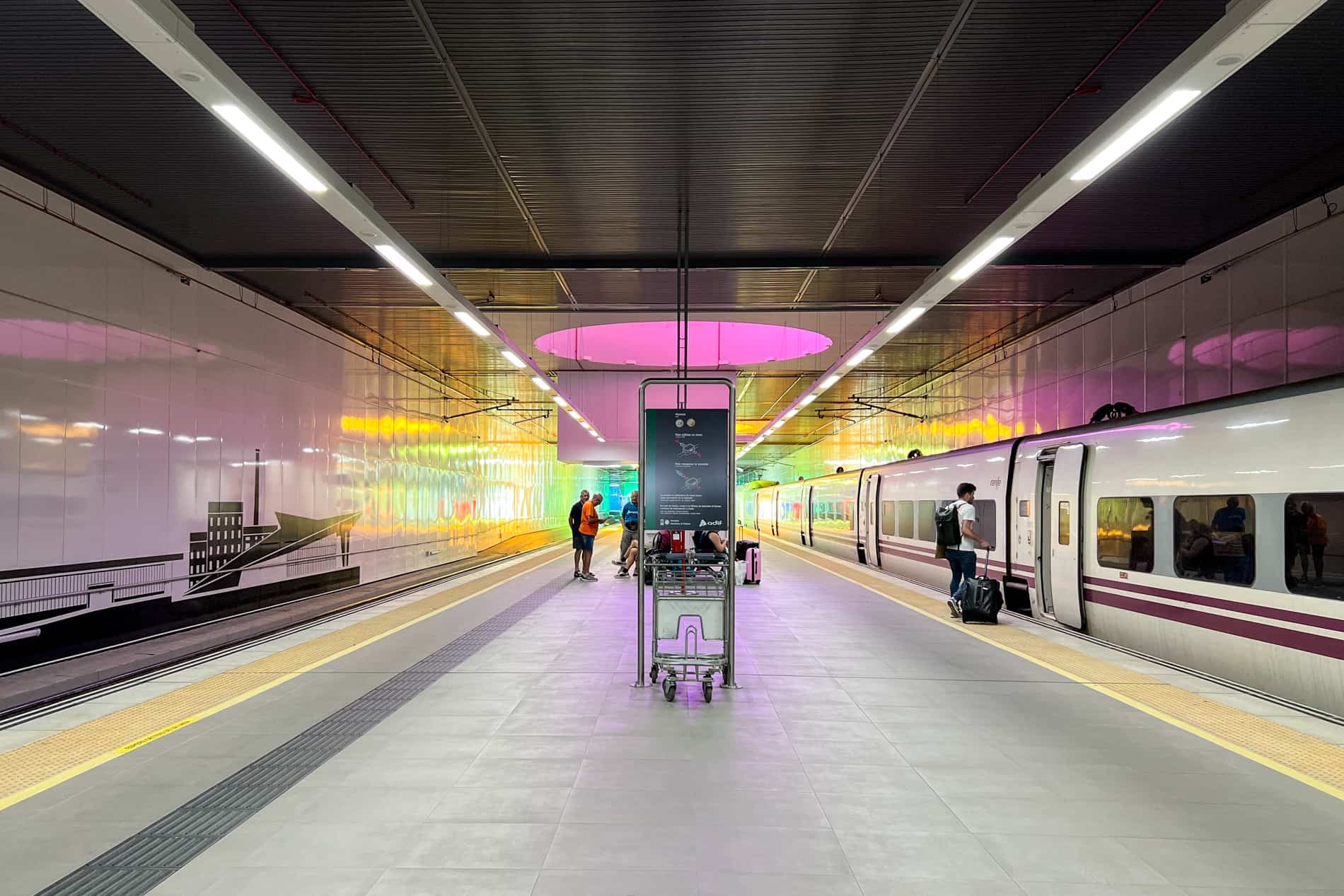
The colourful León train station.
I stayed at the Hotel Real Colegiata San Isidoro – the on-site hotel of the Romanesque Basílica de San Isidoro de León. It was built within a renovated and modernised portion of the monastery and opened to the public in 2005. Rooms overlook the three-storied golden arcade building and romantic courtyard on one side and the Roman wall on the other.
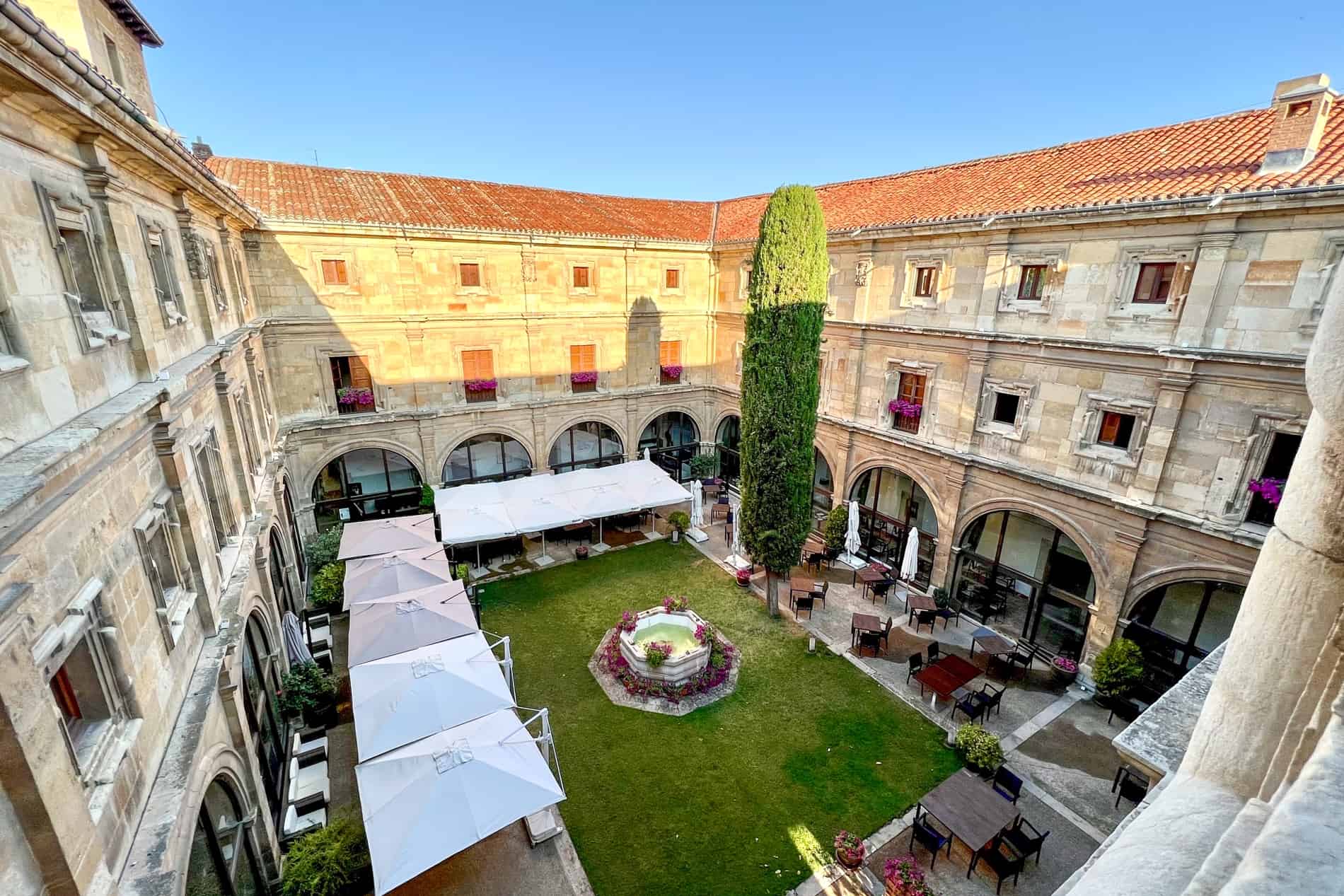
Room with a view. The courtyard of Hotel Real Colegiata San Isidoro.
The Parador de León comes with a high budget, although you pay for the privilege to stay in this preserved 16 th -century masterpiece monastery. Alternatively, stay in the heart of historical León and Barrio Húmedo in the NH Collection León Plaza Mayor . Sleep in style in this renovated 19th-century building and be close to León’s attractions.
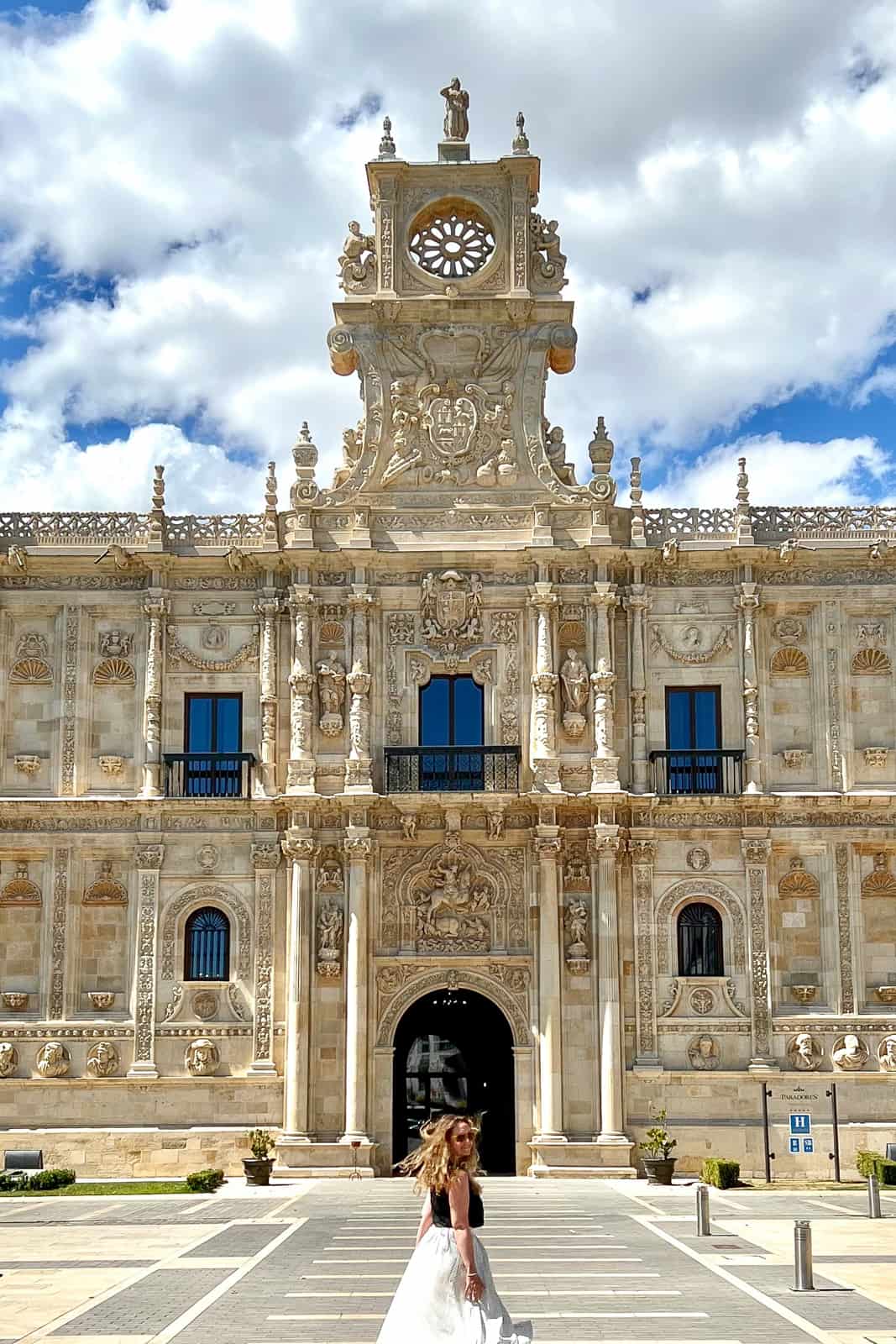
Stay in the elegant, luxury Parador de León.
All the Things to Do in León
The easiest way to break down the places to visit in León is by segmenting your sightseeing into the areas where the four main monuments and historic plazas are situated and where you can find the parameters of the old Roman walls.
Start in Calle Ancha. This street, lined with flower-filled balconies of 19th-century buildings, is one of the most beautiful avenues in the city. It’s also a dividing marker between the two districts of Bairro Húmedo and Barrio Romántico – a great navigation point to begin your historical and heritage-filled exploration.
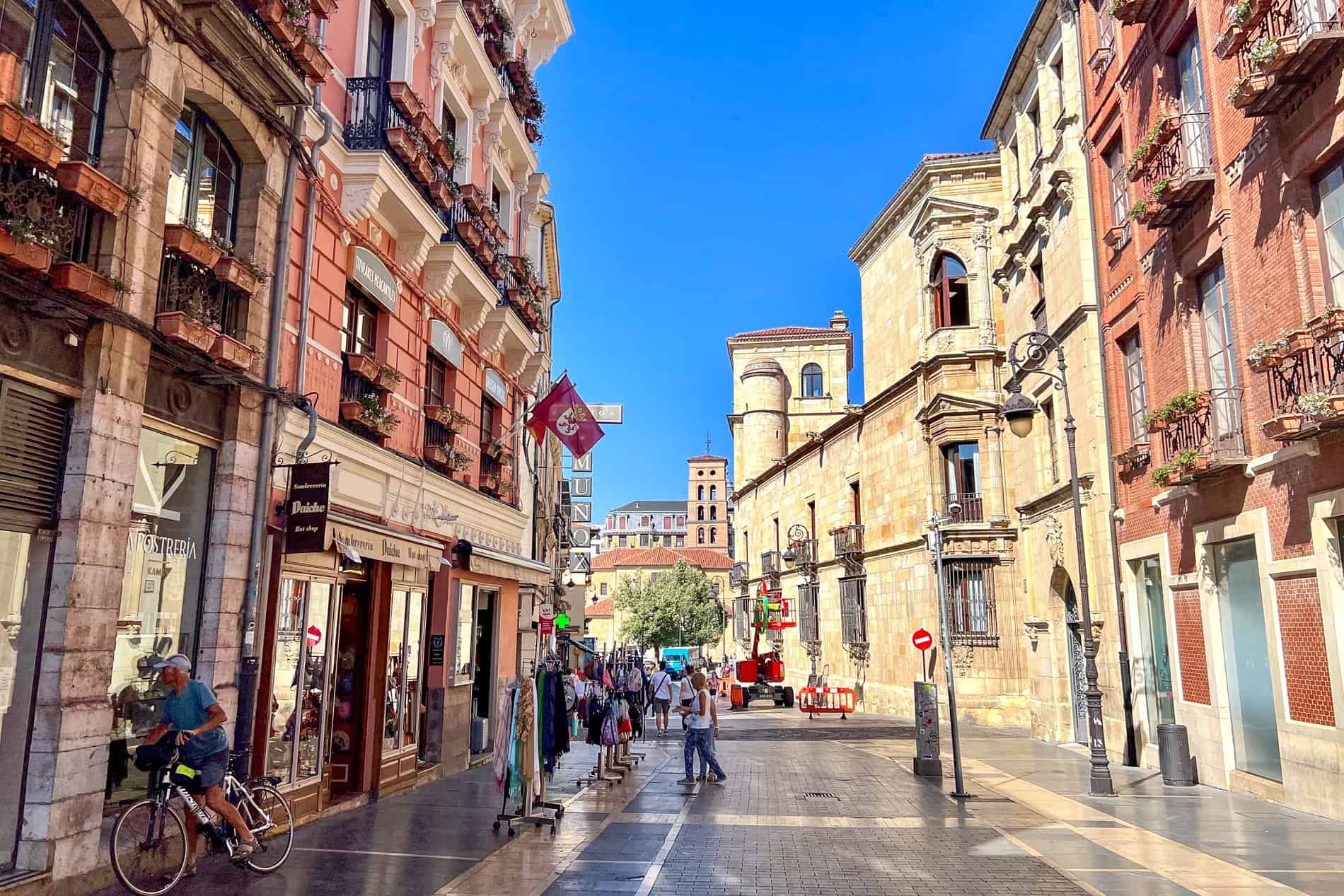
The beautiful Calle Ancha.
In Barrio Húmedo – The Historic Quarter
Beyond its unmissable monuments, León is a walkable city with a maze of streets perfect for the curious-minded – and there’s no better place to start than Barrio Húmedo. Take a meander through Medieval streets filled with warm colour and timeworn character, where gritty exteriors mesh with the relic facades of the Middle Ages.
Between the scattered palaces and churches, you’ll find a host of cafes, bars, and restaurants. Barrio Húmedo translates into the ‘Wet Quarter’ since it has the largest cluster of bars in the city. You’ll indulge in the famed Leonese tapas at these watering holes – served free with every drink you order.

Wondering what to do in León? Start in Barrio Húmedo.
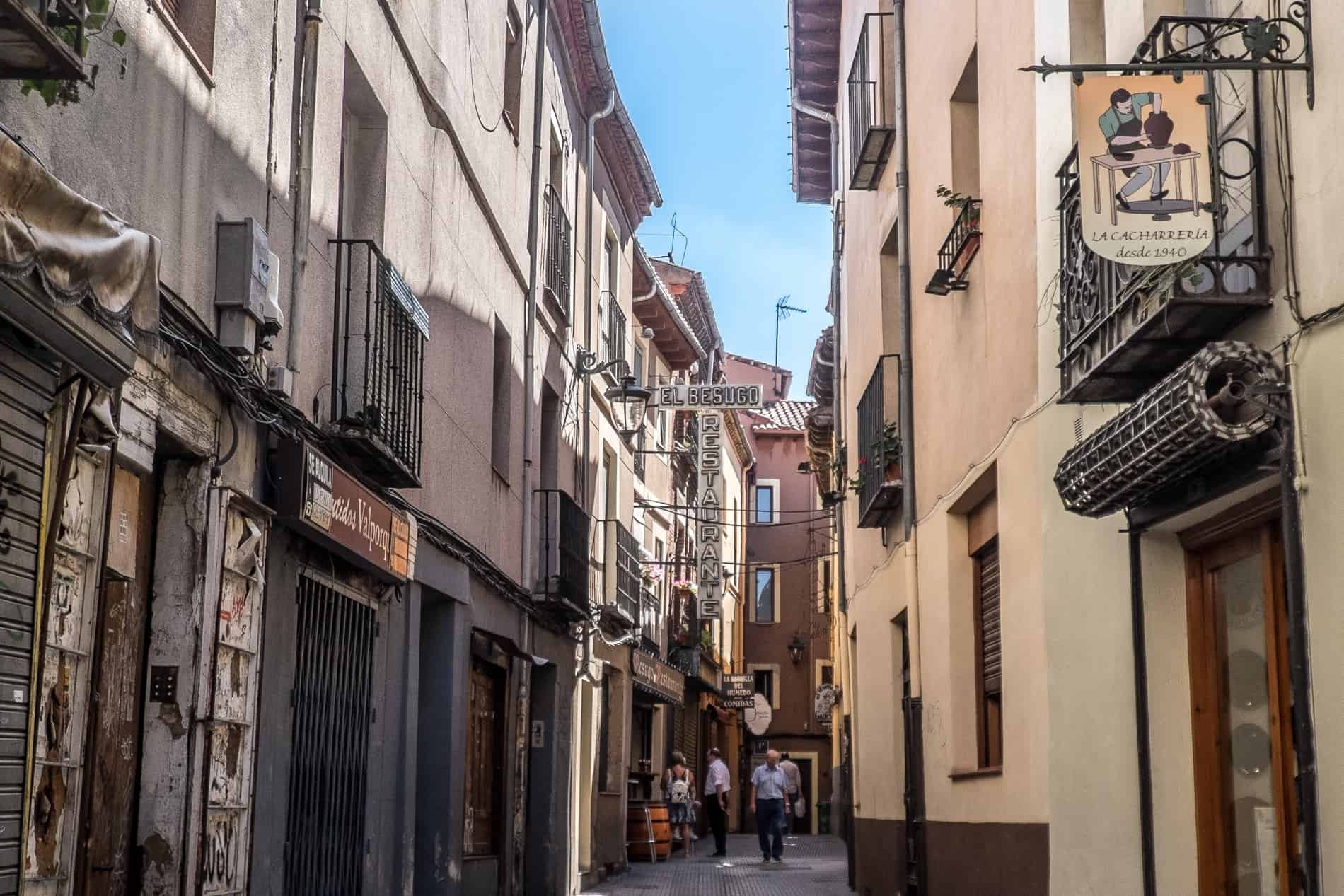
The maze of streets in Barrio Húmedo.
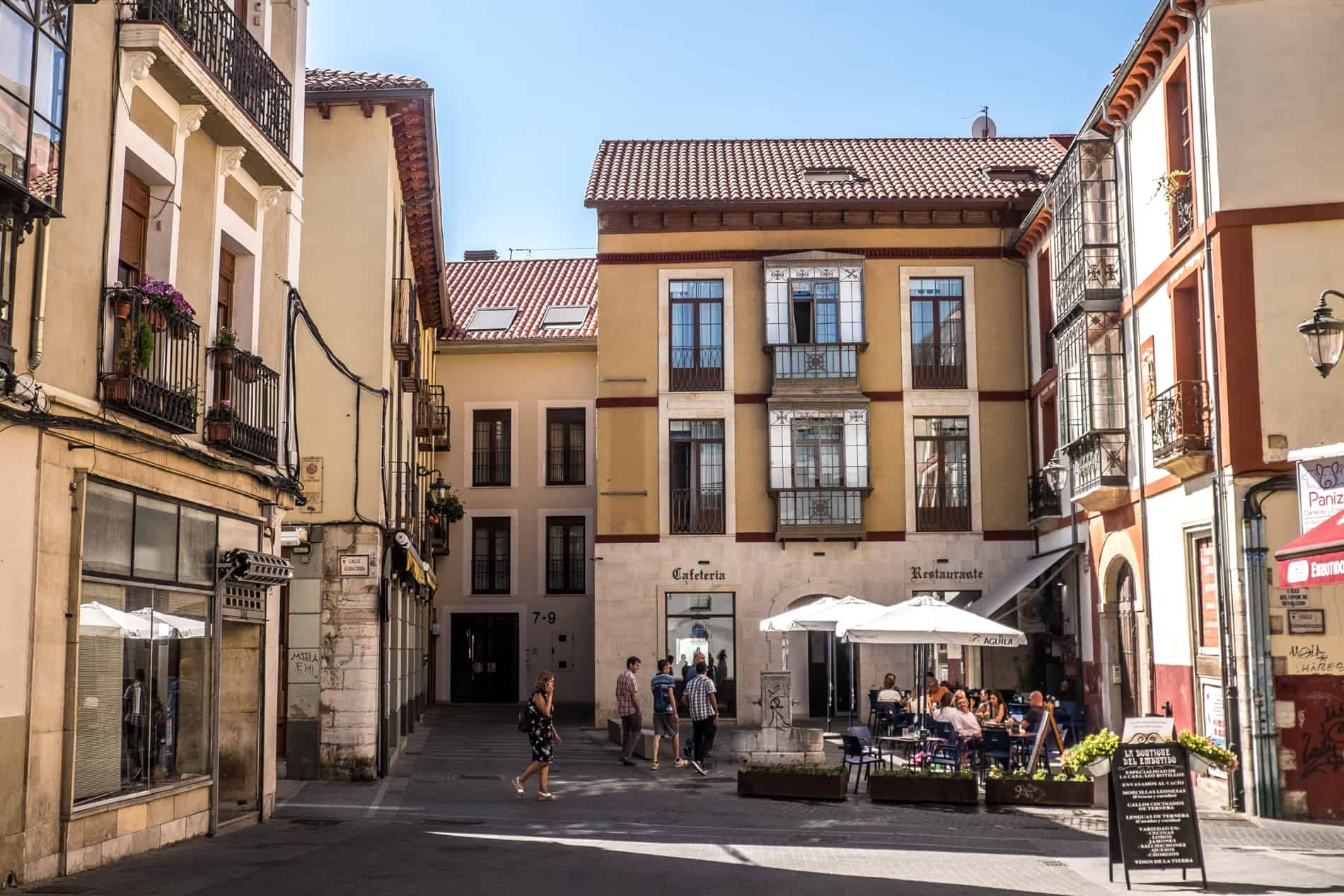
Pretty squares and hidden corners in León’s historic neighbourhood.
I wandered through Plaza de San Martín (San Martin Square) in the morning as the bars and restaurants were receiving their deliveries. Still, an excellent time to see the historical structure of the 16th-century Renaissance Casa de las Carnicerías – the former ‘Butcher’s House’ is now an exhibition space. At night this colourful and cosy space is considered one of the central points if you are looking for the biggest and most social soirees in the Barrio.
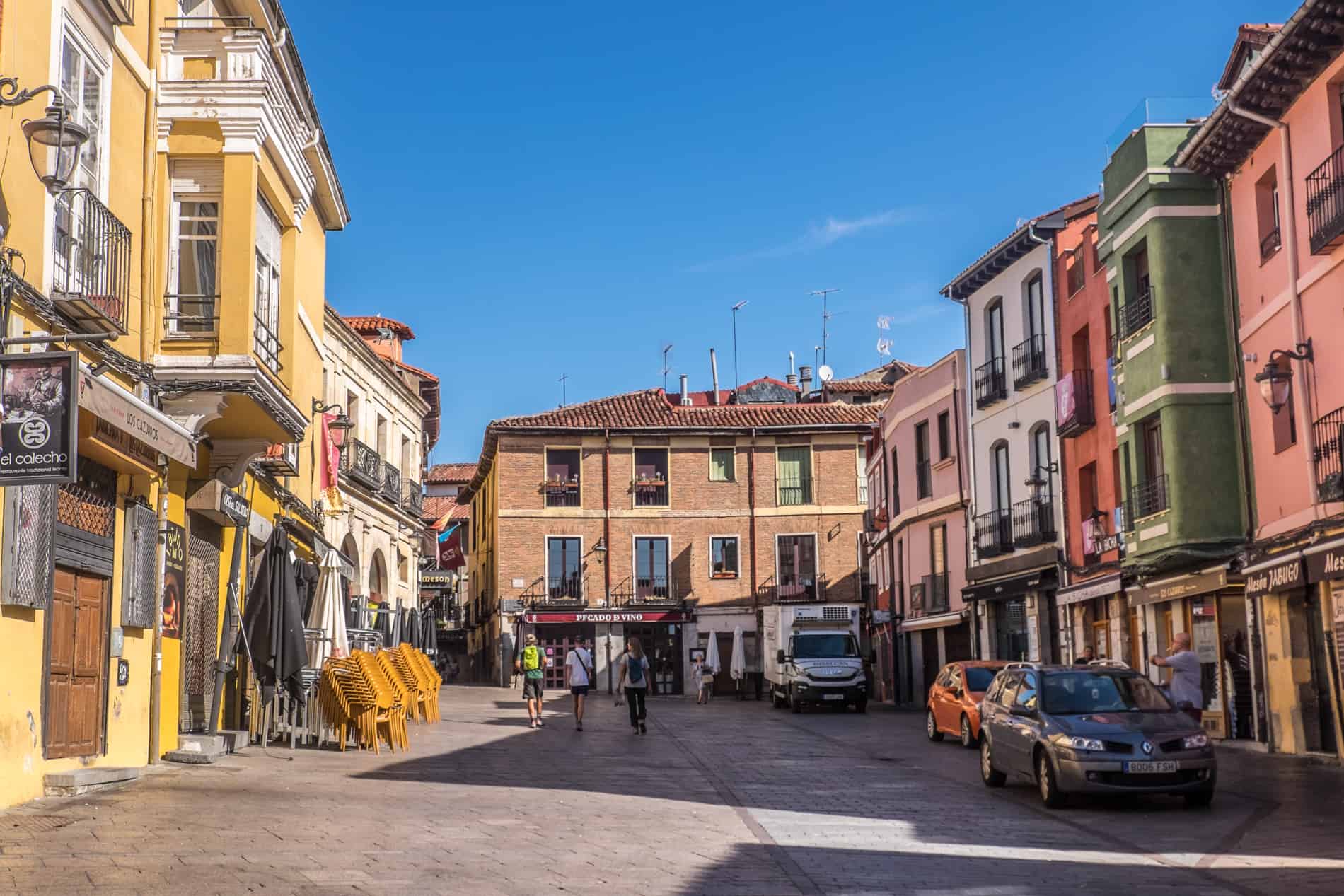
Plaza de San Martín – the place to be at night.
One minute walk to the east of San Martin brings you to the magnificent Plaza Mayor – built upon the original site of the city’s biggest medieval marketplaces. Ochre and orange arcade buildings with stone columns line the square around the twin-tower spires of the 17th-century baroque old town hall . Plaza Mayor keeps to its vendor traditions every Wednesday and Saturday, where local producers come to sell everything from fresh fruit to fish – a fixture since 1660.
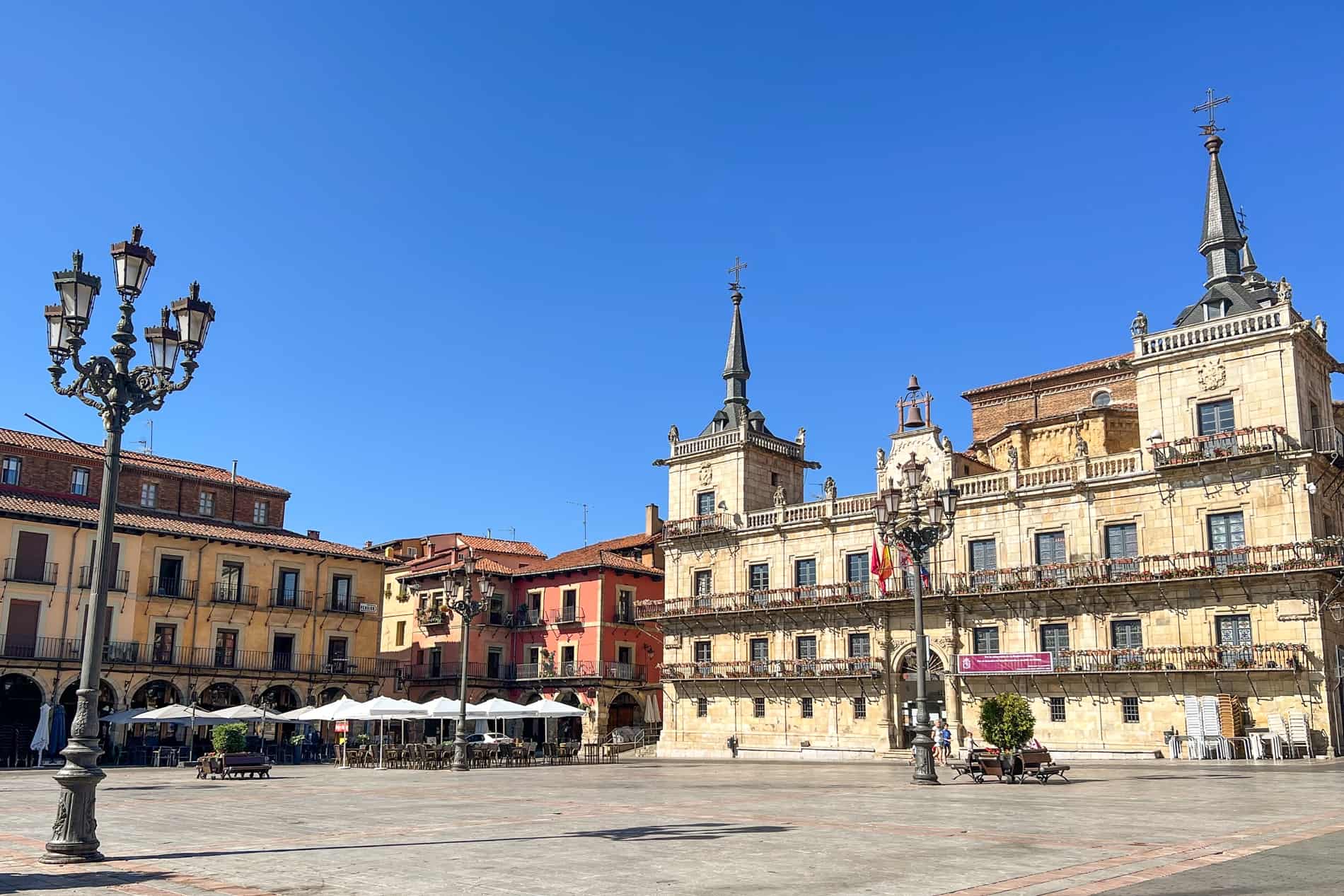
Medieval vibes in magnificent Plaza Mayor.
A step-back-in-time feel envelops you when you enter Plaza Del Grano. Medieval and traditional, it’s a window into bygone León preserved in this ancient grain market turned peaceful cobblestoned square overlooked by Iglesia de Santa María del Camino o del Mercado – a Romanesque church continuously reconstructed since the 11th century. I sat here by the Fuente del Grano (fountain) opposite the church, watching as those on the Camino de Santiago pilgrimage passed through the square, feeling that my time to walk it myself was drawing near.
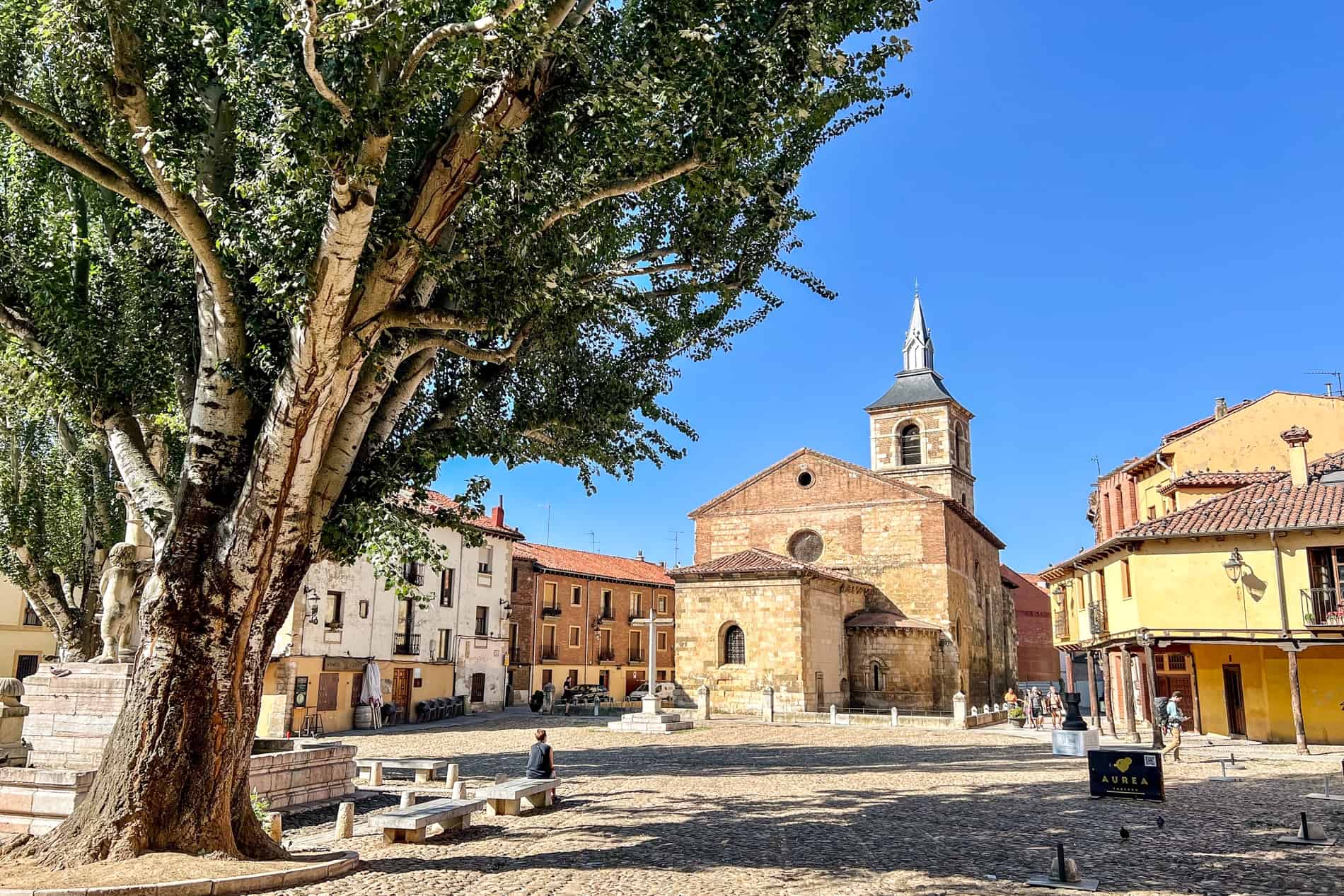
The cobblestone charm of Plaza Del Grano.
As the city expanded outside the Roman boundaries, a suburb to the southwest of the wall parameters emerged called Burgo Nuevo, close to Plaza del Grano.
By the beginning of the 14th century, a fortified wall known as the ‘Medieval Fence’ curved around the Burgo Nuevo. I walked along the Calle de las Cercas – a path on cobblestones between the walls. The main gate, the Puerta Moneda (Money Gate), no longer stands, but people would pass through it on the Camino de Santiago path and exchange currency.
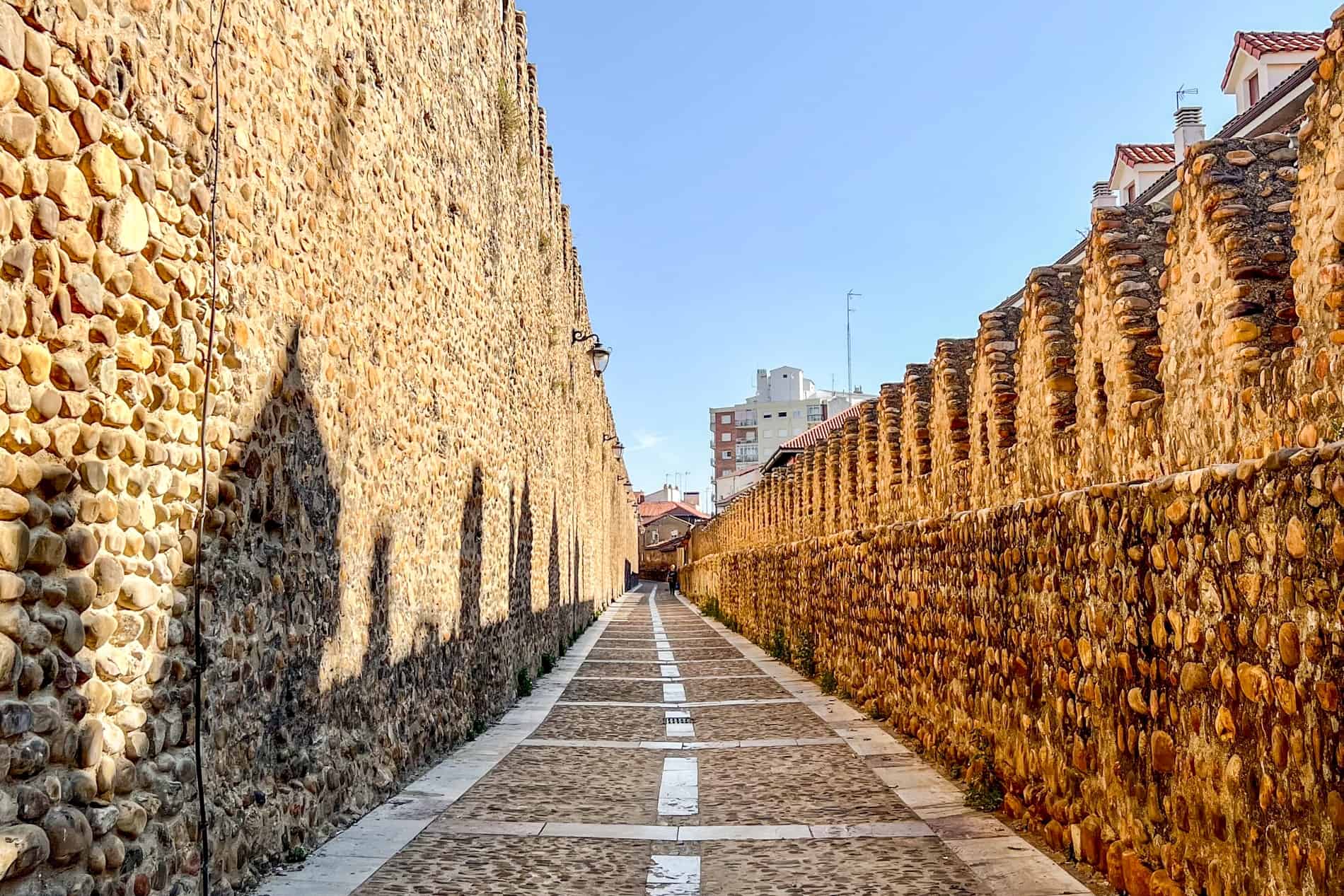
Calle de las Cercas – the path of the Medieval Fence in León.
In Barrio Romántico – The Heritage Quarter
You can find three of León’s four significant monuments in this area, north of Calle Ancha and stretching to the fringes of the old Roman walls.
Casa Botines is one of León’s great artistic monuments – a modernist stone building designed by Gaudi. In contrast to his eccentric and colourful style, the design resulted from a specific request based purely on functionality: for a building that would be both the home of two cloth merchants alongside their textile shop on the ground floor. Its castle-inspired construction aimed to withstand León’s cold winters.
The floors host a museum dedicated to Gaudi since Casa Botines is one of only three of his works outside of Catalonia (The Bishop’s Palace in nearby Astorga is another). You’ll also discover what was hidden within the limestone sculpture of Saint George that adorns the entrance and view Spanish art collections, including works of Goya and Dali.
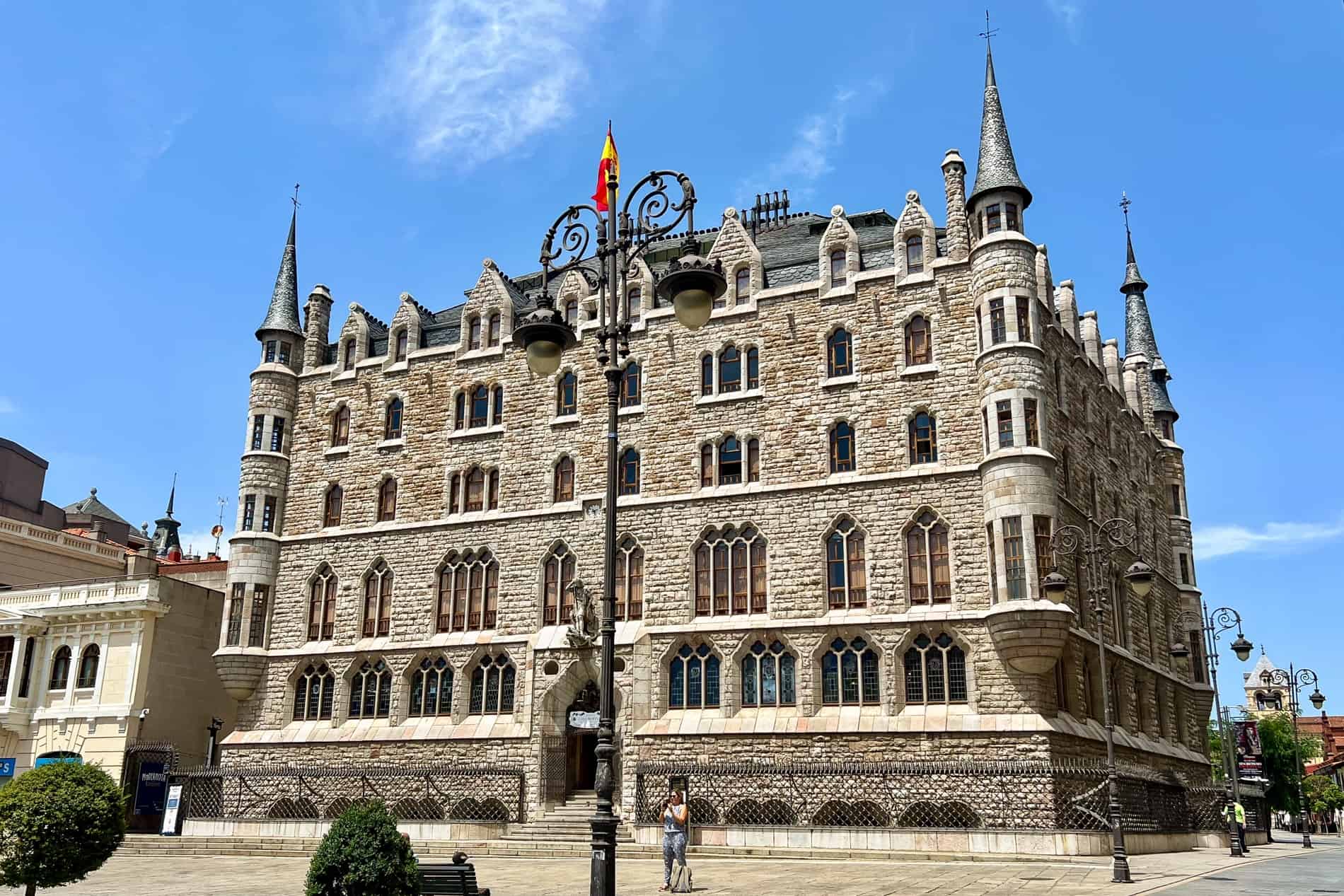
Gaudi’s castle inspired Casa Botines – one of his three works outside Catalonia.
Book: The León Architectural Walking Tour includes a guided visit to the Casa Botines Museum.
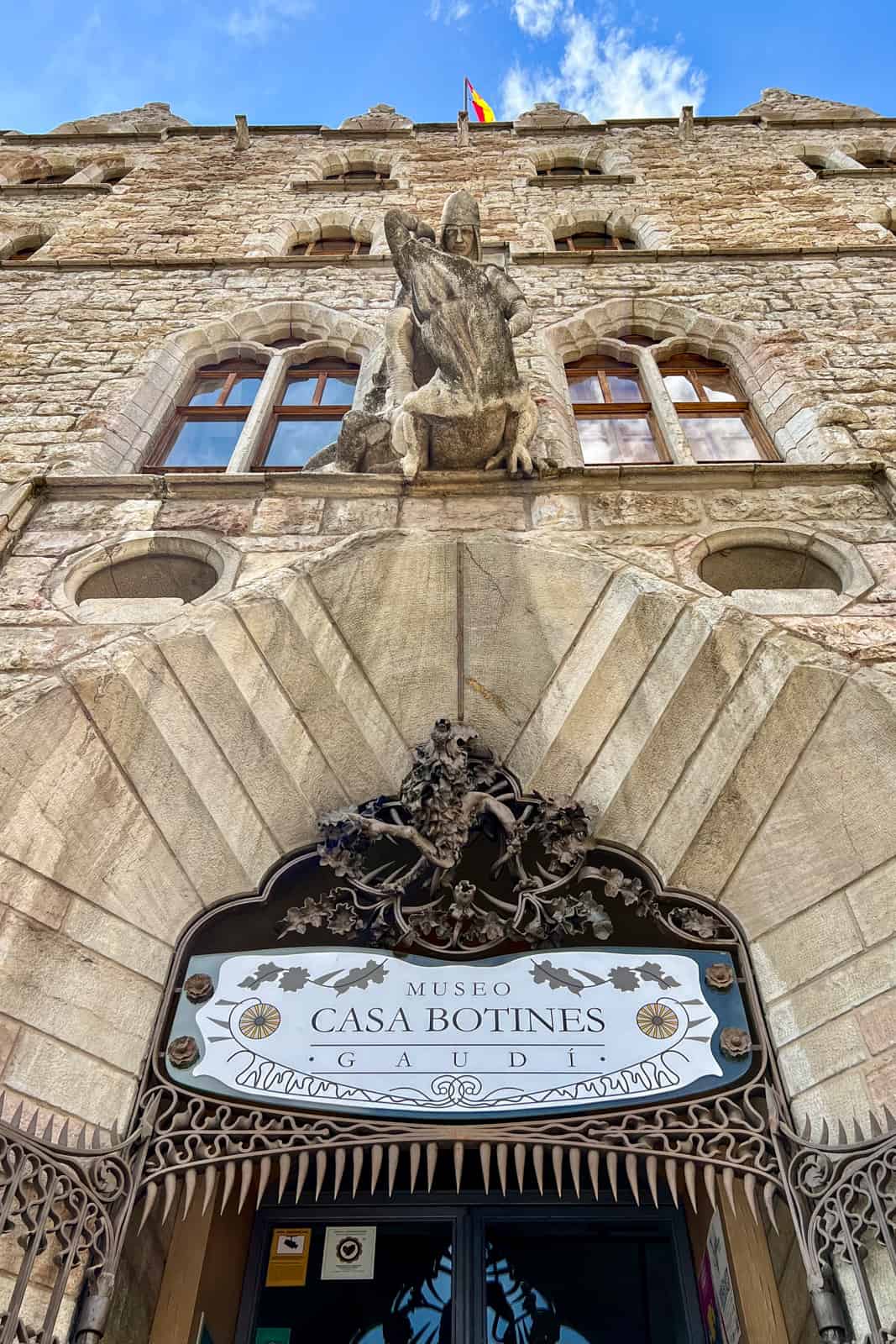
The entrance to the Casa Botines Gaudi Museum.
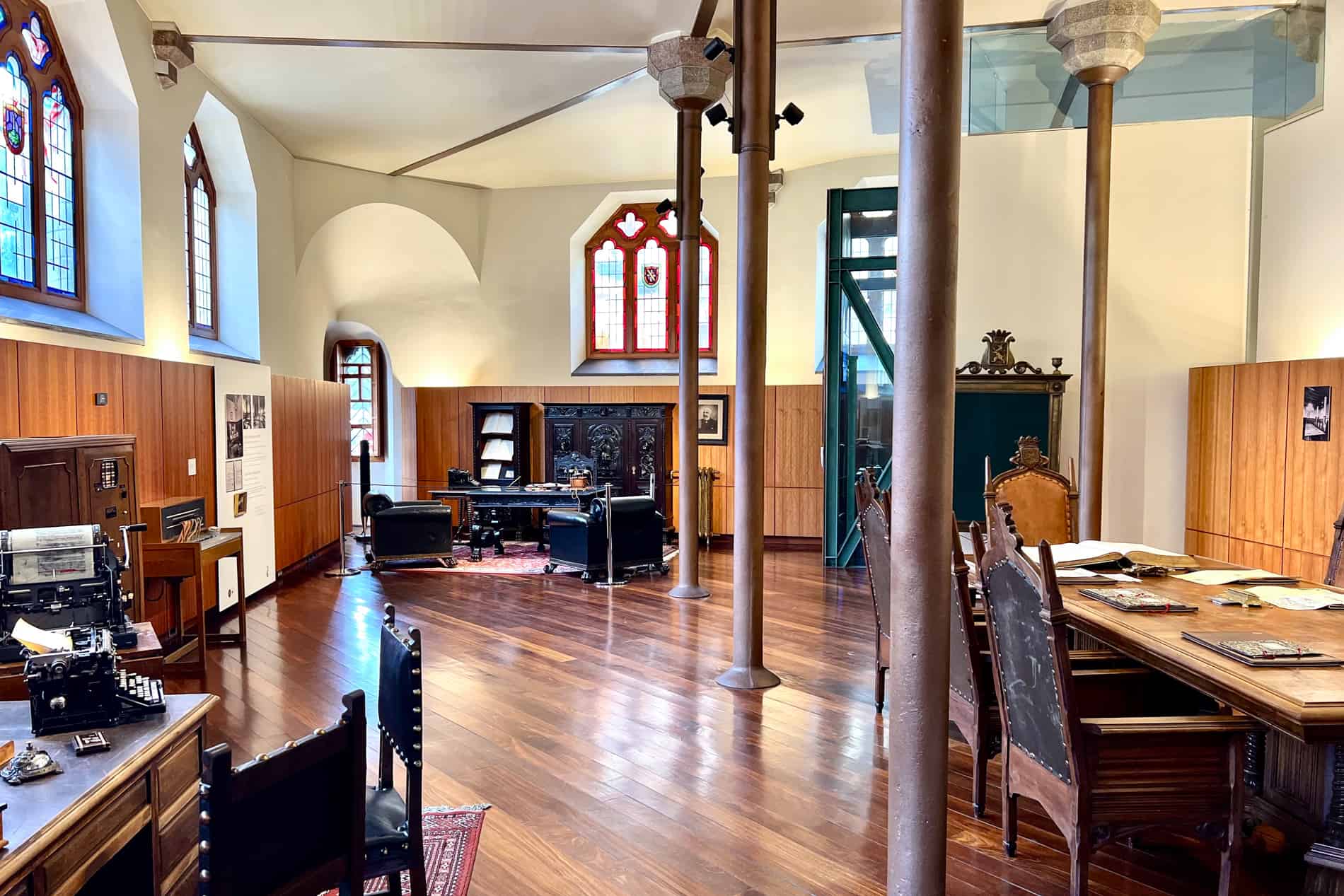
The ground floor of Casa Botines is where the textile shop was located.
You’ll notice a grand Renaissance facade next to Casa Botines, wedged between a section of the Roman wall knocked down to accommodate it. This building is Palacio de Los Guzmanes, constructed in the 16th century as the home for the wealthy Guzman Family. Today it is the seat of the León Provincial Government.
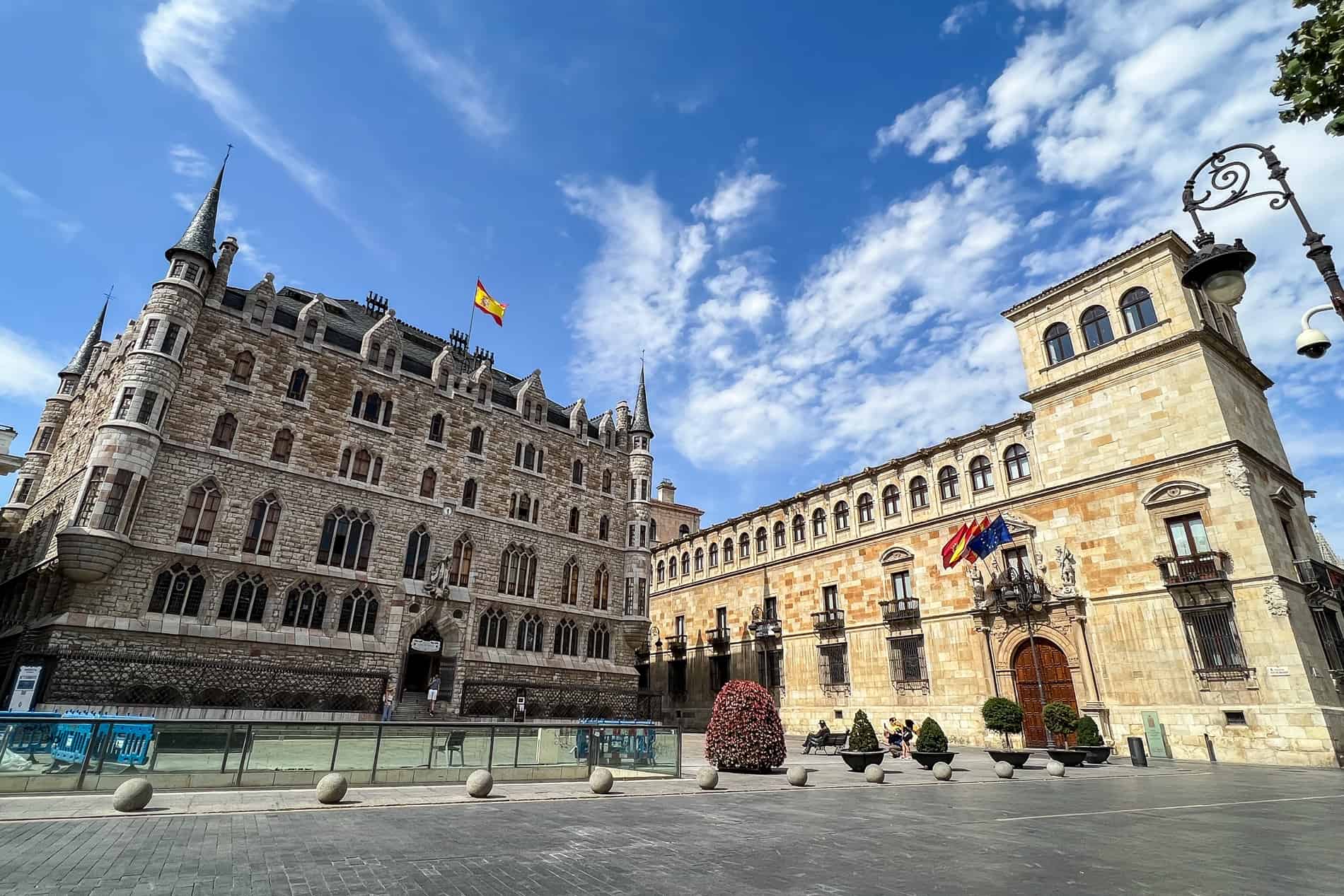
The 16th century Palacio de Los Guzmanes next to Casa Botines.
In the corner of Barrio Húmedo and Barrio Romántico in front of Casa Botines, the cafe-filled Plaza de San Marcelo is better known for the bronze sculpture of a Lion emerging from a drain. Although León’s name originates from the Roman ‘legion’ or Legio (military), the lion is a city symbol.
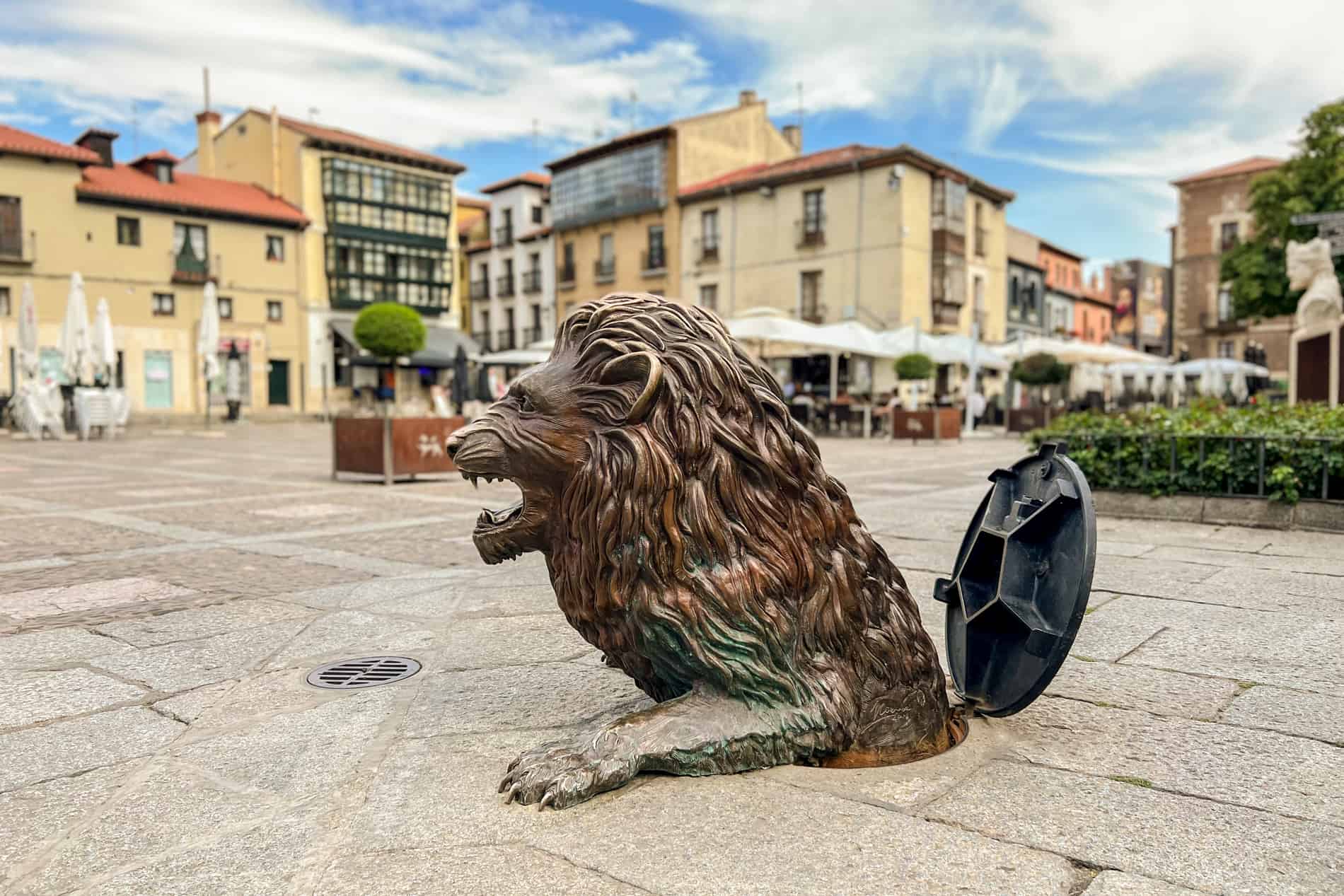
Find the bronze lion sculpture of León.
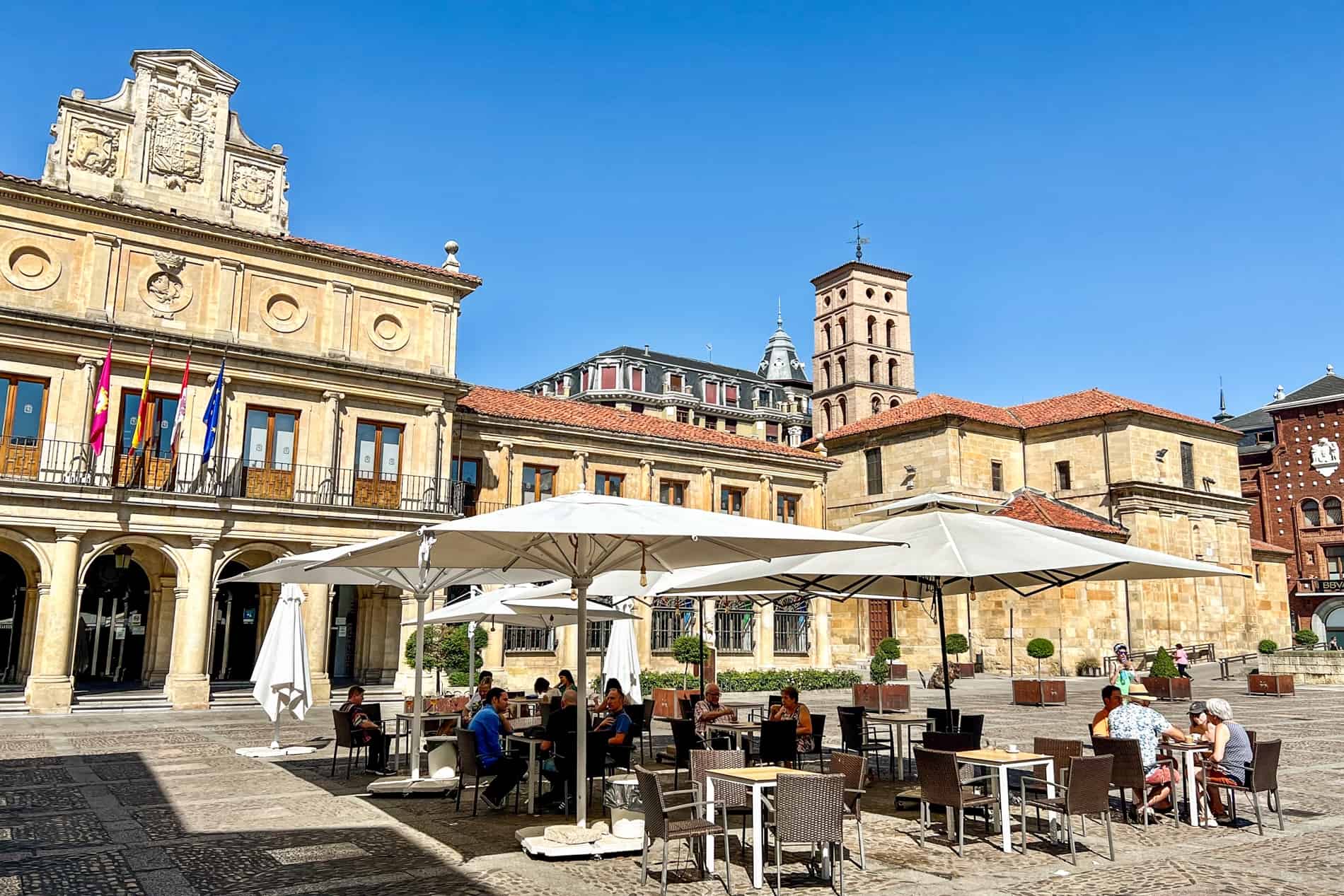
Plaza de San Marcelo.
The Gothic masterpiece that’s León’s 13th-century Cathedral was the first building in Spain to be declared a national monument in 1844. Restoration began in 1857 and lasted over 40 years – one of Spain’s most significant restoration projects alongside the Alhambra.

León Cathedral – the 13th-century Gothic masterpiece.
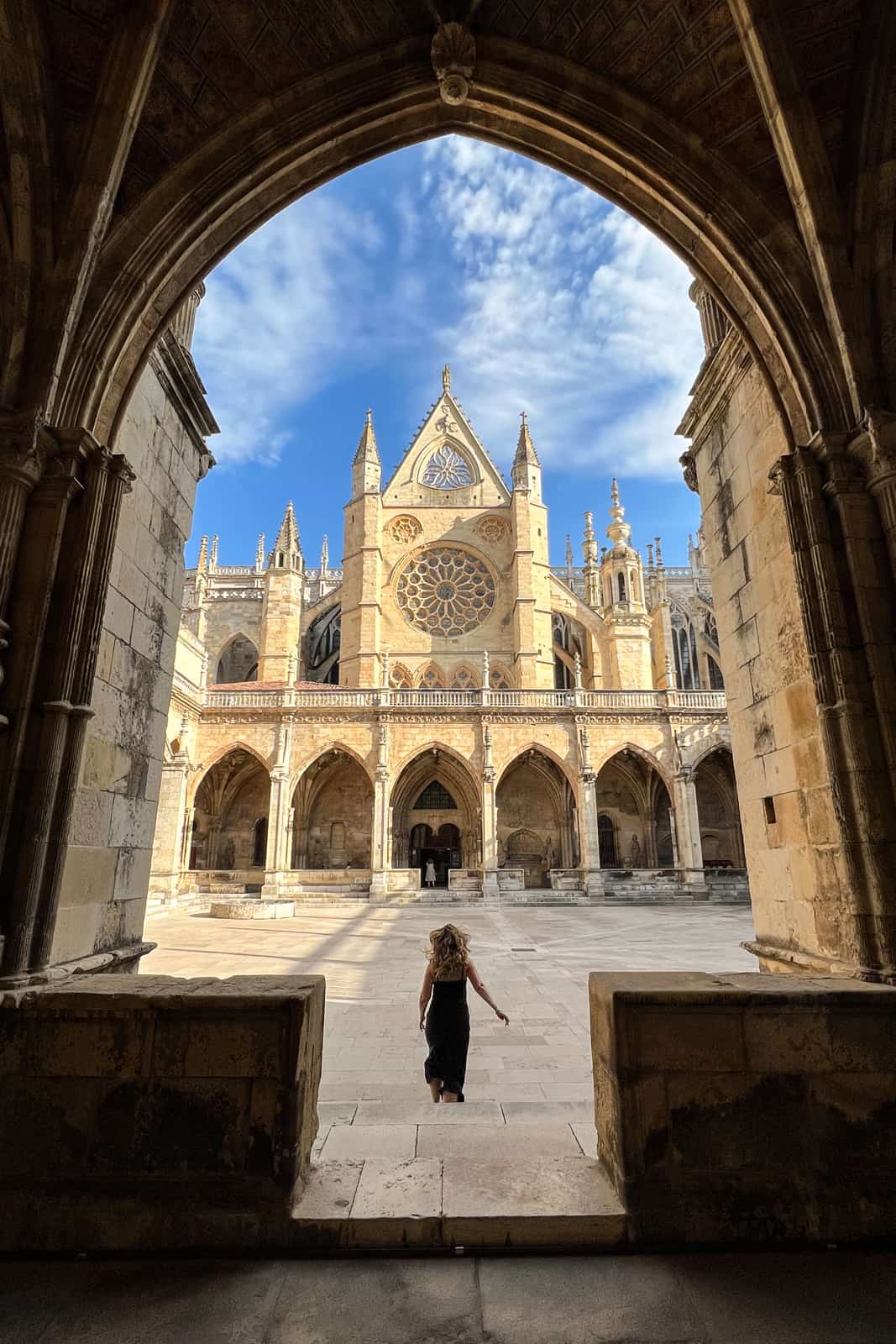
Is this the most beautiful place to visit in León?
I’m easily fatigued by too many religious monuments, but León Cathedral exudes an atmosphere of greatness that pulls you inside for the mesmerising display. Prized for having the most extensive collection of stained-glass windows in Spain and the 2nd largest in Europe, the interior of La Catedral de León dazzles with 1,800 square meters of stained glass. 80% of the chromatic panels are originals, filling the Gothic interior and altarpiece with a kaleidoscope of colour, giving it the name ‘The House of Light’.
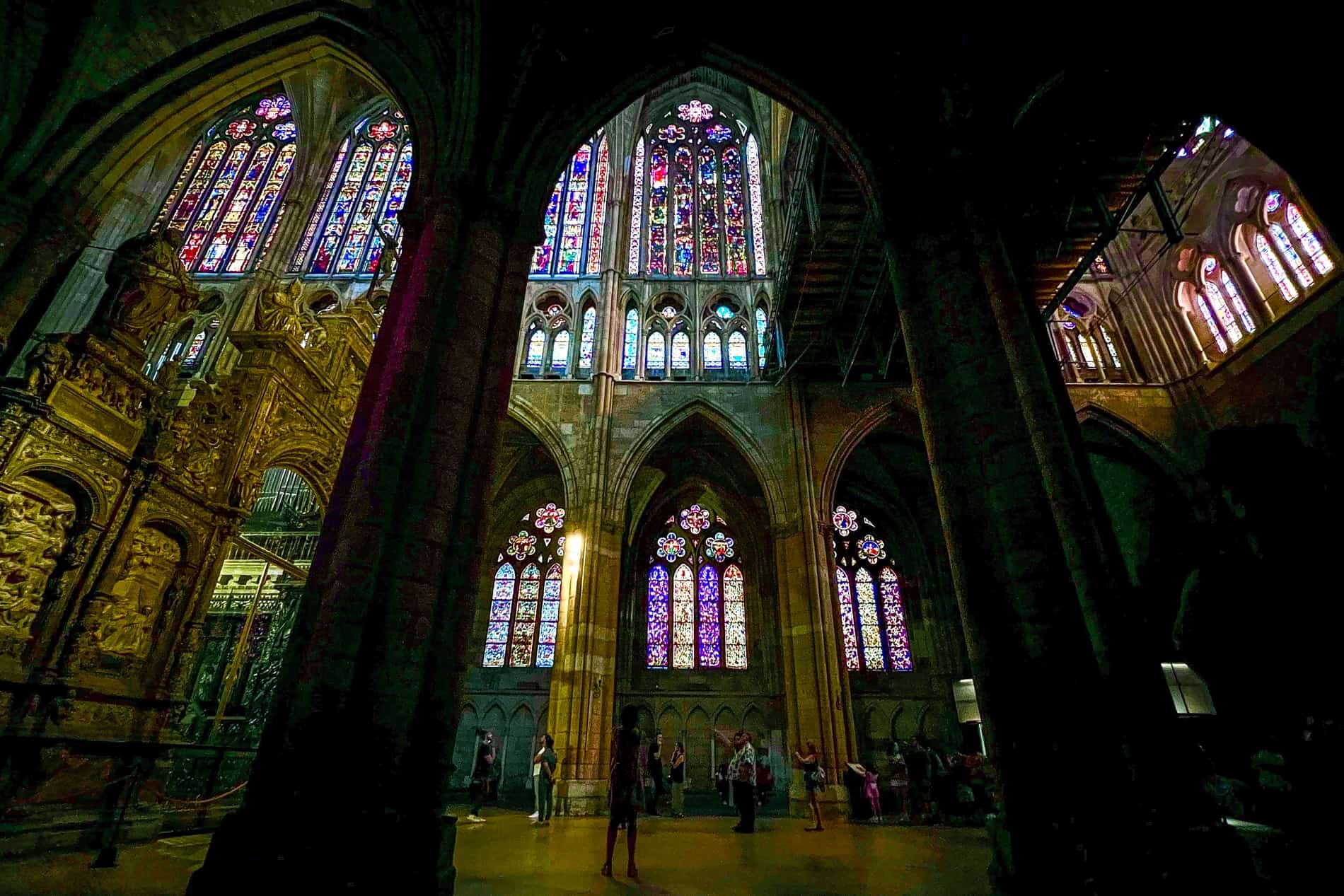
‘The House of Light’ with 1,800 square meters of stained glass.
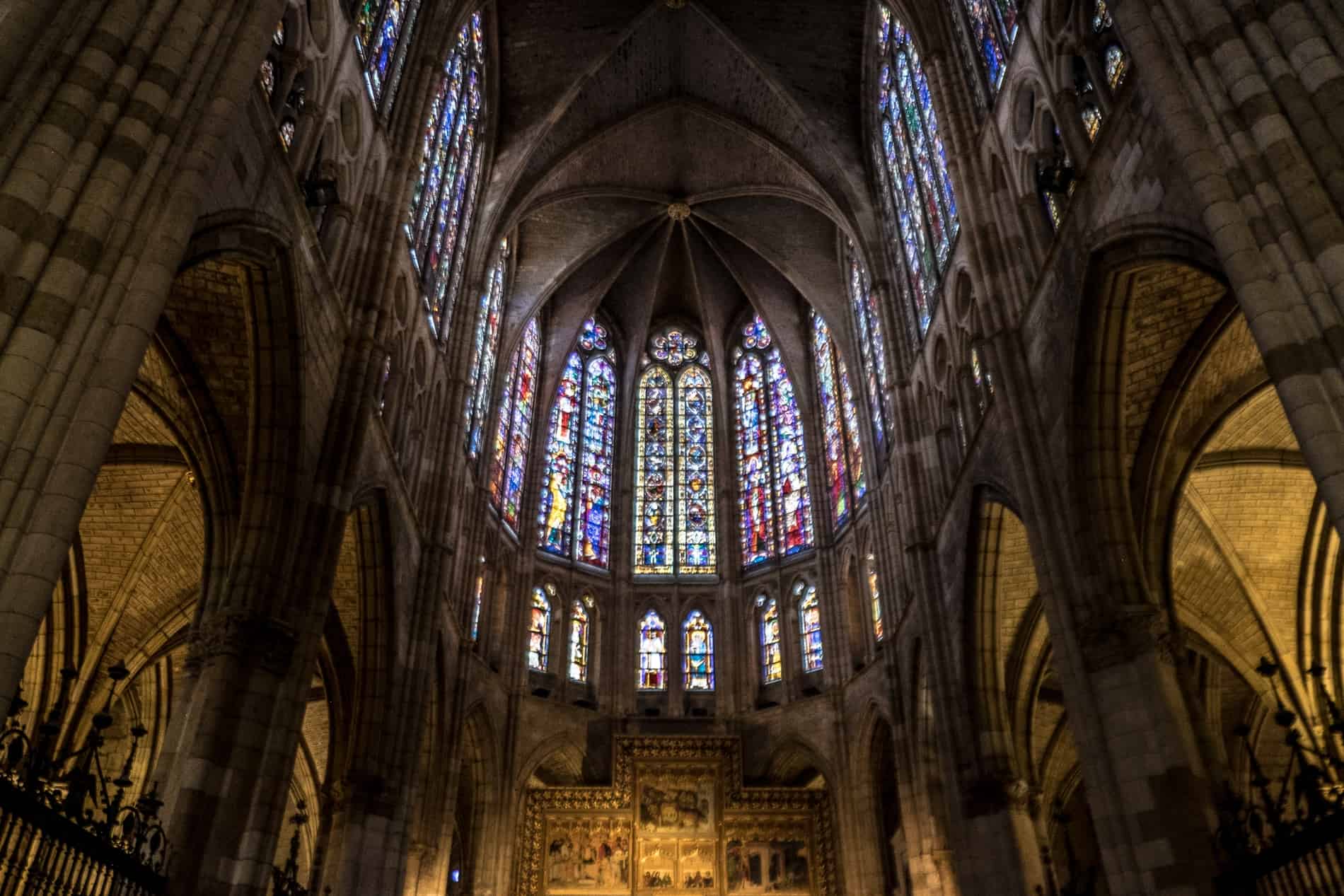
The most extensive collection of stained-glass windows in Spain.
Book: A 2.5-hour city walking tour , including a guided tour of León Cathedral.
The Basílica de San Isidoro de León, set within the remains of the royal palace, is considered one of Europe’s most important Romanesque architecture sites. Its artistic nucleus is the Royal Pantheon of the Kingdom of León, the burial chamber for 33 members of the Leonese monarchy built within the palace church. Its detailed 11th-century biblical frescos with preserved colours have granted it the name of the ‘Sistine Chapel of Romanesque Art’.
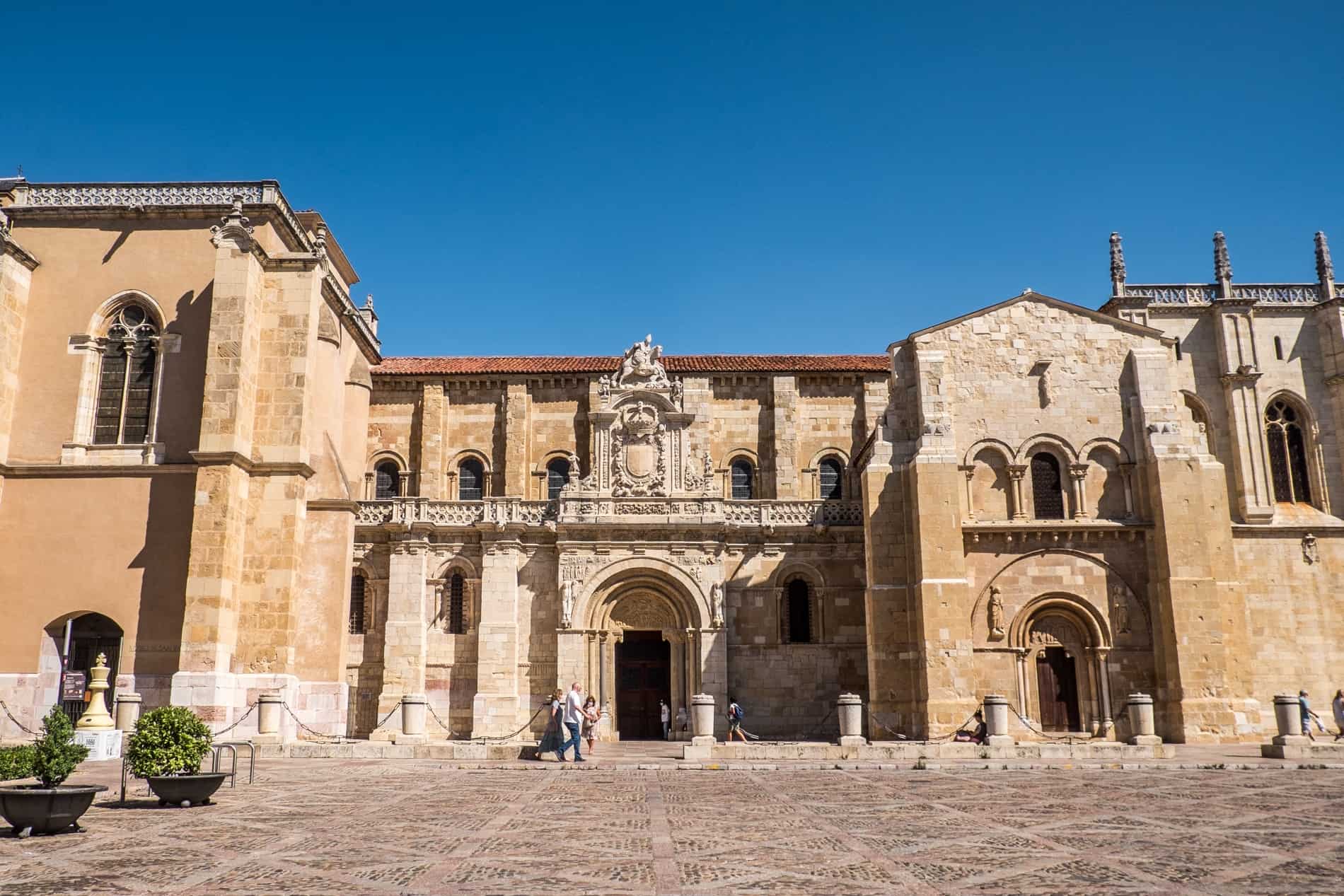
The grand Basílica de San Isidoro de León.
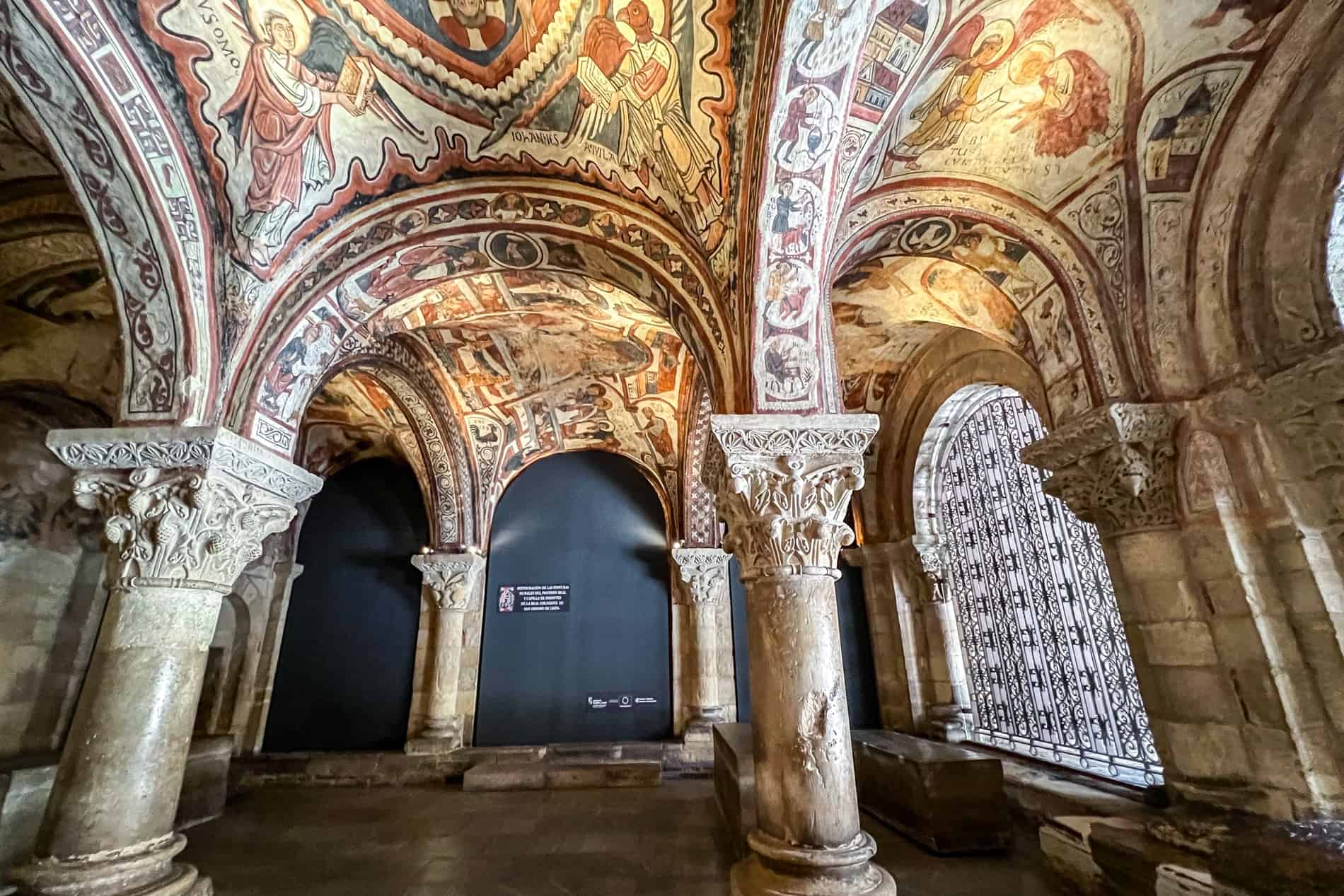
The Royal Pantheon of the Kingdom of León.
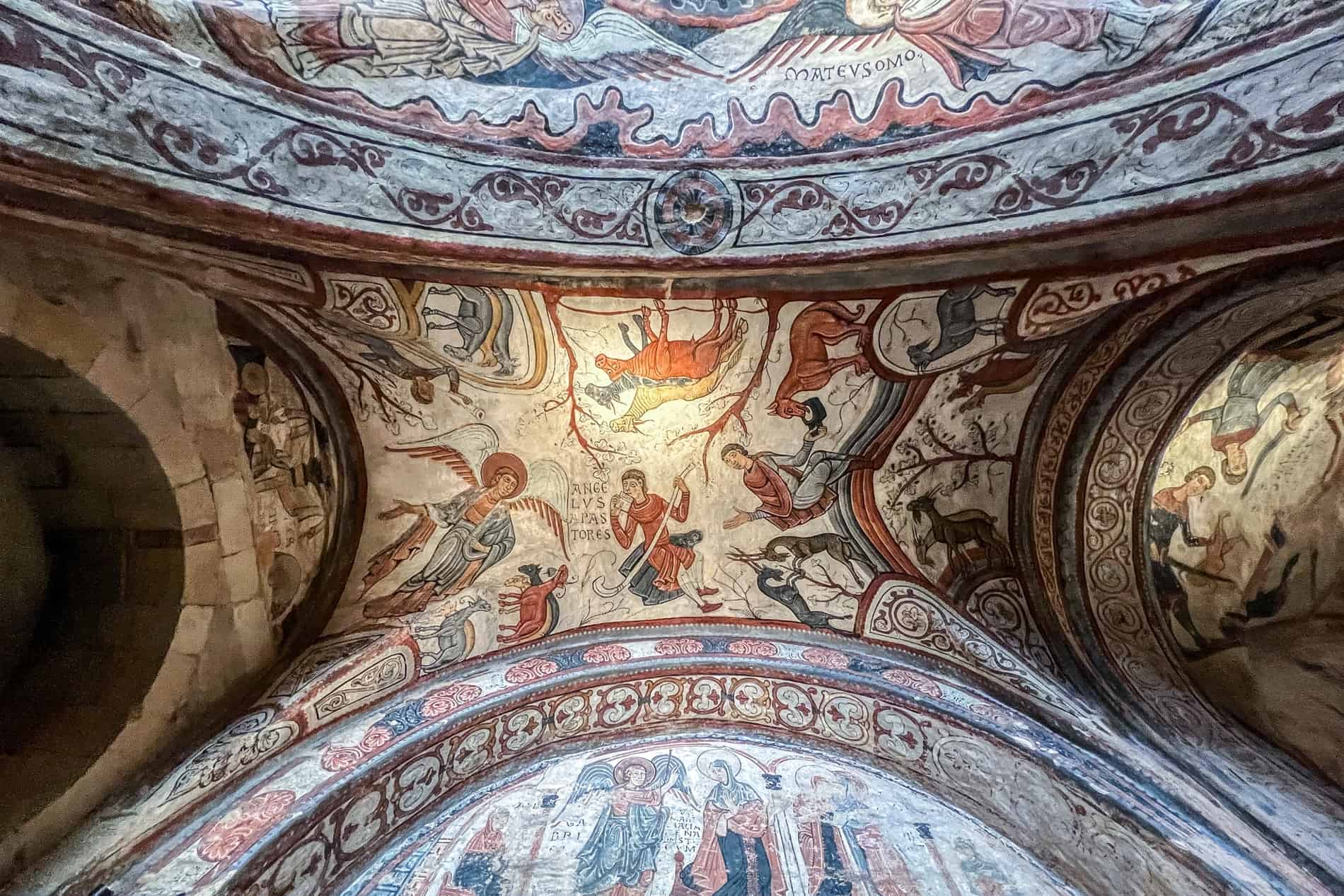
11th century frescos of the ‘Sistine Chapel of Romanesque Art’.
The first parliament of Europe met in the stunning cloister. Where the King of León, Alfonso IX, amassed an assembly of people from all classes for the first time in history, forming the oldest parliamentary manifesto – The Decreta of León of 1188. UNESCO listed the documents as a “Memory of the World” in 2013, with León granted the title of “Cradle of Parliamentarism”.
You’ll also find a time capsule library that houses over 2000 books from the 10th and 18th centuries, a gallery with Roman artefacts, and a chalice, which one legend says is the holy grail.
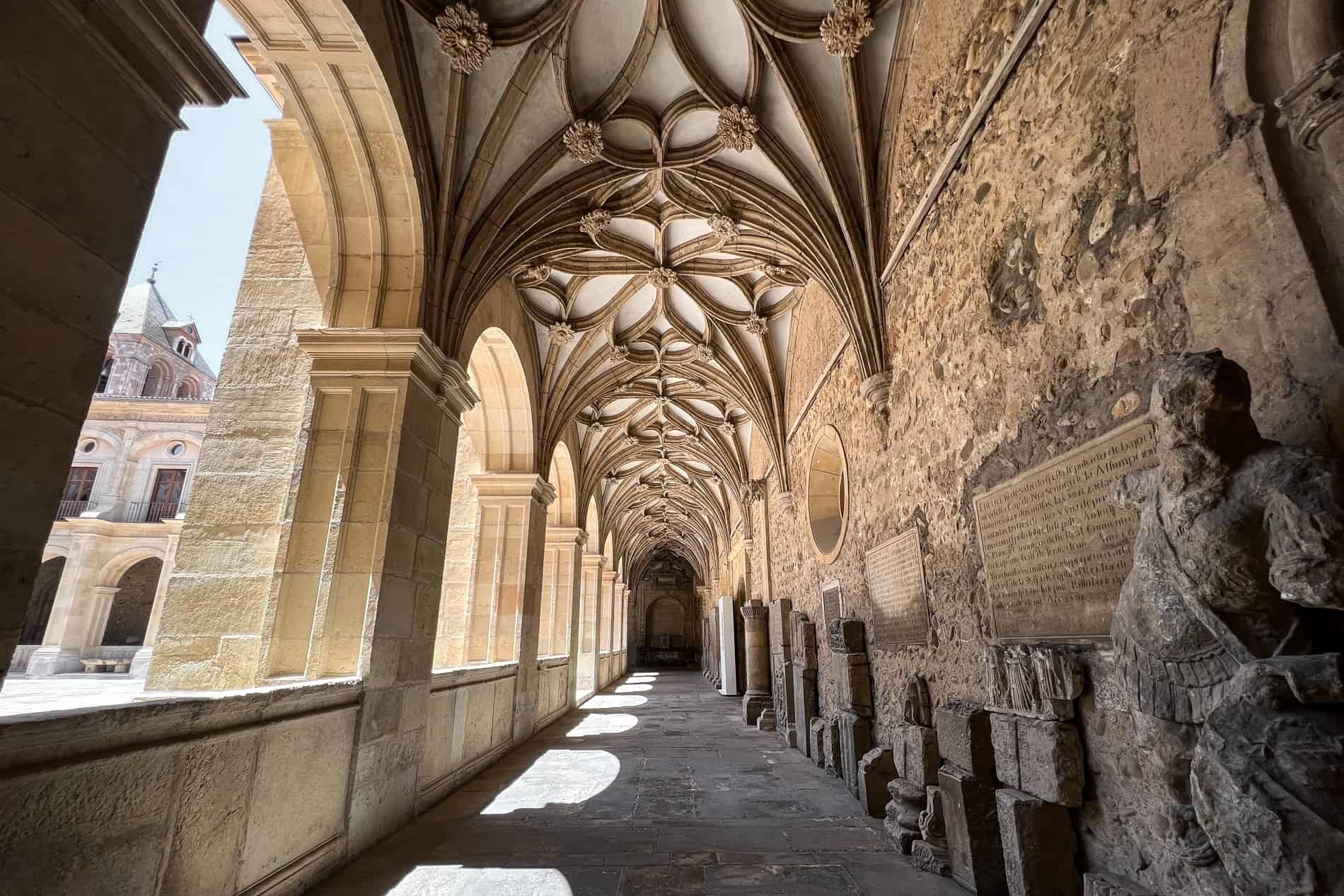
The Basílica de San Isidoro de León cloister, and the site of Europe’s first parliament.
Museo de León is the oldest and largest museum in the province, where archaeology, art, and ethnography combine in a chronological timeline of León through the ages and its rich cultural tapestry.
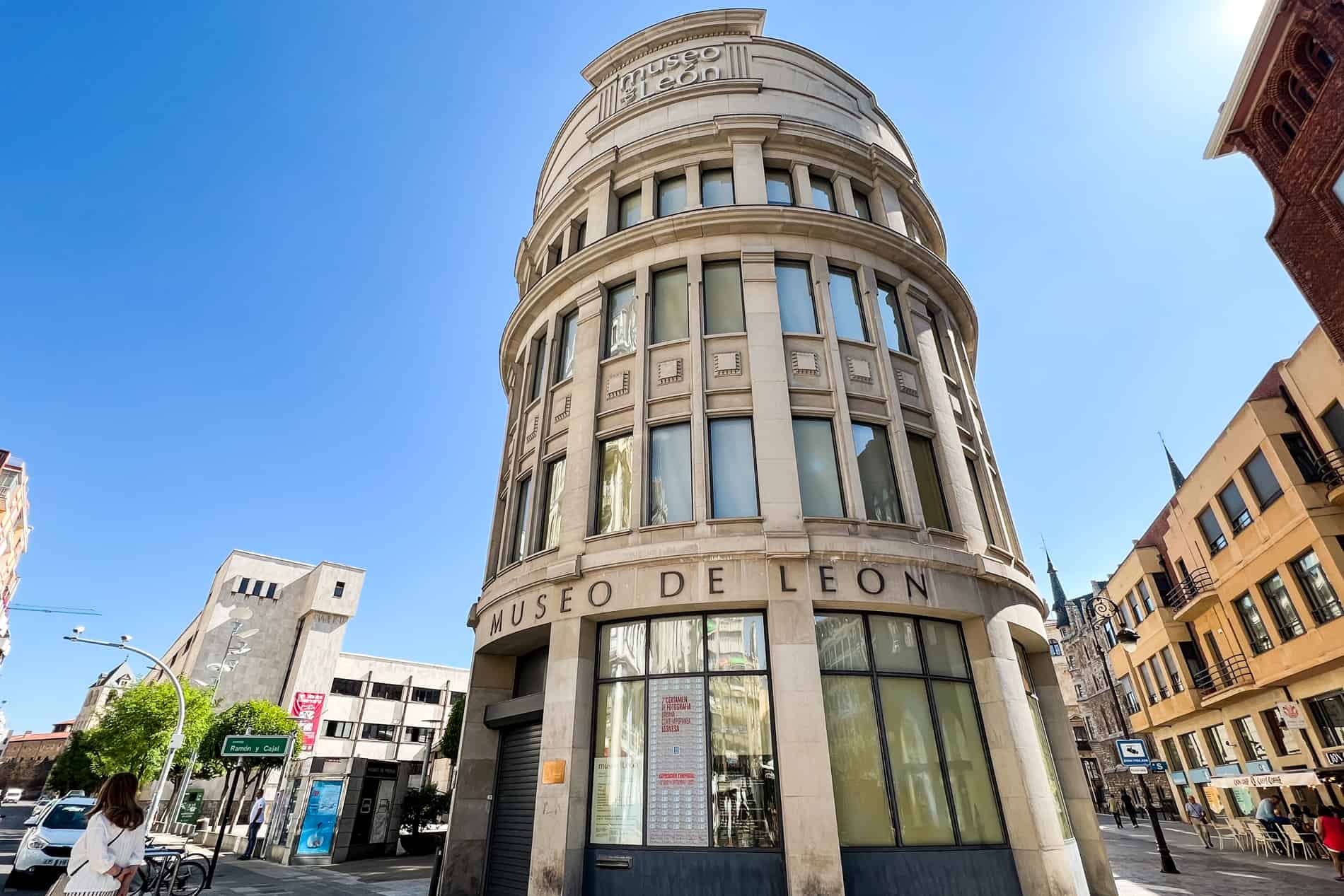
The tiny tower of Museo de León.
In the Footsteps of the Camino de Santiago
León is on one of the walking stages of The French Way of the Camino de Santiago (The Way of St. James) – more than half of the 780km UNESCO World Heritage and European Cultural Itinerary listed pilgrimage makes its passage through the region Castilla y León.
You can spot bronze Camino scallop shells on the pavement, leading pilgrims to the Cathedral, and the yellow painted arrows showing the direction of the walking route – it’s 309km to Santiago from here. Aside from the Plaza Del Grano in Bairro Húmedo, one monument on the fringes of the modern area of León is steeped in Camino heritage.
The stately 16th-century Spanish Renaissance monument of the Hostel de San Marcos Parador de León was once a pilgrim shelter on the route of the Santiago de Compostela, built upon the original site of the 12th-century pilgrims’ hospital that fell into disrepair. The plush 426-room complex maintains key historic features such as the detailed carved Plateresque (silversmith style) façade and impressive cloister inside. It’s now owned by Parador, the Spanish state-owned luxury hotel group.
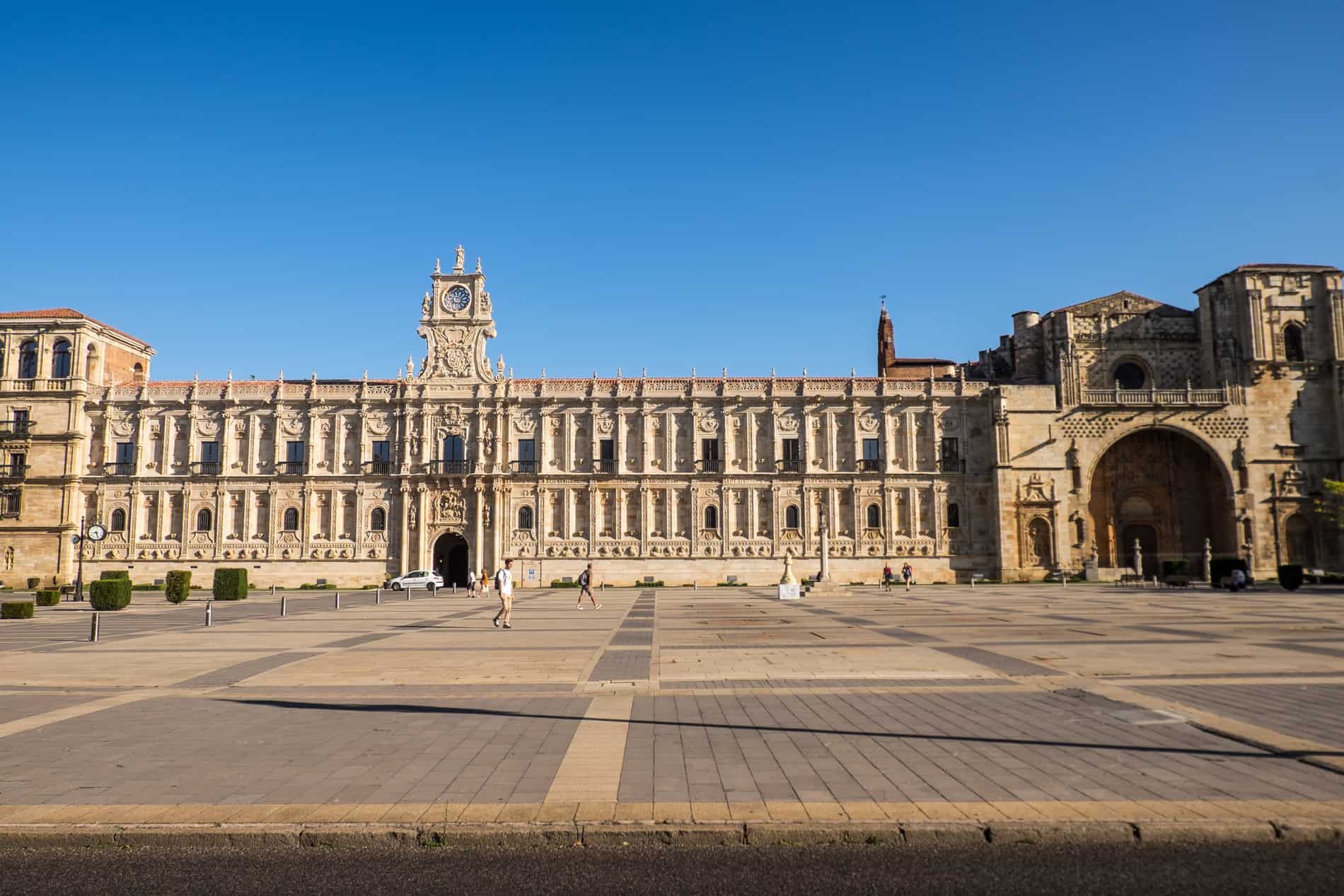
The Plateresque carved facade of the Spanish Renaissance monument, Hostel de San Marcos Parador de León.
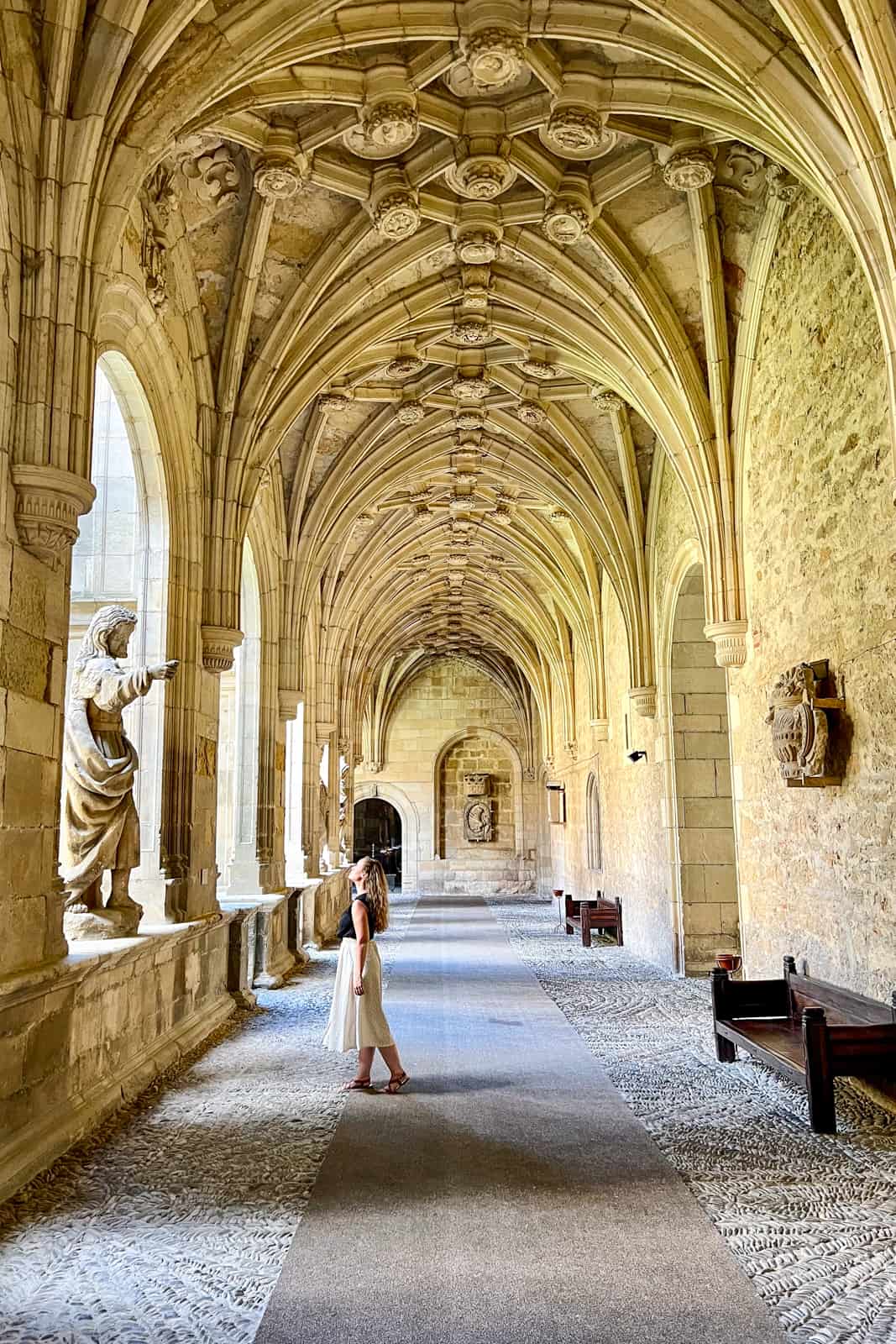
The ethereal cloister of Hostel de San Marcos.
Whether a pilgrim or a visitor to the city, the plaza outside the Hostel de San Marcos is a symbolic point of the Camino route, marked by the Monument el Peregrino – showing a pilgrim resting against a large stone crucifix.
See León’s Roman History
The Legio VII Gemina encampment and later Roman settlements in León were well fortified, which is why you can still see the remains of the Roman walls and entrances that formed a rectangle around the city.
Some parts of the wall were incorporated into other buildings or partially demolished when prized sites like the Cathedral were constructed. Remains of the roman encampment, unearthed during archaeological excavations in 1986 during the Cathedral restoration, are on show in the crypt beside it.
Close to the Basílica de San Isidora, the Arco de la Cárcel is the site of the original gate on the northern wall, although rebuilt over the centuries. Remains of the 8-metre-high walls are best seen on Calle Carreras, and the semi-circle bucket towers like those on Calle Ramón y Cajal. Parts of the wall can also be seen within the Barrio Húmedo on streets such as Calle Serradores.
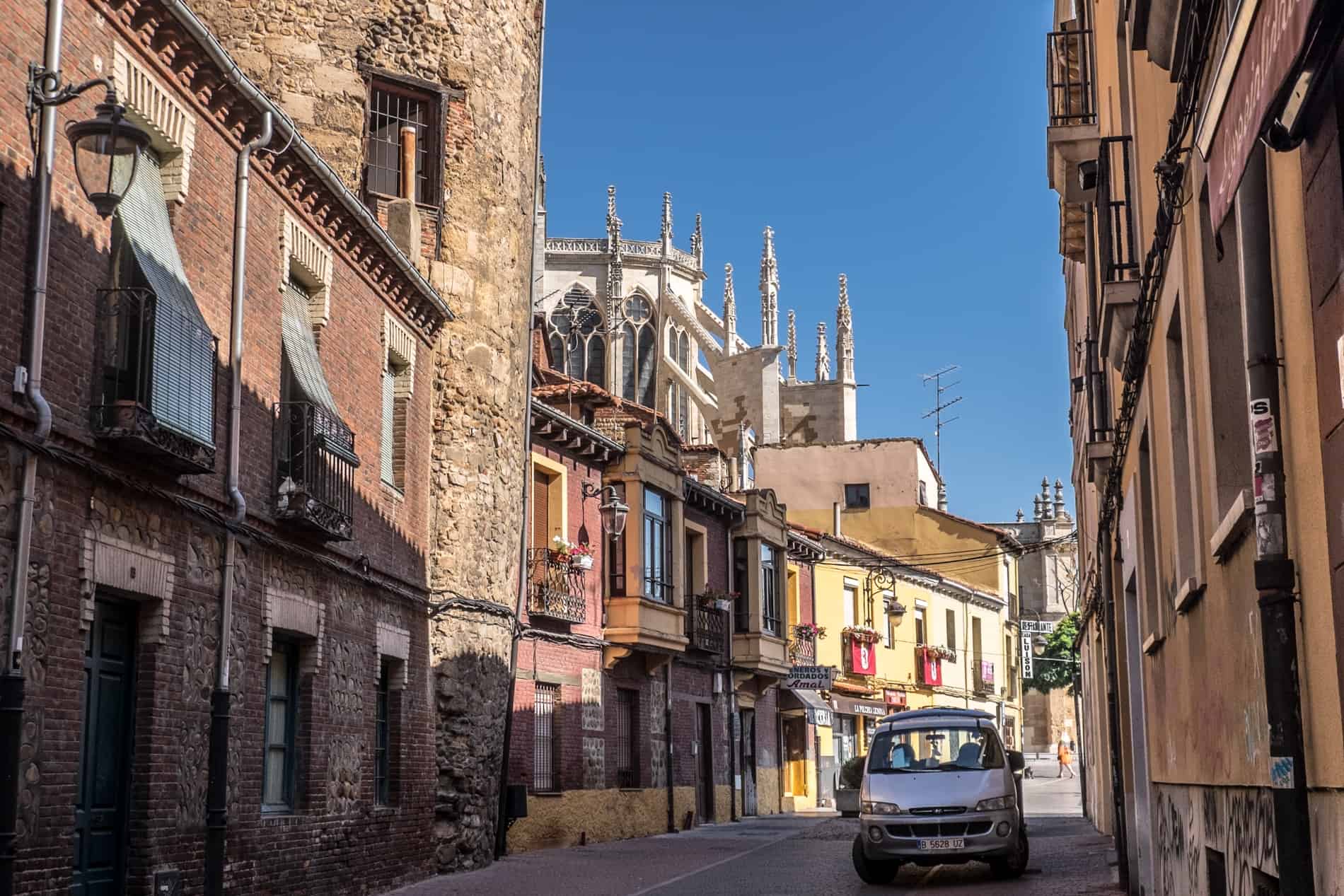
The mesh of Roman walls and later structures on Calle Serradores.
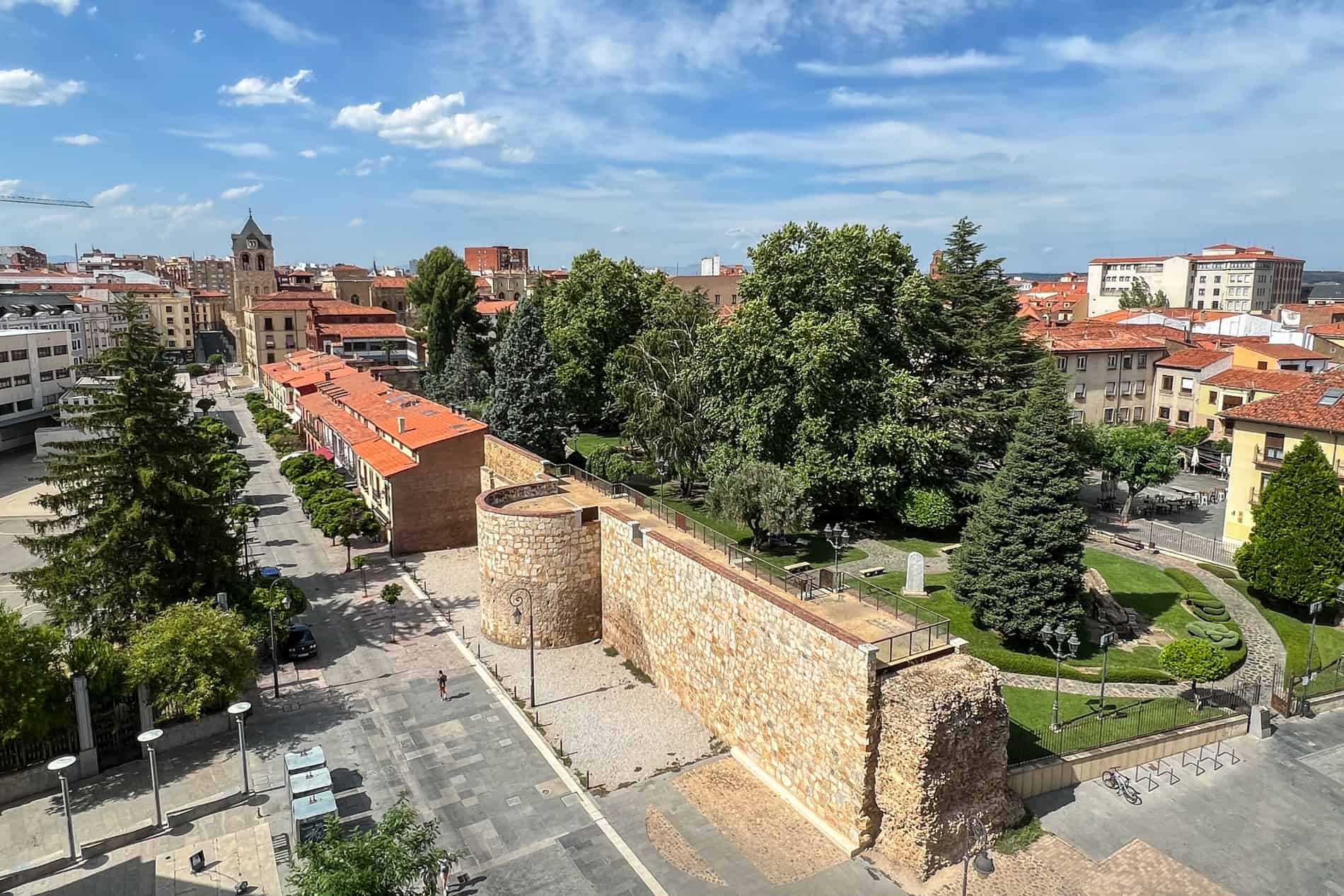
View from Casa Botines looking over a segment of León’s Roman walls.
Nerd out on the Satellite view on Google maps and plan your exploration route and spot the bronze footprints of a Roman soldier in the streets of León along the way.
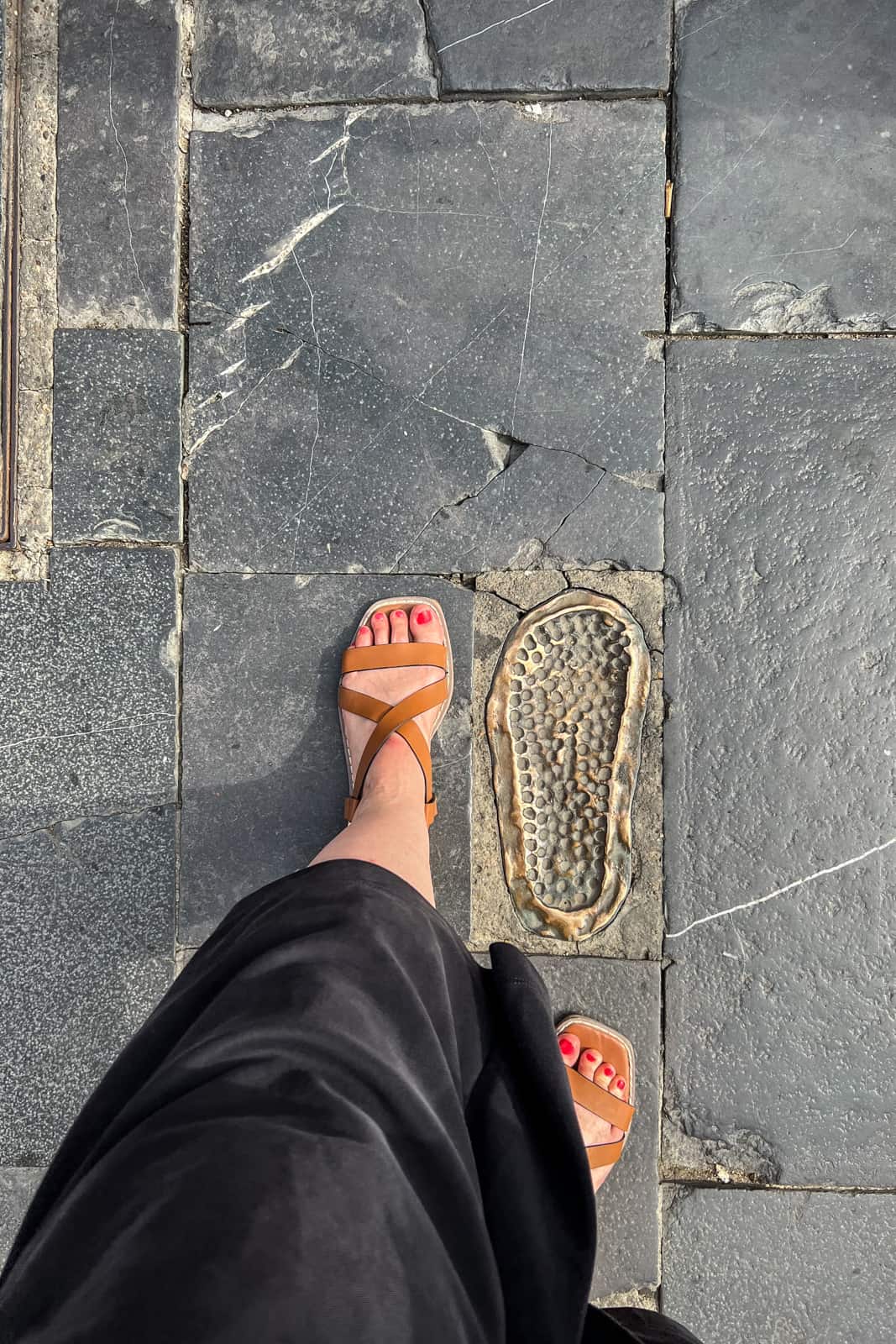
Bronze footprints of a Roman soldier – a reminder of the origins of León and the Legio VII Gemina encampment.
The Silver Route (Via de la Plata) follows the route of the original Roman road from northern to southern Spain. Today it connects coastal Gijon in Asturias to Seville in Andalusia. 383km of the road passes through the Castille y León provinces of Salamanca, Zamora, and León.
León may be filled with centuries-old architectural pearls, but modernity has found its space.
Street Art in León
León is by no means a street art city. Still, murals are popping up in random spots, whether on shop shutters, fencing around construction sites, or the bare brick walls on side streets on the edges of Barrio Húmedo.
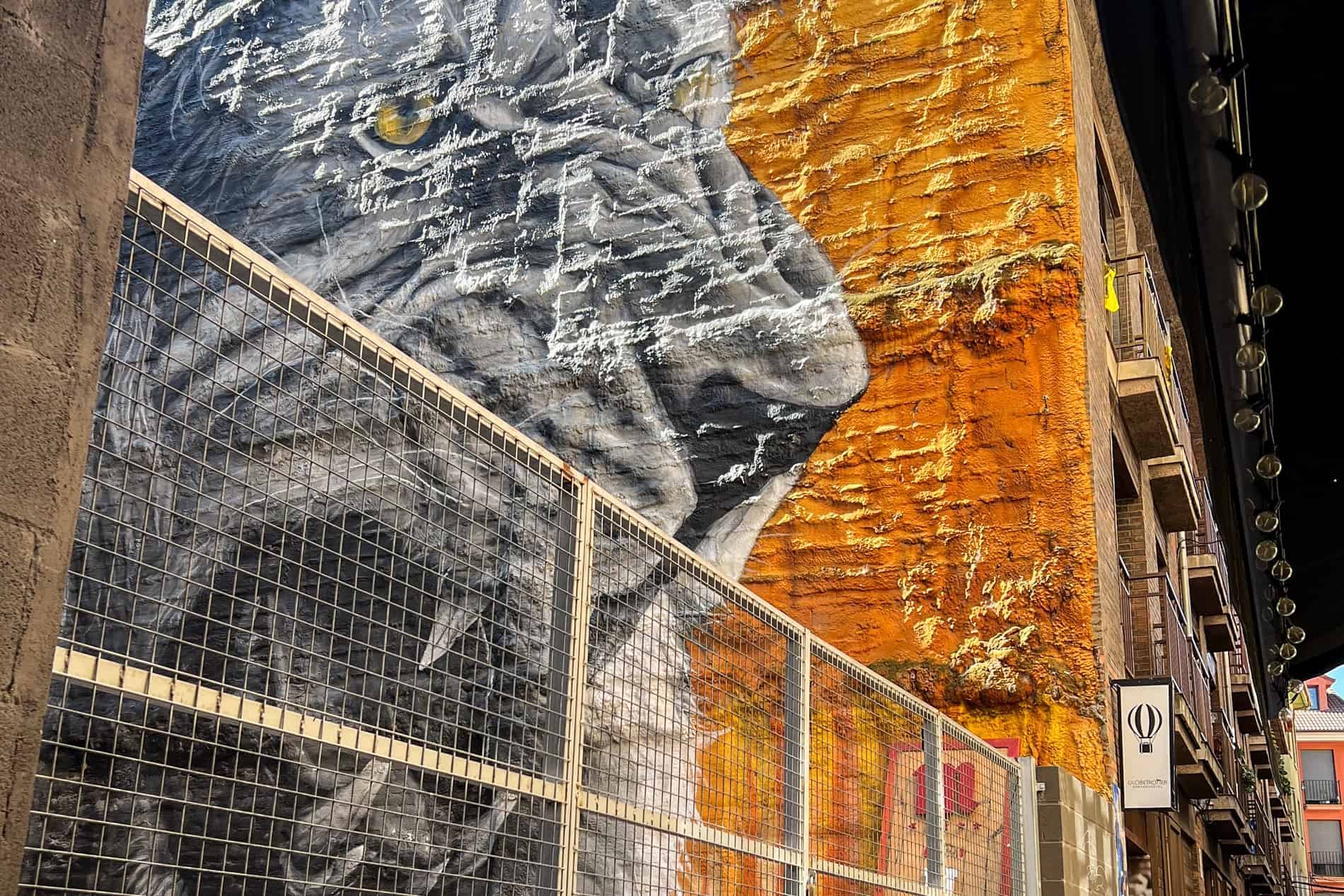
León’s lion mural in a side street off Calle Ancha.
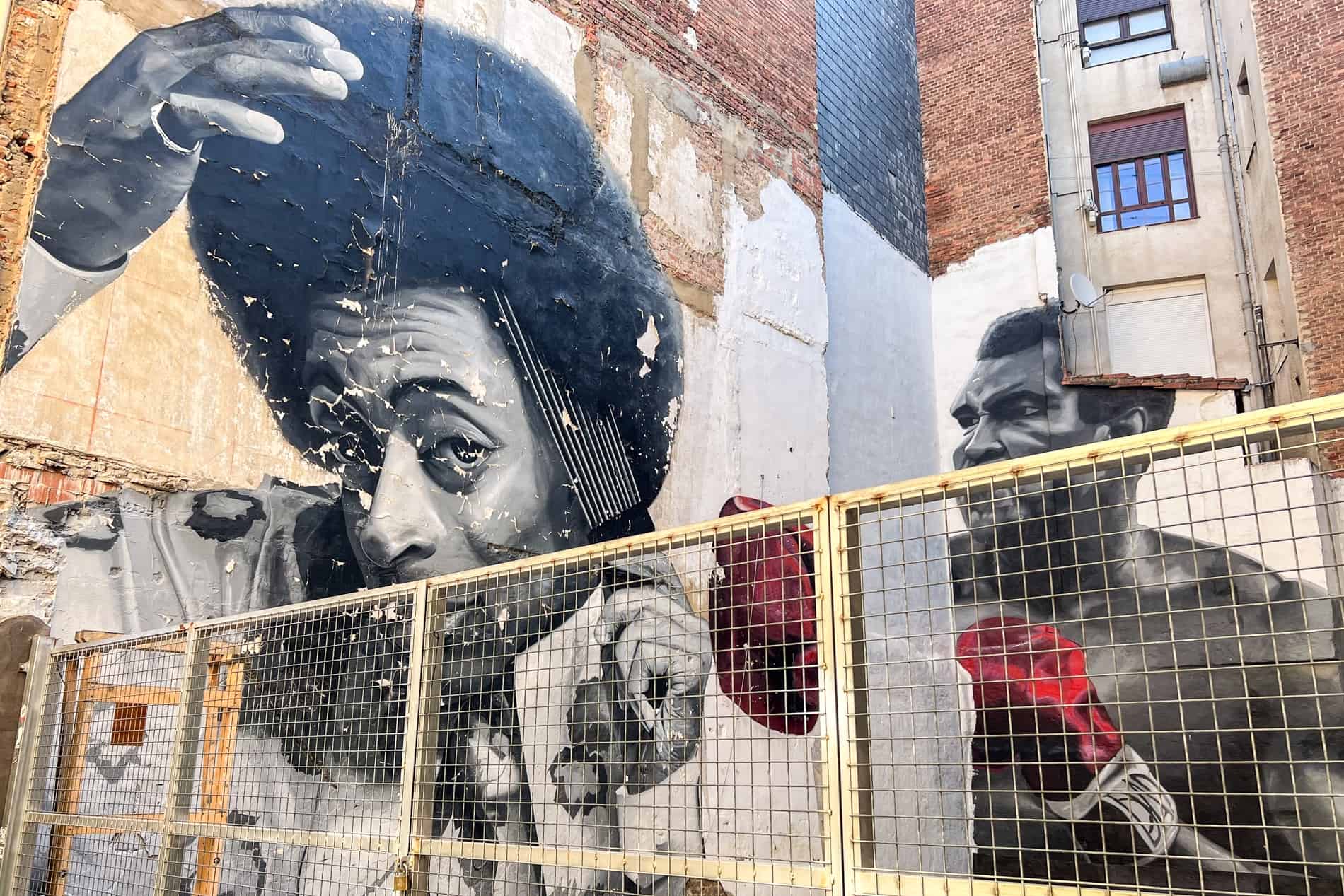
Barrio Húmedo’s gritty streets are the perfect canvas for street art.
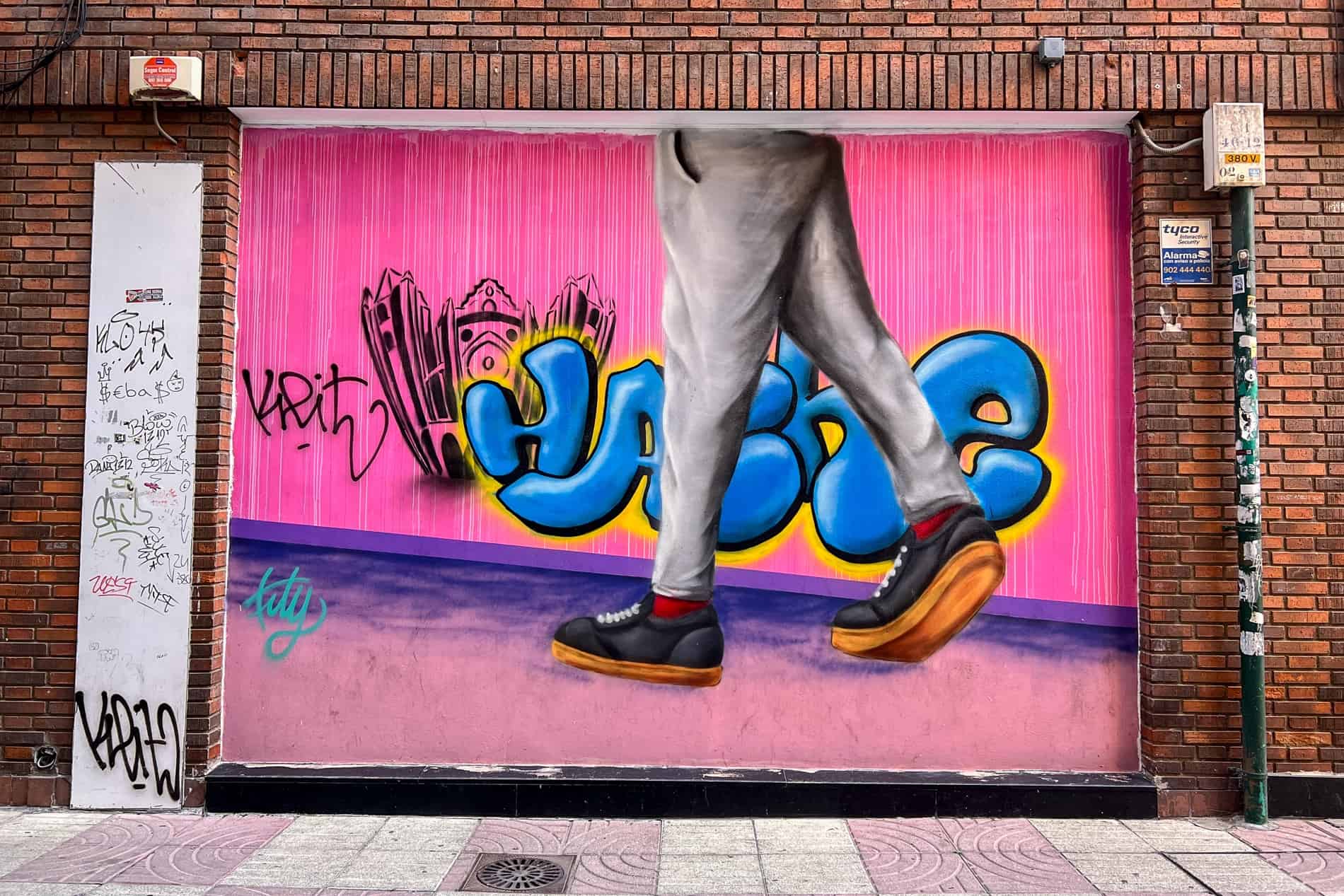
Street art in the modern area of León.
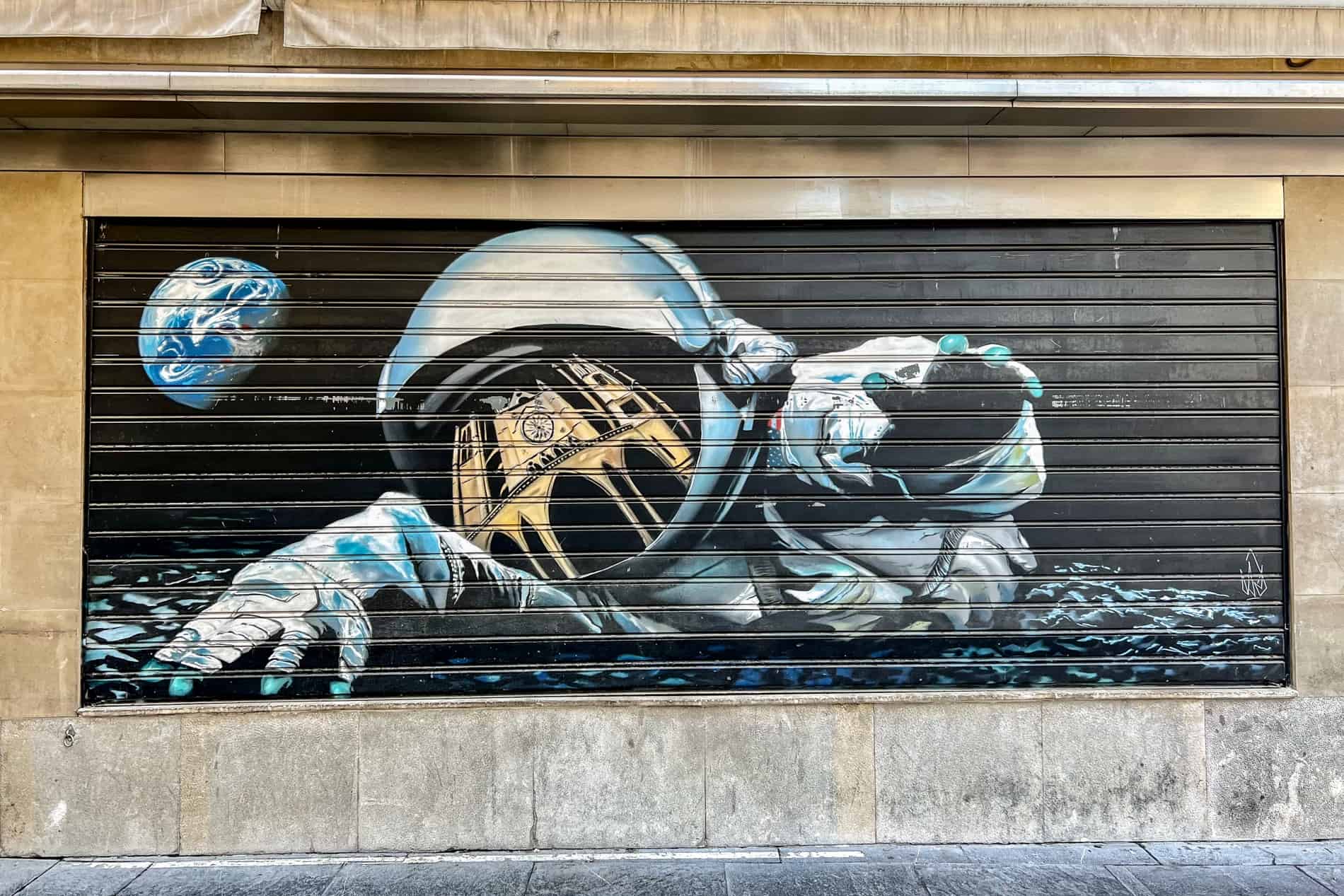
León’s street art feature’s its prominent landmarks.
Museo de Arte Contemporáneo / Contemporary Art Museum – MUSAC
A 15-minute walk from the centre of León into its modern area, you’ll find the multi-coloured glass-panelled Contemporary Art Museum ( MUSAC ). Even if you don’t have time to browse the collection of more than 1,600 works of art by artists from Castilla y León and Spain, its exterior is worthy of a view. Its design corresponds to the artistry of León Cathedral – the colour of the museum’s panels matches the pixelated colours of an old cathedral window.
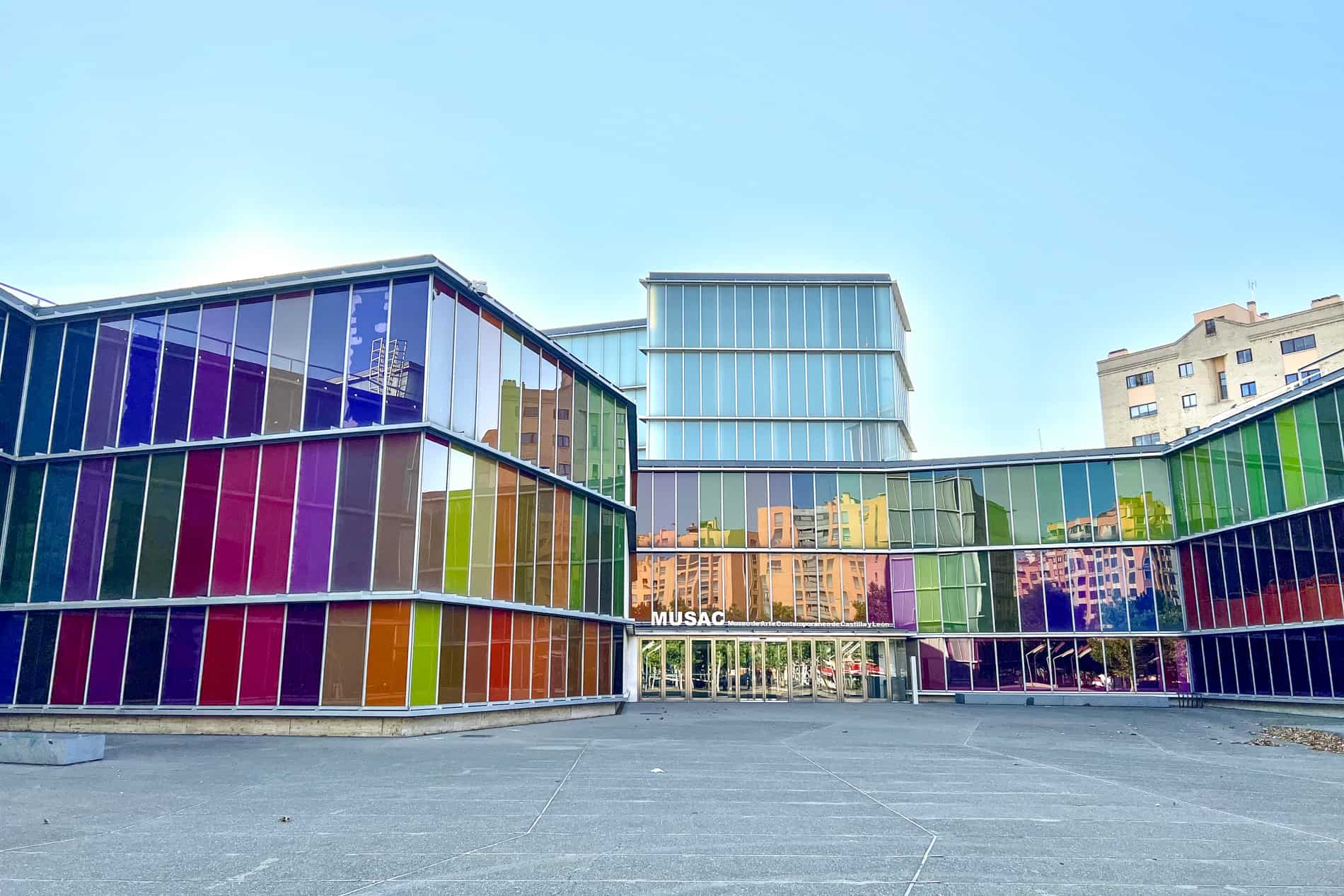
Modern León and the multi-coloured MUSAC.
Castilla y León is an excellent wine-producing region, dating back to the Romans. Over 600 wineries produce red, white, and rose varieties with 14 designations of origin with the Vino de la Tierra de Castilla y León Protected Geographical Indication (PGI) seal.
Aside from sightseeing, wine tasting is one of the finer things to do in León. But why here specifically? The province of León was awarded its own quality stamp – the León Designation of Origin (DO León) – for its wine produced mainly in the southern region of the province. What sets the wine apart is the native grape varieties grown in its 36 vineyards – Prieto Picudo for red and rosé wine and Albarín for white wine.
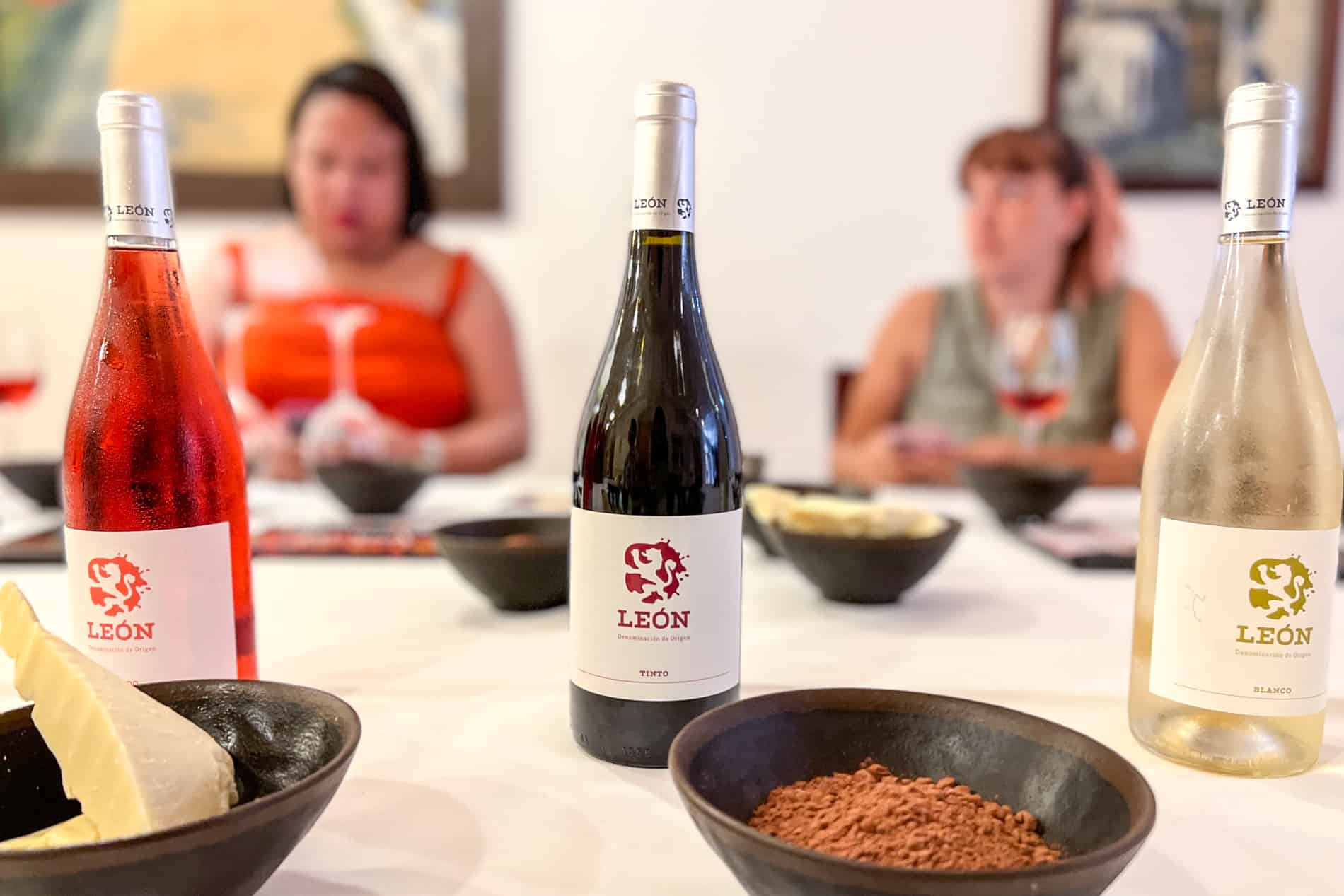
The province of León has its own quality wine stamp – the León Designation of Origin (DO León).
Our wine tasting with DO León was combined with a chocolate pairing with Leonese cacao masters, Santocildes – a family-run chocolatier for over 100 years. The tradition of chocolate making here goes back to when Spain was the first country in Europe to have it because of the voyages of Columbus . It was a delicacy reserved for nobility, delivered to the palace as goods passed through León on the road to Madrid.
Trips from León
With León the most northern city of the Castilla y León region, it is well positioned to travel here from more northern Gijon and Oviedo in Asturias and to move further south on a city-hopping journey towards Madrid.
READ MORE: Things to in Oviedo – The Monumental Capital of Asturias
Trains from León to other major provincial capitals, including Burgos (3 hours), Avila (around 4 hours) and Zamora (approximately 7 hours), change in at Palencia station. León to Salamanca changes at Valladolid, where I got off and spent some time.
While Valladolid might be more known for its religious sites (it has dozens of churches) and the famous Easter-time Holy Week, there’s still more to the city.
There are architectural nods to its days as a capital of the Spanish Empire (Habsburg Monarchy) between 1601 and 1606. Renowned artworks include the three paintings in the chapel of Real Monasterio de San Joaquín y Santa Ana by Spanish artist Francisco Goya. Urban regenerated turned spaces like Plaza del Viejo Coso – the former bullring of Valladolid – into a residential area. And home to the second oldest university in Spain, the city is filled with a young, creative, and energetic vibe.
Just one hour away from Madrid by train, Valladolid a great entryway and introduction to northern Spain.
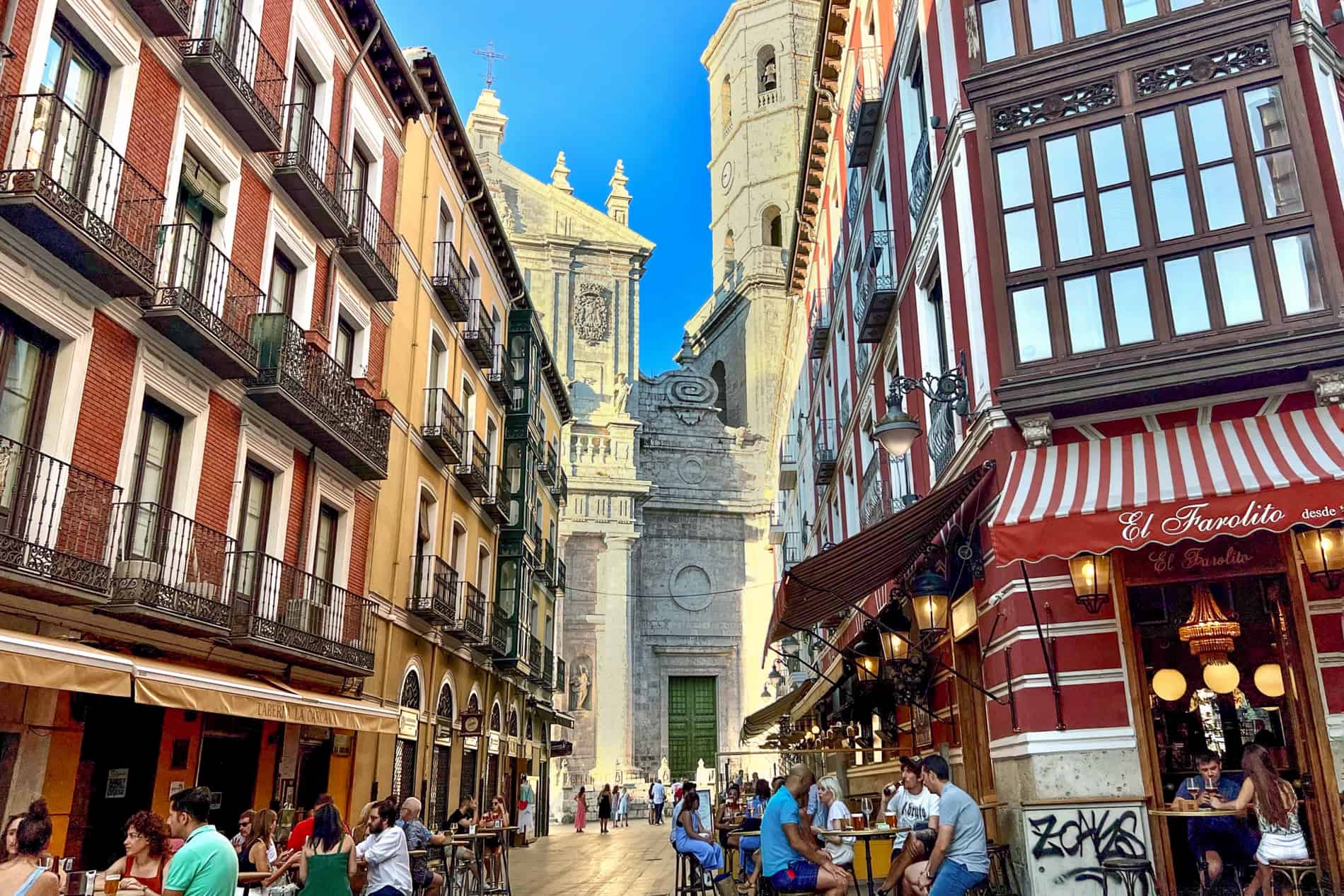
South of León is Valladolid – a vibrant university city.
My visit to the city of Leon was part of a trip travelling northern Spain by train in partnership with Spanish Tourism . Thoughts, insights and opinions remain my own.
About Becki
Becki Enright is a British Travel Press Award-winning writer whose work focuses on changing perceptions about misunderstood aspects of destinations. Her writing combines storytelling with insight into the social, historical, political and economic factors that shape the country or place in relation to tourism. Becki has appeared live on Sky News and CNN and has contributed to high profile media including National Geographic, Time.com, Guardian online, New York Times, Grazia and Buzzfeed.
Leave a Reply Cancel reply
Your email address will not be published. Required fields are marked *
- Article Archives
- Work with me
- Privacy Policy

- 1.1 Climate
- 2.2 By train
- 2.3 By plane
- 3 Get around
- 7.2 Mid-range
- 7.3 Splurge
- 9.2 Mid-range
- 9.3 Splurge
- 10.1 Astorga
<a href=\"https://tools.wmflabs.org/wikivoyage/w/poi2gpx.php?print=gpx&lang=en&name=Le%C3%B3n_(Spain)\" title=\"Download GPX file for this article\" data-parsoid=\"{}\"><img alt=\"Download GPX file for this article\" resource=\"./File:GPX_Document_rev3-20x20.png\" src=\"//upload.wikimedia.org/wikipedia/commons/f/f7/GPX_Document_rev3-20x20.png\" decoding=\"async\" data-file-width=\"20\" data-file-height=\"20\" data-file-type=\"bitmap\" height=\"20\" width=\"20\" class=\"mw-file-element\" data-parsoid='{\"a\":{\"resource\":\"./File:GPX_Document_rev3-20x20.png\",\"height\":\"20\",\"width\":\"20\"},\"sa\":{\"resource\":\"File:GPX Document rev3-20x20.png\"}}'/></a></span>"}'/>

León is a city in Spain , and capital of the province of the same name. It is on the Way of St. James and has a vast cultural, historical and architectural heritage. Some of the city's most prominent historical buildings are the Cathedral, one of the finest examples of French-style classic Gothic architecture in Spain, the Basilica of San Isidoro, one of the most important Romanesque churches in Spain and resting place of León's medieval monarchs, the Monastery of San Marcos, an example of plateresque and Renaissance Spanish architecture, and the Casa Botines, a Modernist creation of the architect Antoni Gaudí. An example of modern architecture is the city's Museum of Contemporary Art (MUSAC).
The city of León is in the northwest of Spain. León was founded in the 1st century BC by the Roman legion Legio VI Victrix, which served under Caesar Augustus during the Cantabrian Wars (29-19 BC), the final stage of the Roman conquest of Hispania. In the year 74 AD, the Legio VII Gemina —recruited from the Hispanics by Galba in 69 AD— settled in a permanent military camp that was the origin of the city. Its modern name is derived from the city's Latin name Legio . The Kingdom of León (established in 910 CE) was an ancient territory with a great Dynasty of Kings that would become kings of Spain after the union with the Kingdom of Aragon. The counties of Portugal and Castile were born as divisions of the ancient kingdom of León that remained independent until the union with Castile again.
It has a city population of about 125,000 inhabitants and a metropolitan area of 203,000 (2018).
In winter, temperatures normally range from −1 °C (30 °F) to 13 °C (55 °F). Frost is common in the early hours of the morning before the dawn during the coldest days of the winter, but normally melts after sunrise. Snowfalls are not rare in the city (9 days a year), however heavy snowfalls are extremely rare. During spring, temperatures are usually between 10 °C (50 °F) on the coldest days and may easily surpass 25 °C (77 °F) on some days. Summers are warm and relatively dry, with temperatures usually oscillating between 16 °C (61 °F) and 35 °C (95 °F). In the hottest days of summer, it's uncommon that temperatures reach over 35 °C (95 °F).
ALSA ( ☏ +34 902-44-22-42 ) runs buses from Madrid several times a day (3½ hr). Buses leave from Estación Sur de Autobuses at the metro station Méndez Álvaro , a round trip costs €20-40 per person. There are also some direct bus connections from Madrid Barajas International Airport.
Renfe , ☏ +34 902-240-202 , operates train service from Madrid (2 hr). Trains leave from Chamartin (Madrid north station) to León several times a day.
There are also direct train connections from Valladolid (1 hr), Oviedo (2 hr 30 min), Barcelona (5 hr 40 min), and other Spanish cities.
Taxi to the city centre costs between €20-25. There is also a public bus which costs €3, for the schedule, ☏ +34 987 219 656 .
Nearby airports are Valladolid Airport ( VLL IATA ) (125 km) and Asturias Airport ( OVD IATA ) (170 km). ALSA operates daily direct services from Valladolid airport to León.

The city is not too big to see on foot, especially the main attractions, which are all quite close to one another. Parking is available in underground carpark close to centre, 0.03¢ per minute.

The city of León was founded by the Romans. Its name originates from the name Romans gave to the city, "Legio VII". Tourists who come to León can enjoy many monuments such as the city walls , the gothic cathedral or Roman monuments such as the Church of San Marcelo €14.
- Church of San Isodoro ( Real Basilica de San Isidoro ). Built in the 11th century, with the adjoining Pantheon of the Kings of León. The ceiling paintings in the latter are breathtaking. There is a small library packed with 10th, 11th and 12th century hand-written manuscripts, and the sarcophagus of King Ferdinand I (not the Ferdinand of Ferdinand and Isabella.) €14 closed Monday. . ( updated Jan 2017 )

- Palacio de los Guzmanes , a 15th-century palace, and current seat of Lèon administration. Free, guided tour you need to sign up first. Wednesday to Sunday.
- Palacio de los Condes de Luna . It's under restoration.
- Roman Walls near Plaza San Isidoro
- Museo de León . In Edificio Pallarés, a 20th-century building in Santo Domingo circus.
- [ dead link ] Fundación Vela Zanetti . The museum about Zanetti's paintings.
From the cathedral, to the Bernesga River, there are two main streets, Calle Ancha, and Ordoño II, full of shops. In the middle of Ordoño II there's Alcázar de Toledo Street with shops.
Within the wide range of Leonese cuisine the following dishes are the most representative: Cecina (cured, smoked beef), morcilla (a superb variant of blood sausage), botillo (a dish of meat-stuffed pork intestine), garlic soup, el cocido leonés (a mix of meat with vegetables and chickpeas, served after a vegetable-vermicelli soup) and mantecadas (a sweet).
Another very important part of the gastronomy of León are the tapas that you can get in most of the many bars in the city. The most important thing about these tapas is that they are free unlike in most cities in Spain. It is a very common thing to do to go "de tapas" or "tapear" i.e. to go for a few drinks ("un corto", which is a very small beer, "una caña", which is roughly half a pint of beer or "un vino," a glass of wine) just before lunch, but more normally as a light form of dinner.
Any tourist visiting León will enjoy the ancient streets of "Barrio Húmedo" . There it is possible to visit many bars in which tapas (for free) are served along with nice wines from "Tierras de Leon", "Ribera de Duero", or "Vino del Bierzo".
You can also visit some villages near Leon with vineyards such as Valdevimbre . There you will find caves that are as old as 300 years . Originally they were dug for wine cellars since they maintain nearly the same temperature year round. Today they are still used to make wine. Some of them have become restaurants or pubs.
The oldest cave-restaurant was opened in 1979 and it is called La Cueva del Tunel . It has a typical decoration with an Indian touch.
In Los Poinos you can find a mix between new cuisine and typical food from Leon.
In any of the Cuevas restaurants you will be able to enjoy the typical food from Leon such as cecina , callos , morcilla (blood pudding), etc. all those traditional place will be accompanied by local wines as Pardevalles , Tampesta, Barcillo or Los Palomares (inside the new D.O. Tierras de Leon).
Valdevimbre is 23 km from Leon and you can drive there or get a taxi for approximately €25 from Leon.
All these are in the city center:
- 42.59741 -5.567519 1 La Somoza Tradición , C/ Platerias, 4 . Very elaborate and excellent cuisine, recovering recipe books and giving visibility to local products. Working in a fantastic way on typical dishes of León. ( updated Sep 2022 )
- 42.59673 -5.567526 2 Meson Jabugo , Pl. San Martín, 6 . Super nice place in the square with atmosphere. Homemade and delicious food. Very generous tapas. ( updated Sep 2022 )
- 42.598324 -5.565875 3 Restaurante La Casa del Cocido , Calle Serradores, 4 . Nice restaurant to eat the typical cocido leones. Very good menu, varied and extensive. ( updated Sep 2022 )
- 42.596195 -5.567173 4 Taberna Misericordia , C. Misericordia, 9 . The best pirate tavern in León. A cozy place, with a very good attention and an excellent service. A wonderful bar and the waiters go out they make you feel at home. ( updated Sep 2022 )
- 42.597007 -5.56924 5 Pizzería La Competencia , C. Conde Rebolledo, 17 . A good place both for lunch and dinner to have tapas and try their pizzas. Excellent lasagna, abundant food. Very tasty jerky pizza with chestnut. ( updated Sep 2022 )
- 42.597271 -5.567688 6 Jamón Jamón , C. Azabachería, 6 . Site with spectacular sausage tapas which are very generous. Super friendly and attentive waitress. ( updated Sep 2022 )
- 42.598442 -5.569287 7 Restaurante Lumière , Calle Ancha, 18 . High quality and originality of the dishes. Very pleasant interior. The place in particular is beautiful, pleasant and relaxed decorated, well cared for by its attentive employees, who are well dressed. Quick service. ( updated Sep 2022 )
- 42.596967 -5.571064 8 Restaurante Alfonso Valderas , C. Arco de Ánimas, 1 . They make cod like nobody else. With valderas, green sauce or with squid and two sauces: They are all delicious. Treatment, quality, warmth, flavors - all 10. The very professional service is always friendly. ( updated Sep 2022 )
- 42.5964 -5.570904 9 niMÚ Azotea , C. Gral. Lafuente . Spectacular views from one of the sides of the terrace. The food is very rich and original. Very attentive service. It doesn't matter what you order because everything is incredible but if you like meat, ask for the sirloin and salt. ( updated Sep 2022 )
- 42.594264 -5.57399 10 Pagus Pasta y Grill Leon , Calle Villa Benavente, 16 . Unbeatable meat. Incredible food and gluten-free variety. Food more than acceptable in quantity, quality and preparation. Very cozy atmosphere. The staff is attentive at all times and the service is very fast. To be loved. ( updated Sep 2022 )
- 42.60058 -5.566399 11 Restaurante Pablo , Av. los Cubos, 8 . An exquisite menu, and successful and excellent selection of wines. All this, together with an exceptional treatment, make it a very pleasant gastronomic experience. Cozy place, friendly and synchronized staff for the attention and collection of each dish. Above all the dishes are very elaborate, with local products and an explosion of flavors and sensations. ( updated Sep 2022 )
- 42.602041 -5.581045 12 Restaurante Cocinandos , Plaza San Marcos, 5 . Exceptional service, where they explain each of the dishes with a brief presentation. They use products from the region and are based on Leonese cuisine. Minimalist but with generous amounts. Each month the menu is updated so it is definitely worth coming again. ( updated Sep 2022 )
Tierra de León is a Spanish Denominación de Origen (DO) for wines from the south of the province of León. This wines are usually done with the unique grape variety typical from Leon, the Prieto Picudo , although Mencía type of grapes are also used. The Tierra de Léon wine region consists of 36 vineyards (Bodegas), which produce 1.5 million litres of wine annually.
Go bar-hopping or clubbing in the barrio húmedo , a charming old neighborhood with narrow streets, with a concentration of pubs, discos, and restaurants. This area isn't usually very active during the day and can get fairly rowdy at night. However, despite how many people may be stumbling around drunkenly at 03:00, this neighbourhood is very safe, even for single females late at night.
- Hostal Tranches .
- Hotel Paris , Calle Ancha. 100 m to cathedral.
- Hotel NH Plaza Mayor . Set in the middle of Barrio Humedo. 300 m to cathedral.
- Parador de León , Pza. de San Marcos , ☏ +34 987237300 , [email protected] . A great deluxe hotel set in a gorgeous 15th-century building.
- Hotel Alfonso V Santo Domingo circus, town centre.

- Town hall . Construction started in 1683. It is a Baroque edifice with three towers in its façade, the middle one including the bells.
As of Aug 2024, León and its approach roads have 5G from all Spanish carriers.
In León Province:
- Grajal de Campos : Medieval castle, church and palace
- San Miguel de la Escalada , 10th-century monastery
- Sahagún , 15th-century churches
- Valdevimbre
- Villafranca del Bierzo
Outside León Province:
- Has custom banner
- Has map markers
- Airport listing
- Has mapframe
- See listing with no coordinates
- Articles with dead external links
- Sleep listing with no coordinates
- Has routebox
- Has Geo parameter
- Castile and Leon
- All destination articles
- Outline cities
- Outline articles
- City articles
- Pages using the Kartographer extension
Navigation menu

Leon, Mexico – City Guide for Nomads and Expats
September 5, 2017

Updated in 2022.
Leon, Guanajuato, Mexico.
A safe, affluent mid-large size city that is almost always overlooked by tourists.
Best known for their fine leather products. It’s also known for shoes – both leather and otherwise – and you’ll find entire malls in the city dedicated to them. It’s also one of the more progressive cities in Mexico; highly educated population, good infrastructure, and environmentally friendly. The city is the largest in the Bajío Region, ahead of Queretaro and Morelia . The city is a major university center and the population is dominated by university students. When you meet someone from Leon, just nod your nod and say ‘oh yeah, the university city’. They’ll look shocked and reply ‘how did you know?’.
POPULATION : 1,500,000 (but it doesn’t feel that big).
Have questions?
Schedule Your Personal Consultation With My Latin Life
Table of Contents
RENT AN APARTMENT IN LEON, MEXICO
$500. It doesn’t seem difficult to find a place to rent because there are a lot of university students here doing the same. I couldn’t get a handle on where the best place to live here is. You could do worse than around the center or around a university (Tec de Monterrey, Ibero and La Salle de Bajio all have campuses here).
BEST BARS & NIGHTLIFE IN LEON, MEXICO
This being somewhat of a university town, there are tons of places to go out here. Regrettably, I wasn’t able to find a cool, unique bar that would be good for meeting people. Most of the university students here seem to go to Prive or Barezzito, two places I hate.
My Latin Life recommends:
Barezzito : Probably the best known nightclub in Leon. Really social circle oriented so it’s quite hard to meet anyone.
La Martina León : Trendy nightclub spot along a main street. Good prices, good service, DJ, and dancing.
The Normal : Asia-themed nightclub with tables and standing areas. Pretty cool spot.
Red Mosquito Live : Well known spot for live music and stand-up tables. Theres a big bar selection and some simple food options as well. This place is more of a live music venue than a nightclub, but definitely a good time. If you like rock music in Spanish, this is 1000% your spot.
BEST CAFES IN LEON FOR DIGITAL NOMADS
The coffee shops in Leon are full of university students and young professional.
Cafes that My Latin Life recommends:
Ameno Cafe : Great cafe with wifi in the Jardines del Moral neighborhood.
Broga Bar & Coffee : Popular cafe in the Panorama neighborhood, not too far from Ameno.
Starbucks Las Torres : There are several Starbucks in Leon.
COST OF LIVING IN LEON, MEXICO
The following data is from Expatistan, a crowdsourced database of prices and cost of living around the world. In our experience, the data tends to underestimate cost of living, so take the following as the minimum you might need to live here.
*Figures are listed in USD
You’ll need a minimum of $949 USD/month to live in Leon, Mexico

IS LEON, MEXICO SAFE?
Leon is one of the safest big cities in Mexico, if not the safest. The city has mostly been spared the drug violence that plagues some parts of Mexico. Petty crime is rare, likely due to the city being relatively affluent. You should be fine here at all hours unless you’re doing something stupid like trying to buy drugs on the street.
HOW TO GET TO LEON, MEXICO
There are direct flights from Mexico City . Leon is also a quick bus ride to Guadalajara .
BEST TIME OF YEAR TO VISIT LEON, MEXICO
The best time of year to visit Leon is during the university school season. The city is much more alive and there are more events. The university schedule generally takes a break during the summer (May to September). I would avoid Leon in the summer both for the heat, the lack of beach, and the lack of university students. The best season to visit Leon is the spring or fall.
JOB OPPORTUNITIES IN LEON
It’s a really good place for teaching English. Pay isn’t horrible and there is demand. I met an English here working for a university with no more experience than a degree and a TEFL.
FINAL THOUGHTS ON LEON, MEXICO
Leon could be a great city. Great energy from the university students, safe, good infrastructure. Problem is, is that it is truly unremarkable from an aesthetic standpoint. Given all the amazing cities that there are in Mexico, I wouldn’t make Leon a priority. The center is OK, but other than that the city is pretty ugly. Not quite as Americanized as Monterrey , but it’s on that track. That being said, if you are looking for somewhere to get some work done, enjoy nice weather and enjoy an authentic Mexican city, you could do much worse than Leon. Digital nomads will appreciate the various cafes dotting the city as well. That being said, you should expect to get bored fast with nothing else to do.
OVERALL RATING: 6.75/10
If you enjoyed this city guide, check out another one of our 100+ city guides to nearly every city in latin america .
- Top 10 Things To See...
Things to See and Do in Leon, Spain

Leon may not be a very well-known Spanish city, but it does offer visitors a fantastic variety of things to see and do. If you love architecture, you’re in for a treat, as Leon is home to a a wealth of grand, historic buildings, which include some of the most important in Spain . From convents and cathedrals to historic and contemporary museums, you’ll certainly find more than enough to keep you occupied here.
Did you know – Culture Trip now does bookable, small-group trips? Pick from authentic, immersive Epic Trips , compact and action-packed Mini Trips and sparkling, expansive Sailing Trips .
The Basílica de San Isidoro
The Basílica de San Isidoro is a grand caramel-coloured old church and collegiate college sitting at the edge of the Old Town. It was consecrated in 1063 and comprises a Royal Pantheon, covered in stunning colorful frescoes; an Oriental and Biblical Museum ; and a collegiate library. As well as these, the collegiate is also a beautiful luxury hotel, where you can dine in among the ancient cloisters and look down on the fountain-filled courtyard from your bedroom.
Gaudí’s Casa Botines
The famous architect Antoni Gaudí not only designed buildings in Barcelona, but in northern Spain, too. One of these is Leon’s Casa Botines , which opened in April 2017 for the first time in 125 years. Built between 1891 and 1892, it was commissioned by Simón Fernández and Mariano Andrés González, representatives of the Hispano-Colonial Bank of Barcelona. From the outside, it looks like a medieval fortress, but it was actually inspired by Leon’s gothic cathedral.
The Museo de Leon
Leon Museum is one the oldest and biggest history museums in the region of Castilla y Leon. The permanent collection takes visitors on a journey back in time through the province. Objects on display date as far back as the Bronze and Iron Ages. There are also artefacts from Las Médulas, the ancient Roman gold-mining site.
The Convento de San Marcos
The old convent of San Marcos is one of the most famous and stunningly beautiful buildings in Leon. It’s made up the convent itself, which is now a luxury five-star hotel; a church consecrated in 1541; and a fascinating archaeological museum. It was a gift from Fernando the Catholic to the city of Leon, and today is considered to be the most important Spanish Renaissance buildings in the country.
Leon Cathedral and Museum
Leon’s Cathedral, the Catedral de Santa María de Regla de Leon , is a French style gothic cathedral, which was built on the site of King Ordoño II’s royal palace. He wanted to give thanks to God after he was able to defeat the Moors, and the cathedral was his way of doing this. It has a stunning facade, decorated with a huge rose window and lots of colourful stained glass. As well as seeing inside the cathedral, visitors can learn more about it and see some of its exquisite objects on display at the museum.

Become a Culture Tripper!
Sign up to our newsletter to save up to $1,058 on our unique trips..
See privacy policy .
Museo de Arte Contemporáneo
The Museo de Arte Contemporaneo , one of the most important contemporary art museums in Castilla y Leon, houses more than 1,650 works by around 400 Spanish and Leonese artists, as well as international ones. The works only date as far back as 1992, and one of its most impressive galleries is the one devoted to the 21st century. Inaugurated in 2005, it was designed by architects Luis Mansilla and Emilio Tuñón, and is covered in hundreds of sheets of rainbow-coloured glass, which are supposed mimic the colours of the stained glass of the cathedral.
Palacio de los Guzmanes
The Palace of the Guzamanes sits right next to the Casa Botines and is a grand renaissance building that is the seat of the provincial government of Leon. It was built in the 16th century and was designed by the architect Rodrigo Gil de Hontañón. He was ordered to build it by the wealthy Guzman family, one of most influential in the area at that time.
Have Tapas in the Barrio Húmedo
The Barrio Húmedo is the name given to the city’s casco antiguo, or old town. It translates as the ‘wet district’, because it’s where the city’s biggest concentration of bars, pubs and taverns is located. This is also where you’ll find the city’s best tapas bars. What better way to seek out the best of them than to hop from bar to bar, sampling as you go?
Museo Sierra-Pambley
The Sierra-Pambley Museum was only inaugurated in 2006, even though the building dates back to the 19th century. Here, visitors can enter the world of the Leonese bourgeois elite to find out how they used to live. The house was built in 1848 by Segundo Sierra Pambley and features all the original furnishings and fittings, such as patterned wallpaper, luxurious carpets and gilt-edged mirrors.
Have a Drink on the Plaza Mayor
At the centre of the city sits the grand Plaza Mayor, surrounded by colonnade arches, beautiful architecture and buildings painted in crimsons, mustards and rose. It was originally constructed in 1672, although there were some later additions in 1677. The original name of the square was Plaza Pan, or Bread Square, because it was home to so many bakeries. Why not admire this elegant square and its graceful Consistory building from one of the many cafes while you enjoy a drink?

The 7 Best Walking Tours in Madrid

The Top 10 City Tours in Bilbao

The 5 Best Street Art Tours in Madrid

The 7 Best Day Trips From Bilbao

The 10 Best Things to Do in Barcelona This Fall

The 6 Best Food and Tapas Tours in Madrid

The 8 Best Bicycle Tours in Barcelona

The 7 Best Day Trips From Santander, Spain

The 8 Best Walking Tours of Bilbao

10 Best Day Trips from Valencia

The 11 Most Beautiful Locations to Visit in Spain This Fall

The 7 Best Day Trips from Salamanca
Culture Trip Fall Sale
Save up to $1,058 on our unique small-group trips! Limited spots.

- Post ID: 1541266
- Sponsored? No
- View Payload
- Travel Advisories |
- Contact Us |
- MyTravelGov |
Find U.S. Embassies & Consulates
Travel.state.gov, congressional liaison, special issuance agency, u.s. passports, international travel, intercountry adoption, international parental child abduction, records and authentications, popular links, travel advisories, mytravelgov, stay connected, legal resources, legal information, info for u.s. law enforcement, replace or certify documents.
Share this page:
Mexico Travel Advisory
Travel advisory september 6, 2024, mexico - see state summaries.
Reissued after periodic review with updates for Chiapas, and Durango.
Country Summary: Violent crime – such as homicide, kidnapping, carjacking, and robbery – is widespread and common in Mexico. The U.S. government has limited ability to provide emergency services to U.S. citizens in many areas of Mexico, as travel by U.S. government employees to certain areas is prohibited or restricted. In many states, local emergency services are limited outside the state capital or major cities.
U.S. citizens are advised to adhere to restrictions on U.S. government employee travel. State-specific restrictions are included in the individual state advisories below. U.S. government employees may not travel between cities after dark, may not hail taxis on the street, and must rely on dispatched vehicles, including app-based services like Uber, and regulated taxi stands. U.S. government employees should avoid traveling alone, especially in remote areas. U.S. government employees may not drive from the U.S.-Mexico border to or from the interior of Mexico, except daytime travel within Baja California and between Nogales and Hermosillo on Mexican Federal Highway 15D, between Nuevo Laredo and Monterrey on Highway 85D and between Ciudad Juarez and interior cities as noted in the Chihuahua section. Read the country information page for additional information on travel to Mexico.
Do Not Travel To:
- Colima state due to crime and kidnapping .
- Guerrero state due to crime .
- Michoacan state due to crime .
- Sinaloa state due to crime .
- Tamaulipas state due to crime and kidnapping.
- Zacatecas state due to crime and kidnapping .
Reconsider Travel To:
- Baja California state due to crime and kidnapping .
- Chiapas state due to crime .
- Chihuahua state due to crime and kidnapping .
- Guanajuato state due to crime .
- Jalisco state due to crime and kidnapping .
- Morelos state due to crime and kidnapping .
- Sonora state due to crime and kidnapping .
Exercise Increased Caution When Traveling To:
- Aguascalientes state due to crime .
- Baja California Sur state due to crime .
- Coahuila state due to crime .
- Durango state due to crime .
- Hidalgo state due to crime .
- Mexico City due to crime .
- Mexico State due to crime and kidnapping .
- Nayarit state due to crime .
- Nuevo Leon state due to crime .
- Oaxaca state due to crime .
- Puebla state due to crime and kidnapping .
- Queretaro state due to crime .
- Quintana Roo state due to crime .
- San Luis Potosi state due to crime and kidnapping .
- Tabasco state due to crime .
- Tlaxcala state due to crime .
- Veracruz state due to crime .
Exercise Normal Precautions When Traveling To:
- Campeche state
- Yucatan state
Visit our website for Travel to High-Risk Areas .
If you decide to travel to Mexico:
- Keep traveling companions and family back home informed of your travel plans. If separating from your travel group, send a friend your GPS location. If taking a taxi alone, take a photo of the taxi number and/or license plate and text it to a friend.
- Use toll roads when possible and avoid driving alone or at night. In many states, police presence and emergency services are extremely limited outside the state capital or major cities.
- Exercise increased caution when visiting local bars, nightclubs, and casinos.
- Do not display signs of wealth, such as wearing expensive watches or jewelry.
- Be extra vigilant when visiting banks or ATMs.
- Enroll in the Smart Traveler Enrollment Program (STEP) to receive Alerts and make it easier to locate you in an emergency.
- Follow the Department of State on Facebook and X/Twitter .
- Follow the U.S. Embassy on Facebook and X/Twitter .
- Review the Country Security Report for Mexico.
- Mariners planning travel to Mexico should check for U.S. maritime advisories and alerts , which include instructions on reporting suspicious activities and attacks to Mexican naval authorities.
- Prepare a contingency plan for emergency situations. Review the Traveler’s Checklist .
- Visit the CDC page for the latest travel health information related to your travel.
Aguascalientes state – Exercise Increased Caution
Exercise increased caution due to crime.
Criminal activity and violence may occur throughout the state.
There are no restrictions on travel for U.S. government employees in Aguascalientes state.
Baja California state – Reconsider Travel
Reconsider travel due to crime and kidnapping.
Transnational criminal organizations compete in the border area to establish narco-trafficking and human smuggling routes. Violent crime and gang activity are common. Travelers should remain on main highways and avoid remote locations. Of particular concern is the high number of homicides in the non-tourist areas of Tijuana. Most homicides appeared to be targeted; however, criminal organization assassinations and territorial disputes can result in bystanders being injured or killed. U.S. citizens and LPRs have been victims of kidnapping.
U.S. government employees must adhere to the noted restrictions:
- Mexicali Valley: U.S. government employees should avoid the Mexicali Valley due to the heightened possibility of violence between rival cartel factions. The boundaries of the restricted area are: to the east, the Baja California/Arizona and Baja California/Sonora borders; to the south, from La Ventana (on Highway 5) due east to the Colorado River; to the west, Highway 5; and to the north, Boulevard Lazaro Cardenas/Highway 92/Highway 1 to Carretera Aeropuerto, from the intersection of Highway 1 and Carretera Aeropuerto due north to the Baja California/California border, and from that point eastward along the Baja California/California border.
- Travelers may use Highways 2 and 2D to transit between Mexicali, Los Algodones, and San Luis Rio Colorado during daylight hours. Travelers may also use Highways 1 and 8 to transit to and from the Mexicali Airport during daylight hours. Travel on Highway 5 is permissible during daylight hours.
To view a map of the restricted areas, visit https://mx.usembassy.gov/maps-of-restricted-areas There are no other travel restrictions for U.S. government employees in Baja California state. These include high-traffic tourism areas of border and coastal communities, such as Tijuana , Ensenada , and Rosarito .
Baja California Sur state – Exercise Increased Caution
There are no restrictions on travel for U.S. government employees in Baja California Sur state.
Campeche state – Exercise Normal Precautions
Exercise normal precautions.
There are no restrictions on travel for U.S. government employees in Campeche state.
Chiapas state – Reconsider Travel
Reconsider travel due to crime.
U.S. government employees may not travel to the municipality of Ocozocoautla and to the following restricted areas in the southeastern region. All areas within the boundaries, including highway and roads unless specifically exempted, are restricted. East-Northeast Boundary: the eastern boundary follows the Mexican-Guatemalan border from the southern point on the Pacific coast, along the border, to the northern end point east of Netzahualcóyotl. Northern Boundary: from Netzahualcóyotl in a straight line southwest towards the northern limit of Ocosingo. Western Boundary: from Ocosingo in a straight-line south to El Ocote, from El Ocote in a straight-line west to San Francisco Pujiltic, from San Franciso Pujiltic southwest to just north of Mapastepec. South-Southwest Boundary: Highway 200 from Mapastepec to Tapachula. All towns along this highway are not restricted. The area to the north of highway 200 defines the southern boundary of the restricted area. From Tapachula, the restricted area boundary is north and east of the city limits and then extends southeast to the Pacific coast at Tres Hermanos San Isidro.
U.S. government employees may travel to Tapachula within the city limits and on Highway 225, from Port Chiapas to Tapachula, including the Tapachula Airport.
To view a map of the restricted areas, visit https://mx.usembassy.gov/maps-of-restricted-areas
Chihuahua state – Reconsider Travel
Violent crime and gang activity are common. Most homicides are targeted assassinations against members of criminal organizations. Battles for territory between criminal groups have resulted in violent crime in areas frequented by U.S. citizens and U.S. government employees, including restaurants and malls during daylight hours. Bystanders have been injured or killed in shooting incidents. U.S. citizens and LPRs have been victims of kidnapping.
U.S. government employee travel is limited to the following areas with the noted restrictions:
- Ciudad Juarez: U.S. government employees may travel to the area of Ciudad Juarez bounded to the east by Bulevar Independencia; to the south by De los Montes Urales/Avenida Manuel J Clouthier/Carretera de Juárez; to the west by Via Juan Gabriel/Avenida de los Insurgentes/Calle Miguel Ahumada/Francisco Javier Mina/Melchor Ocampo; and to the north by the U.S.-Mexico border. Direct travel to the Ciudad Juarez airport (officially called the Abraham González International Airport) and the factories located along Bulevar Independencia and Las Torres is permitted. Travel to San Jerónimo is permitted only through the United States via the Santa Teresa U.S. Port of Entry; travel via Anapra is prohibited.
U.S. government employees may only travel from Ciudad Juarez to the city of Chihuahua during daylight hours via Federal Highway 45, with stops permitted only at the Guardia Nacional División Caminos station, the Umbral del Milenio overlook area, the border inspection station at KM 35, and the shops and restaurants on Federal Highway 45 in the city of Ahumada.
- U.S. government employees may travel between Ciudad Juarez and Ascension via Highway 2.
- Nuevo Casas Grandes Area (including Nuevo Casas Grandes, Casas Grandes, Mata Ortiz, Colonia Juárez, Colonia LeBaron, Paquimé and San Buenaventura): U.S. government employees may travel to the Nuevo Casas Grandes area during daylight hours via Mexico Federal Highway 2, and subsequently Federal Highway 10, to Nuevo Casas Grandes. Employees are permitted to stay overnight in the cities of Nuevo Casas Grandes and Casas Grandes only.
- City of Chihuahua: U.S. government employees may travel at any time to the area of the city of Chihuahua bounded to the north by Avenida Transformación; to the east by Avenida Tecnológico/Manuel Gómez Morín/Highway 16/Blvd.José Fuentes Mares; to the west by the city boundary; and to the south by Periférico Francisco R. Almada.
- U.S. government employees may travel on Highways 45, 16, and 45D through the city of Chihuahua and to the Chihuahua airport (officially called the General Roberto Fierro Villalobos International Airport).
- U.S. government employees may travel to Santa Eulalia to the east of the city of Chihuahua, as well as to Juan Aldama via Highway 16 to the northeast.
- U.S. government employees may travel south of the city of Chihuahua on Highway 45 to the southern boundary of Parral, including each town directly connected to Highway 45, including Lázaro Cárdenas, Pedro Meoqui, Santa Cruz de Rosales, Delicias, Camargo, Ciudad Jiménez, and Parral itself.
- U.S. government employees may only travel on official business from the city of Chihuahua on Highway 16 to Ciudad Cuauhtémoc bounded by Highway 21 to the north and east, Highway 5 to the west, and Bulevar Jorge Castillo Cabrera to the south.
- Ojinaga: U.S. government employees must travel to Ojinaga via U.S. Highway 67 and enter through the U.S. Port of Entry in Presidio, Texas.
- Palomas: U.S. government employees may travel to Palomas via U.S. highways through the U.S. Port of Entry in Columbus, New Mexico, or via Highway 2 in Mexico.
To view a map of the restricted areas, visit https://mx.usembassy.gov/maps-of-restricted-areas U.S. government employees may not travel to other areas of Chihuahua, including Copper Canyon .
Coahuila state – Exercise Increased Caution
Violent crime and gang activity occur in parts of Coahuila state.
U.S. government employees must adhere to the following travel restrictions:
- Zaragoza, Morelos, Allende, Nava, Jimenez, Villa Union, Guerrero, and Hidalgo municipalities : U.S. government employees may not travel to these municipalities.
- Piedras Negras and Ciudad Acuña: U.S. government employees must travel directly from the United States and observe a curfew from midnight to 6:00 a.m. in both cities.
To view a map of the restricted areas, visit https://mx.usembassy.gov/maps-of-restricted-areas There are no other restrictions on travel for U.S. government employees in Coahuila state.
Colima state – Do Not Travel
Do not travel due to crime and kidnapping.
Violent crime and gang activity are widespread. Most homicides are targeted assassinations against members of criminal organizations. Shooting incidents between criminal groups have injured or killed bystanders. U.S. citizens and LPRs have been victims of kidnapping.
Travel for U.S. government employees is limited to the following areas with noted restrictions:
- Manzanillo: U.S. government employee travel is limited to the tourist and port areas of Manzanillo.
- Employees traveling to Manzanillo from Guadalajara must use Federal Toll Road 54D during daylight hours.
To view a map of the restricted areas, visit https://mx.usembassy.gov/maps-of-restricted-areas U.S. government employees may not travel to other areas of Colima state.
Durango state – Exercise Increased Caution
Violent crime and gang activity are common in parts of Durango state.
- West and south of Federal Highway 45: U.S. government employees may not travel to this region of Durango state.
To view a map of the restricted areas, visit https://mx.usembassy.gov/maps-of-restricted-areas There are no other restrictions on travel for U.S. government employees in Durango state.
Guanajuato state – Reconsider Travel
Gang violence, often associated with the theft of petroleum and natural gas from the state oil company and other suppliers, occurs in Guanajuato, primarily in the south and central areas of the state. Of particular concern is the high number of murders in the southern region of the state associated with cartel-related violence. U.S. citizens and LPRs have been victims of kidnapping.
- Areas south of Federal Highway 45D: U.S. government employees may not travel to the area south of and including Federal Highway 45D, Celaya, Salamanca, and Irapuato.
To view a map of the restricted areas, visit https://mx.usembassy.gov/maps-of-restricted-areas There are no other restrictions on travel for U.S. government employees in Guanajuato state, which includes tourist areas in: San Miguel de Allende , Guanajuato City , and surrounding areas.
Guerrero state – Do Not Travel
Do not travel due to crime.
Crime and violence are widespread. Armed groups operate independently of the government in many areas of Guerrero. Members of these groups frequently maintain roadblocks and may use violence towards travelers. U.S. citizens and LPRs have been victims of kidnapping in previous years.
U.S. government employees may not travel to any area in the state of Guerrero, including to tourist areas in Acapulco , Zihuatanejo , Taxco , and Ixtapa .
Hidalgo state – Exercise Increased Caution
There are no restrictions on travel for U.S. government employees in Hidalgo state.
Jalisco state – Reconsider Travel
Violent crime and gang activity are common in parts of Jalisco state. In Guadalajara, territorial battles between criminal groups take place in tourist areas. Shooting incidents between criminal groups have injured or killed innocent bystanders. U.S. citizens and LPRs have been victims of kidnapping.
- Jalisco-Michoacan border and Federal Highway 110: U.S. government employees may not travel to the area between Federal Highway 110 and the Jalisco-Michoacan border, nor travel on Federal Highway 110 between Tuxpan, Jalisco, and the Michoacan border.
- Federal Highway 80: U.S. government employees may not travel on Federal Highway 80 south of Cocula.
To view a map of the restricted areas, visit https://mx.usembassy.gov/maps-of-restricted-areas There are no other restrictions on travel for U.S government employees in Jalisco state which includes tourist areas in: Guadalajara Metropolitan Area , Puerto Vallarta (including neighboring Riviera Nayarit) , Chapala , and Ajijic .
Mexico City (Ciudad de Mexico) – Exercise Increased Caution
Both violent and non-violent crime occur throughout Mexico City. Use additional caution, particularly at night, outside of the frequented tourist areas where police and security patrol more routinely. Petty crime occurs frequently in both tourist and non-tourist areas.
There are no restrictions on travel for U.S. government employees in Mexico City.
Mexico State (Estado de Mexico) – Exercise Increased Caution
Exercise increased caution due to crime and kidnapping.
Both violent and non-violent crime occur throughout Mexico State. Use additional caution in areas outside of the frequented tourist areas, although petty crime occurs frequently in tourist areas as well. U.S. citizens and LPRs have been victims of kidnapping. There are no restrictions on travel for U.S. government employees in Mexico State.
Michoacan state – Do Not Travel
Do not travel due to crime and kidnapping.
Crime and violence are widespread in Michoacan state. Travel for U.S. government employees is limited to the following areas with the noted restrictions:
- Federal Highway 15D: U.S. government employees may travel on Federal Highway 15D to transit the state between Mexico City and Guadalajara.
- Morelia: U.S. government employees may travel by air and by land using Federal Highways 43 or 48D from Federal Highway 15D.
- Lazaro Cardenas: U.S. government employees must travel by air only and limit activities to the city center or port areas.
To view a map of the restricted areas, visit https://mx.usembassy.gov/maps-of-restricted-areas U.S. government employees may not travel to other areas of the state of Michoacan, including the portions of the Monarch Butterfly Reserve located in Michoacan.
Morelos state – Reconsider Travel
Reconsider travel due to crime and kidnapping.
Violent crime and gang activity are common in parts of Morelos state. U.S. citizens and LPRs have been victims of kidnapping.
There are no restrictions on travel for U.S. government employees in Morelos state.
Nayarit state – Exercise Increased Caution
Criminal activity and violence may occur throughout Nayarit state.
There are no restrictions on travel for U.S government employees in Nayarit state.
Nuevo Leon state – Exercise Increased Caution
Criminal activity and violence may occur throughout the state. There are no restrictions on travel for U.S. government employees in Nuevo Leon state.
Oaxaca state – Exercise Increased Caution
Criminal activity and violence occur throughout the state.
U.S. travelers are reminded that U.S. government employees must adhere to the following travel restrictions:
- Isthmus region: U.S. government employees may not travel to the area of Oaxaca bounded by Federal Highway 185D to the west, Federal Highway 190 to the north, and the Oaxaca-Chiapas border to the east. This includes the cities of Juchitan de Zaragoza, Salina Cruz, and San Blas Atempa.
- Federal Highway 200 northwest of Pinotepa: U.S. government employees may not use Federal Highway 200 between Pinotepa and the Oaxaca-Guerrero border.
To view a map of the restricted areas, visit https://mx.usembassy.gov/maps-of-restricted-areas There are no restrictions on travel for U.S. government employees to other parts of Oaxaca state, which include tourist areas in: Oaxaca City , Monte Alban , Puerto Escondido, and Huatulco .
Puebla state – Exercise Increased Caution
Exercise increased caution due to crime and kidnapping.
Criminal activity and violence may occur throughout the state. U.S. citizens and LPRs have been victims of kidnapping.
There are no restrictions on travel for U.S. government employees in Puebla state.
Queretaro state – Exercise Increased Caution
There are no restrictions on travel for U.S. government employees in Queretaro state.
Quintana Roo state – Exercise Increased Caution
Criminal activity and violence may occur in any location, at any time, including in popular tourist destinations. While not directed at tourists, shootings between rival gangs have injured and killed innocent bystanders, including U.S. citizens. Violent crime, including homicides and assaults, has increased in Tulum.
There are no restrictions on travel for U.S. government employees in Quintana Roo state. Exercise increased caution after dark in Cancun, Playa del Carmen, and Tulum and remain in well-lit pedestrian streets and tourist zones.
San Luis Potosi state – Exercise Increased Caution
There are no restrictions on travel for U.S. government employees in San Luis Potosi state.
Sinaloa state – Do Not Travel
Violent crime is widespread. Criminal organizations are based in and operating in Sinaloa.
Travel for U.S. government employees is limited to the following areas with the noted restrictions:
- Mazatlan: U.S. government employees may travel to Mazatlan by air or sea only, are limited to the Zona Dorada and historic town center, and must travel via direct routes between these destinations and the airport and sea terminal.
- Los Mochis and Topolobampo: U.S. government employees may travel to Los Mochis and Topolobampo by air or sea only, are restricted to the city and the port, and must travel via direct routes between these destinations and the airport.
To view a map of the restricted areas, visit https://mx.usembassy.gov/maps-of-restricted-areas U.S. government employees may not travel to other areas of Sinaloa state.
Sonora state – Reconsider Travel
Sonora is a key location used by the international drug trade and human trafficking networks. Violent crime is widespread. U.S. citizens and LPRs have been victims of kidnapping. Travelers should maintain a heightened level of awareness of their surroundings in all their travels in Sonora. Security incidents may occur in any area of Sonora.
- Travel between Hermosillo and Nogales: U.S. government employees may travel between the U.S. Ports of Entry in Nogales and Hermosillo during daylight hours via Federal Highway 15 only. U.S. government employees may not use ANY taxi services, public buses, nor ride-share applications due to a lack of secure vetting and/or dispatching procedures. Travelers should exercise caution and avoid unnecessary stops as security incidents, including sporadic, armed carjackings, and shootings have been reported along this highway during daylight hours. Travelers should have a full tank of gas and inform friends or family members of their planned travel.
- Nogales: U.S. government employees may not travel in the triangular area north of Avenida Tecnologico, west of Bulevar Luis Donaldo Colosio (Periferico), nor east of Federal Highway 15D (Corredor Fiscal). U.S. government employees also may not travel in the residential and business areas to east of the railroad tracks along Plutarco Elias Calle (HWY 15) and Calle Ruiz Cortino, including the business area around the Morley pedestrian gate port-of-entry. U.S. government employees may not use ANY taxi services, public buses, nor ride-share applications in Nogales due to a lack of secure vetting and/or dispatching procedures and the danger of kidnapping and other violent crimes.
- Puerto Peñasco: U.S. government employees may travel between Puerto Peñasco and the Lukeville-Sonoyta U.S. Port of Entry during daylight hours via Federal Highway 8 only. They may not travel on any other route to Puerto Peñasco. U.S. government employees may not use ANY taxi services, public buses, nor ride-share applications in Puerto Peñasco. due to a lack of secure vetting and/or dispatching procedures and the danger of kidnapping and other violent crimes.
- Triangular region near Mariposa U.S. Port of Entry: U.S. government employees may not travel into or through the triangular region west of the Mariposa U.S. Port of Entry, east of Sonoyta, and north of Altar municipality.
- San Luis Rio Colorado, Cananea, and Agua Prieta : U.S. government employees may travel directly from the nearest U.S. Port of Entry to San Luis Rio Colorado, Cananea (via Douglas Port of Entry), and Agua Prieta, but may not go beyond the city limits. Travel is limited to daylight hours only. Travel between Nogales and Cananea via Imuris is not permitted. U.S. government employees may not use ANY taxi services, public buses, nor ride-share applications in these cities due to a lack of secure vetting and/or dispatching procedures and the danger of kidnapping and other violent crimes.
- Eastern and southern Sonora (including San Carlos Nuevo Guaymas and Alamos): U.S. government employees may not travel to areas of Sonora east of Federal Highway 17, the road between Moctezuma and Sahuaripa, and State Highway 20 between Sahuaripa and the intersection with Federal Highway 16. U.S. government employees may travel to San Carlos Nuevo Guaymas and Alamos; travel to Alamos is only permitted by air and within city limits. U.S. government employees may not travel to areas of Sonora south of Federal Highway 16 and east of Federal Highway 15 (south of Hermosillo), as well as all points south of Guaymas, including Empalme, Guaymas, Obregon, and Navojoa. U.S. government employees may not use ANY taxi services, public buses, nor ride-share applications in these areas due to a lack of secure vetting and/or dispatching procedures and the danger of kidnapping and other violent crimes.
To view a map of the restricted areas, visit https://mx.usembassy.gov/maps-of-restricted-areas U.S. government employees may travel to other parts of Sonora state in compliance with the above restrictions, including tourist areas in: Hermosillo , Bahia de Kino , and Puerto Penasco .
Tabasco state – Exercise Increased Caution
There are no restrictions on travel for U.S. government employees in Tabasco state.
Tamaulipas state – Do Not Travel
Organized crime activity – including gun battles, murder, armed robbery, carjacking, kidnapping, forced disappearances, extortion, and sexual assault – is common along the northern border and in Ciudad Victoria. Criminal groups target public and private passenger buses, as well as private automobiles traveling through Tamaulipas, often taking passengers and demanding ransom payments.
Heavily armed members of criminal groups often patrol areas of the state and operate with impunity particularly along the border region from Reynosa to Nuevo Laredo. In these areas, local law enforcement has limited capacity to respond to incidents of crime. Law enforcement capacity is greater in the tri-city area of Tampico, Ciudad Madero, and Altamira, which has a lower rate of violent criminal activity compared to the rest of the state. U.S. citizens and LPRs have been victims of kidnapping. U.S. citizens and LPRs have been victims of kidnapping.
- Matamoros and Nuevo Laredo: U.S. government employees may only travel within a limited radius around and between the U.S. Consulates in Nuevo Laredo and Matamoros, their homes, the respective U.S. Ports of Entry, and limited downtown sites, subject to an overnight curfew.
- Overland travel in Tamaulipas: U.S. government employees may not travel between cities in Tamaulipas using interior Mexican highways. Travel between Nuevo Laredo and Monterrey is limited to Federal Highway 85D during daylight hours with prior authorization.
To view a map of the restricted areas, visit https://mx.usembassy.gov/maps-of-restricted-areas U.S. government employees may not travel to other parts of Tamaulipas state.
Tlaxcala state – Exercise Increased Caution
There are no restrictions on travel for U.S. government employees in Tlaxcala state.
Veracruz state – Exercise Increased Caution
Violent crime and gang activity occur with increasing frequency in Veracruz, particularly in the center and south near Cordoba and Coatzacoalcos. While most gang-related violence is targeted, violence perpetrated by criminal organizations can affect bystanders. Impromptu roadblocks requiring payment to pass are common. There are no restrictions on travel for U.S. government employees in Veracruz state.
Yucatan state – Exercise Normal Precautions
There are no restrictions on travel for U.S. government employees in Yucatan state, which include tourist areas in: Chichen Itza , Merida , Uxmal , and Valladolid .
Zacatecas state – Do Not Travel
Violent crime, extortion, and gang activity are widespread in Zacatecas state. U.S. citizens and LPRs have been victims of kidnapping.
- Zacatecas City : U.S. government employee travel is limited to Zacatecas City proper, and employees may not travel overland to Zacatecas City.
- U.S. government employees may not travel to other areas of Zacatecas state.
Travel Advisory Levels
Assistance for u.s. citizens, search for travel advisories, external link.
You are about to leave travel.state.gov for an external website that is not maintained by the U.S. Department of State.
Links to external websites are provided as a convenience and should not be construed as an endorsement by the U.S. Department of State of the views or products contained therein. If you wish to remain on travel.state.gov, click the "cancel" message.
You are about to visit:

Leon, a World Heritage City
Northern Spain Tourism for International UK Tourists
This website is dedicated to help UK tourists to connect directly with local businesses in Leon and be able to make the most of their holiday without intermediaries.
Leon is a Northern Spain province that every UK tourist should visit at least once in their lives.
Everyone knows Spain is one of the most popular holiday destinations in Europe and around the globe. Spain offers an exceptional variety of beach holidays where tourists enjoy their breaks year after year. Leon is a Northern Spain province within the Castilla and Leon autonomous community where its capital city named Leon offers a high quality range of places where tourists would simply be amazed.
Click on the images and dig into Leon to discover a complete different side of Spain

Leon Province
Book your holiday rental directly from property owners .
Our role is to enable licensed property owners to gain direct access to the UK market.
Book a holiday property

Subscribe Form
Thanks for subscribing!

COMMENTS
Discover how to spend a weekend in León, a refined city of architectural treasures and tempting tapas. Explore the Roman Walls, the Basílica de San Isidoro, the Cathedral, and the Casa Botines, and enjoy the local wine and cuisine.
León is a city in Guanajuato, Mexico, known for its leather industry and cultural events. Learn about its attractions, such as Parque Metropolitano, Leon International Balloon Festival, and Plaza Fundadores, and find the best hotels and vacation rentals.
Leontravel Turismo, Punta Alta. 16,300 likes · 32 talking about this · 29 were here. Empresa de Viajes Y Turismo Nacionales - Internacionales - Cruceros
Discover the historic and artistic heritage of León, a former Roman encampment and a stop on the Pilgrim's Route to Santiago de Compostela. Explore the Pulchra Leonina, the Sistine Chapel of Spanish Romanesque, the Hospital de San Marcos, the Casa de los Botines and more.
Discover León, a city with stunning historical architecture and an irresistible energy. Explore its cathedral, museums, monuments and nightlife in the Barrio Húmedo.
Discover the rich heritage and culture of León, a historic city in Castile and León, Spain. Explore its Romanesque and Gothic monuments, such as the Collegiate Church of Saint Isidore, the Cathedral of León, and the Convent of San Marcos.
Things to do in León, Spain. Part of the Castile-León region is the namesake city of León. The most prominent attraction here is the Gothic cathedral, but there are many more historical buildings to discover, including the Basílica de San Isidoro or the striking Casa Botines designed by Gaudí.
The ultimate travel guide to León: Your all-in-one travel resource for insider tips, itineraries, must-sees and hidden gems in León. Travel Guides > Spain > Castile and León. León Travel Guide. What's unique? Imagine strolling through the charming streets of León, where Gothic architecture meets vibrant culture. This city in Castile and ...
Leon is really a lovely city, very traditional. Other places in the north we've visited are Oviedo, Burgos, Logrono & Santander. Like you we also enjoyed Bilbao, fantastic tapas or pintxo as they call it there.We have only started to visit Spain in last five or six years and found some fascinating places, all over the country, (I'm always ...
Leon is a main hub for buses in the state of Guanajuato, so reaching the city is simple on public transportation. Board a coach traveling through the country and stop in Leon to experience the unique character of the city. Alternatively, fly to Guanajuato International Airport, which is located 17 miles (28 kilometers) southeast of the city center.
Leon is a city in Spain, and capital of the province of the same name. It has a city population of about 140,000 inhabitants and a metropolitan area of 200,000. ... and the new high-speed line has made travel considerably faster. There are also direct train connections to Valladolid (0h59m), Barcelona (8h), and other spanish cities. Plane .
Discover the historical and artistic heritage of León, a city on the Camino de Santiago and the former capital of the Kingdom of León. Explore its Roman, Gothic, Renaissance and Modernist monuments, plazas, museums and wine routes.
Rome2Rio makes travelling from Moscow to León easy. Rome2Rio is a door-to-door travel information and booking engine, helping you get to and from any location in the world. Find all the transport options for your trip from Moscow to León right here. Rome2Rio displays up to date schedules, route maps, journey times and estimated fares from relevant transport operators, ensuring you can make ...
Find the travel option that best suits you. The cheapest way to get from Moscow to León costs only $267, and the quickest way takes just 14 hours. Find the travel option that best suits you. ... (Bercy Seine) to Leon. Train, bus. 2d 14h. $310-491. Take the train from Moskva Belorusskaia to Kaliningrad-Passajirsk. Take the bus from ...
Learn about the history and attractions of León, the former capital of a medieval kingdom and a pilgrim stop on the French Way. Find out where to stay, eat and visit in this travel guide with practical data and tips.
León Cathedral. León is a city in Spain, and capital of the province of the same name.It is on the Way of St. James and has a vast cultural, historical and architectural heritage. Some of the city's most prominent historical buildings are the Cathedral, one of the finest examples of French-style classic Gothic architecture in Spain, the Basilica of San Isidoro, one of the most important ...
Leon is a safe, affluent and progressive city in the Bajío Region of Mexico, known for its leather products and universities. Learn about the cost of living, nightlife, cafes, job opportunities and best time to visit this city.
Leon's Cathedral, the Catedral de Santa María de Regla de Leon, is a French style gothic cathedral, which was built on the site of King Ordoño II's royal palace.He wanted to give thanks to God after he was able to defeat the Moors, and the cathedral was his way of doing this. It has a stunning facade, decorated with a huge rose window and lots of colourful stained glass.
Plan your trip to Leon, a city in central Mexico known for its religious sites, monuments, museums, and nightlife. Find the best places to stay, eat, and explore in Leon with Tripadvisor reviews and recommendations.
Table of Contents Ask the Chatbot a Question Ask the Chatbot a Question León, city, capital of León provincia (province) in Castile-León comunidad autónoma (autonomous community), northwestern Spain.It lies on the northwestern part of the northern Meseta Central (plateau), at the confluence of the Bernesga and Torío rivers.. The city developed from the camp of the Roman 7th Gemina Legion ...
Reissued after periodic review with updates for Chiapas, and Durango. Country Summary: Violent crime - such as homicide, kidnapping, carjacking, and robbery - is widespread and common in Mexico.The U.S. government has limited ability to provide emergency services to U.S. citizens in many areas of Mexico, as travel by U.S. government employees to certain areas is prohibited or restricted.
Leon is a Northern Spain province within the Castilla and Leon autonomous community where its capital city named Leon offers a high quality range of places where tourists would simply be amazed. Click on the images and dig into Leon to discover a complete different side of Spain
Book Cheap Flights from Moscow to Leon: Search and compare airfares on Tripadvisor to find the best flights for your trip to Leon. Choose the best airline for you by reading reviews and viewing hundreds of ticket rates for flights going to and from your destination.